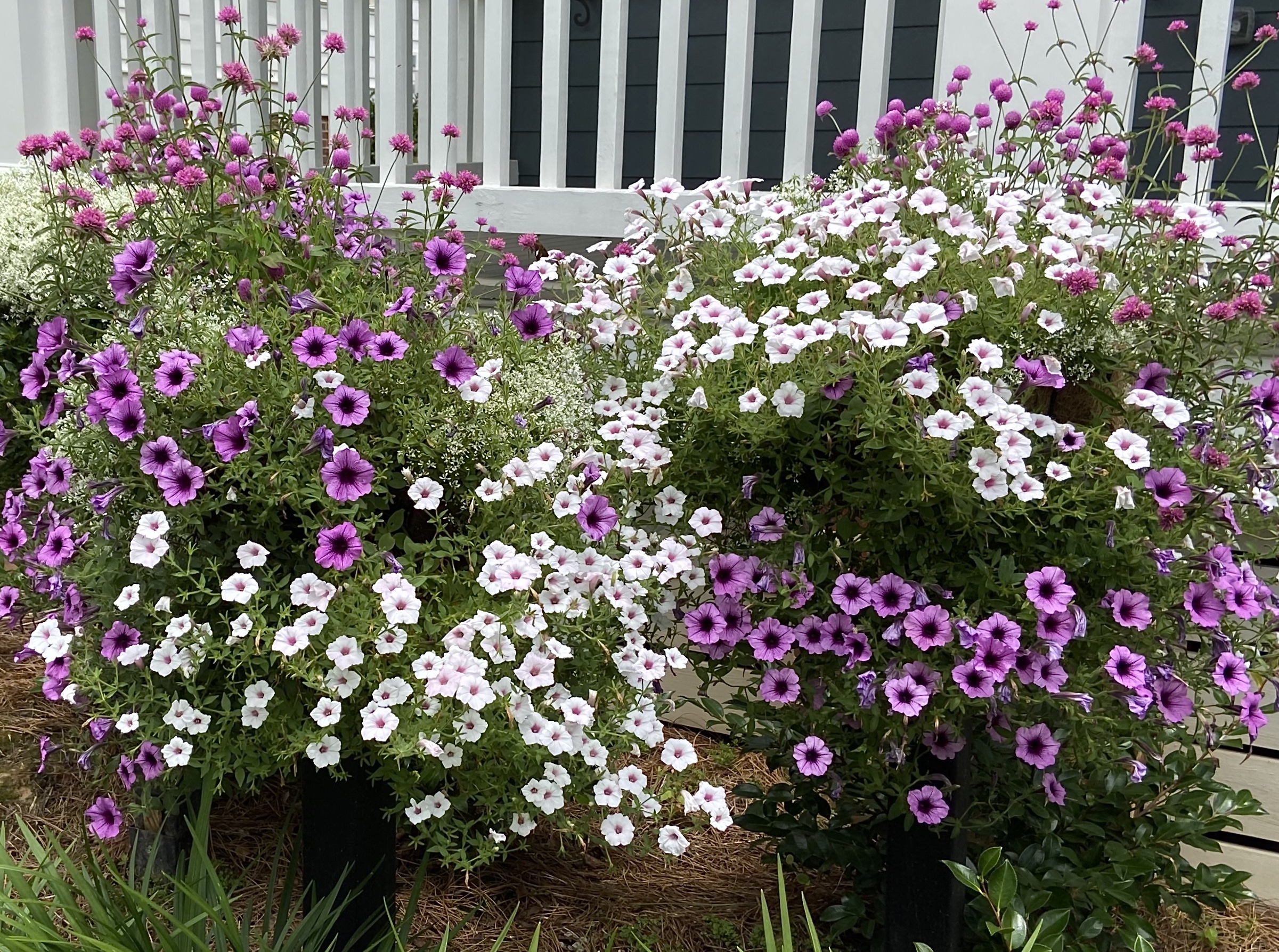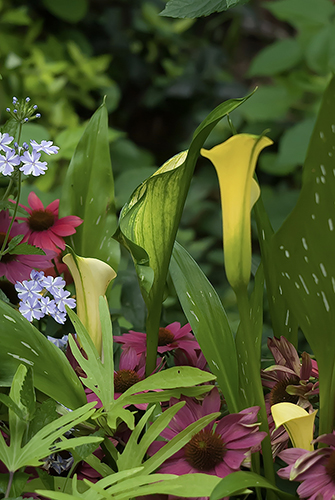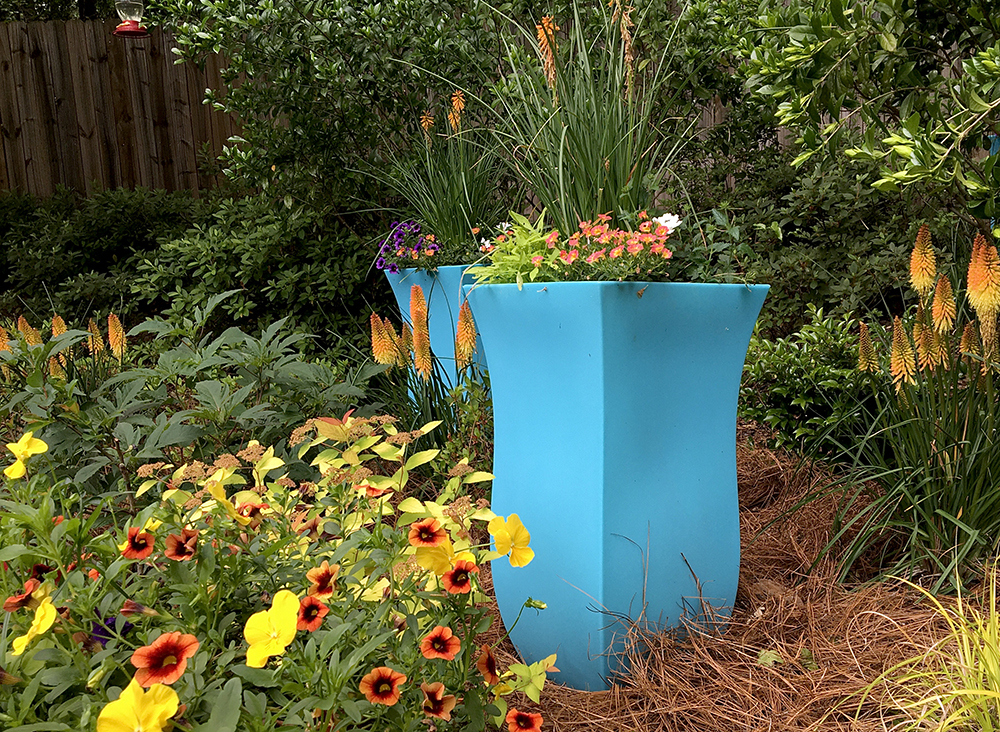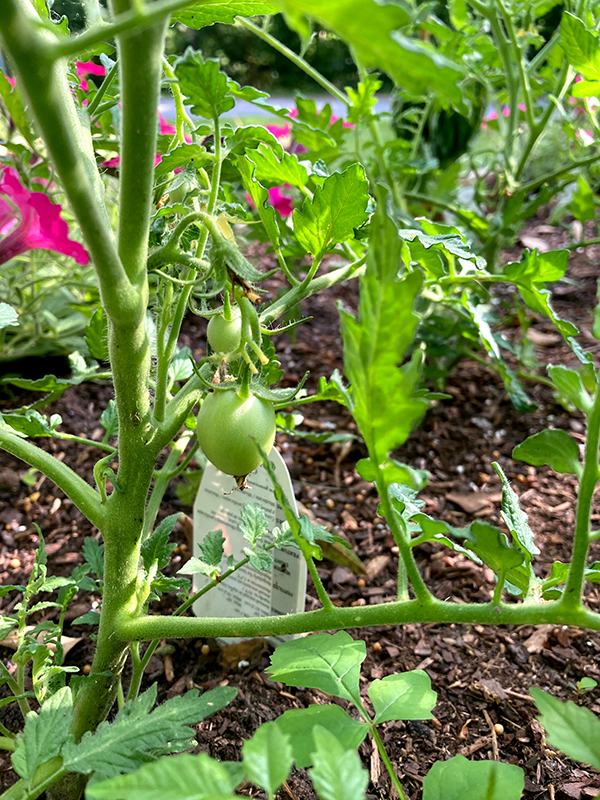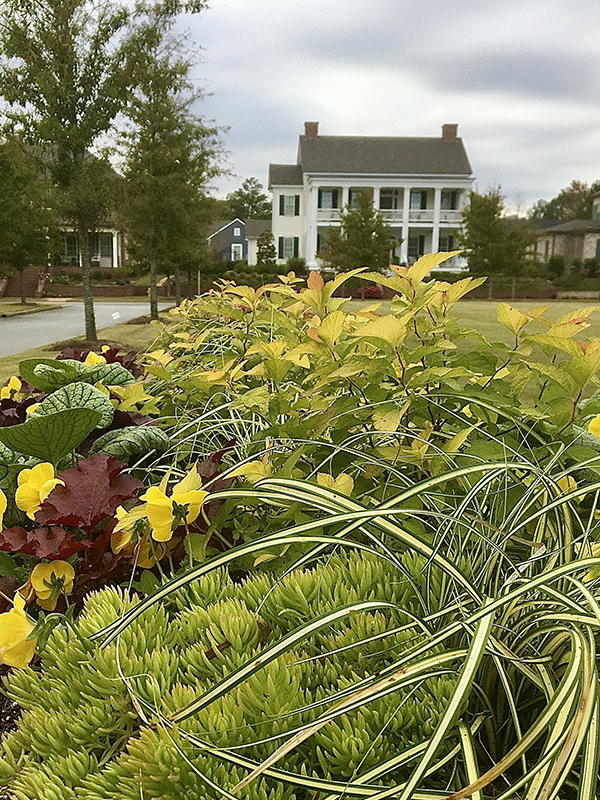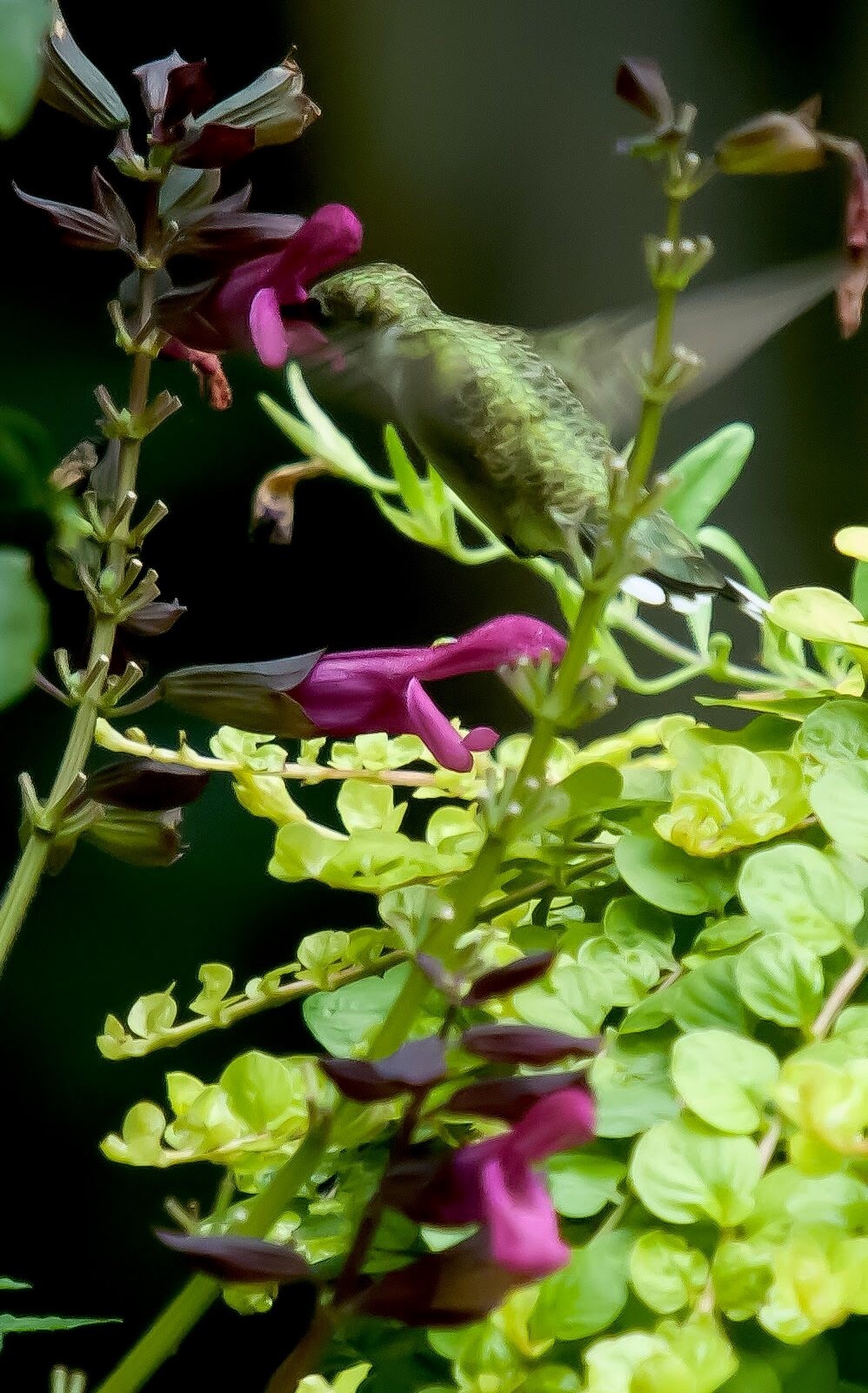Southern Gardens with Norman Winter
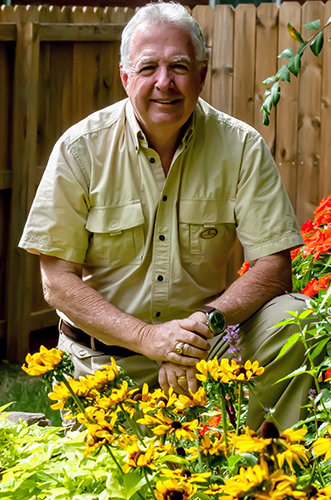
Norman Winter “The Garden Guy” (@normanwinterthegardenguy) is a southern gardening specialist who has been evaluating plants in Texas, Mississippi and Coastal Georgia gardens for the last three decades. He is recently retired as the Director of the University of Georgia’s Coastal Georgia Botanical Gardens in Savannah and was previously an extension horticulturist and coordinator for the Mississippi Medallion Award trial program.
When asked, Norman is happy to trial varieties being considered for the Heat is On™ program, a line of plants that are recommended especially for the South. As a person who has gardened in the South for many years, Norman can spot plants that are more than just beautiful--he realizes they need to be tough and rugged to endure the southern heat and humidity.
Norman is especially passionate about plants that are champions for pollinating bees, butterflies and hummingbirds, which he photographs with amazing precision and beauty. Truffula™ Pink Gomphrena is one of Norman’s favorite plants for pollinators. Annuals with tropical flair like Heart to Heart™ caladiums are also favorites. We appreciate our long-standing friendship with Norman, and the photographs of our plants that he has shared with us throughout the years.
Norman Winter ‘The Garden Guy’
Horticulturist, Author, Speaker
Follow me on Facebook @NormanWinterTheGardenGuy
for more photos and garden
Articles:
(click on the bullets below to jump to one on the following articles.)
Pinky Winky Prime® This Little Pinky Can Get 108" Tall
In the past few months, we have talked about soil improvement, sunlight, and managing water issues in the landscape. For the rest of the growing season, we will be selecting our choice of new plants for the year. I want to direct your attention to the new hydrangea making its debut this year, Pinky Winky Prime® Panicle Hydrangea, Pinky Winky Prime® has already been a champion and this prime, as they say, will take it to prime time. It is growing big, up to 108 inches in height, with an equal spread. This is a size you can build some dazzle around. Yes, hydrangeas deserve partners too!
But first, notice I said it had already been a champion before going prime. Though recommended for zones 3 to 8b, it was also tough and incredible at the Coastal Georgia Botanical Gardens in Savannah, GA. Here is where it was or is a champion and much overlooked. The way the blooms are structured it has an affinity for attracting pollinators such as bees and butterflies.
This allows every gardener to use its beauty for good concerning pollinators and choose companions that dazzle and enhance the habitat. Whether you have a rain garden setting or an area where you have improved your soil, preparing for this event is your time to shine.
The world is your oyster, so to speak; you can select native partners for the Pinky Winky Prime® such as Joe Pye weed and Rudbeckias. Or, you can go with the Proven Winners.
The Garden Guy’s Favorites For Southern Garden Wildlife
Pinky Winky Prime is making its debut this year and will be a large attraction to the garden attracting bees and butterflies. |
You can choose to go a habitat look with Joe Pye weed and your favorite rudbeckia. |
Proven Winners new Meant to Bee Queen Nectarine agastache, Rockin Playin the Blues salvia and Luminary Ultraviolet phlox make perfect partners for Pinky Winky Prime or Limelight Prime shown here. |
Planting season is here and we all have a lot of wants like fragrance, tough and persevering, able to help with erosion and being a benefit to bees, birds and butterflies. That’s a tall order but believe it or not, there is a group, call them the A-Team or All-Stars that will do almost everything you wish. They each have that strong native DNA running through and through.
Virginia sweetspire - Itea virginica or Virginia sweetspire is a good place to start. Proven Winners offers three varieties of Fizzy Mizzy® sweet spire, Itea virginica, Little Henry® Sweetspire, Itea virginica and Scentlandia® Sweetspire, Itea virginica, all about the same height, each boasting fragrant blooms attracting pollinators. They are thicket-forming, making them great for erosion, rain gardens, dry creeks that occasionally flow, and a long-lasting fall of bronze-red leaf color.
Buttonbush - Next is Cephalanthus occidentalis or buttonbush. In the wild, these are often found growing on the water's edge and are huge. Sugar Shack® Buttonbush, Cephalanthus occidentalis has changed all of that. The exotic-looking fragrant flowers are born all summer on a 4-5 feet tall plant. It too forms a thicket all the while bringing in bees and butterflies to the nectar. If grown at the water’s edge, the seeds that form may feed visiting waterfowl.
Summersweet—No plant brings more joy to the Southeast than the Clethra alnifolia or commonly called summer sweet. You just want to hang around and enjoy the aroma. You’ve got two great choices: the compact Sugartina® 'Crystalina' Summersweet, Clethra alnifolia and the taller Vanilla Spice® Summersweet, Clethra alnifolia. Summersweet forms thickets in moist soil or rain gardens and is a bee and butterfly magnet.
Winterberry hollies - Proven Winners has become the home of the Ilex verticillata or winterberry holly. Red berries like Berry Heavy® Winterberry Holly, Ilex verticillata and Berry Poppins® Winterberry, Ilex verticillata are favorites. Winterberry hollies are dioecious meaning female plants bear berries and therefore you will need Mr. Poppins® Winterberry, Ilex verticillata. Hollies are also thicket-forming in moist locations.
Luscious Lantanas The champions for butterflies and hummingbirds at The Garden Guy’s house are the Luscious, lantanas. I was in zone 8a but recently moved to zone 8b. I am entering my 5th year with the orange Luscious® Marmalade, Lantana camara, yellow Luscious® Citron™, Lantana hybrid, gold Luscious® Goldengate™ Lantana camara, multicolored Luscious® Citrus Blend™, Lantana camara and Luscious® Royale Cosmo, Luscious® Royale Cosmo, Lantana camara. I have not lost one yet to winter even though rated to zone 9. Some are in heavy soil on a slope, some whose soil looks like it came from another planet and some in rocks and gravel. These are all award winners and the best in the market.
Rockin'® Salvias - Likewise, Rockin'® salvias are rated zone 9 but I am in my 4th to 5th year depending on the release date. I am growing Rockin'® Deep Purple, Blue Suede Shoes, and Fuchsia which are similar. All have survived temperatures in the low teens and clumps now approaching 3 feet. Blooms are irresistible to hummingbirds and most larger butterflies.
Meteor Showers verbena with their lavender blue flowers and white hydrangea blossoms seem like a natural on a bright sunny day. |
Hydrangea bloom with pollinator. |
The Garden Guy’s Chores for March
- The Garden Guy is cutting back grasses and grasslike plants to the crown. This includes Carex, Acorus and Kniphofia too.
- Cut back hydrangea paniculata now by at least a third or even a half, including removing twiggy side growth.
- All Rockin salvias are now 6 to 8 inches tall so good to go on removing old dried canes.
- Luminary Phlox paniculata are 3 inches tall now remove old dried bloom stalks.
- Wait to prune re-blooming hydrangeas until you see what Mother Nature has given you from the standpoint of frozen tips.
Rain Garden

Firefly Peach Sky is trendy in that it is the Pantone Color of the Year but also that yarrow is perfect in a rain garden situation.
A rain garden's basin collects and holds storm water for a short period of time, usually less than 24 hours. The soil absorbs the water and any pollutant particles. Proven Winners perennials like Upscale Monarda, Tuscan Sun heliopsis, Luminary phlox, Firefly yarrow and Storm Cloud amsonia, the Landscape Perennial of the Year, could all fit in a rain garden and help filter out the pollutants while providing water to the stems and leaves. The water evaporates back into the atmosphere from the plants.
|
|
|
By using native plants like these, rain gardens provide important habitat to a broad array of wildlife, including bees, butterflies, spiders, frogs, toads, lizards and birds. Even though our demonstration Rain Garden was small it was like a miniature zoo, creating excitement and photo opportunities for those of all age groups. Since these are natives that are adapted to the climate and soils, they require less water and need little or no fertilizers and pesticides, which is a plus for the environment.
Even perennials like the Color Coded coneflowers would be well suited to locations higher up the basin, the so-called wall of the rain garden. While I am touting perennials for pollinators, Proven Winners also has shrubs that make almost every state’s list for best rain garden plants.
Imagine a rain garden where the Fizzy Mizzy or Scentlandia sweetspire (Itea) is blooming and permeating the surrounding area with its intoxicating fragrance. Then, there are the equally fragrant and exotic looking Sugar Shack buttonbush (Cephalanthus) and Vanilla Spice summersweet (Clethra) offering you the best of all worlds, native perseverance, beauty and a pollinator haven.
You may have a natural area that would not require much work from the standpoint of machinery or dirt moving. You will need to make sure the plants you select are suited for the sunlight you will be providing. Rain Gardens combine the benefits of reducing or managing stormwater runoff with the appeal and scenic beauty of a garden. This has the potential of being the most enjoyable feature on your property. I hope you might give it a try. Below are two university publications to help you get the ball rolling in the thought process.
http://extension.msstate.edu/rain-gardens
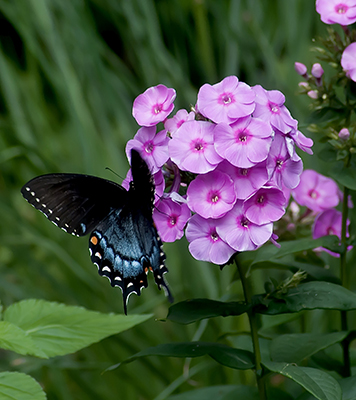 Phlox of all species including the tall garden phlox are found in such low areas. Luminary Prismatic Pink is making its debut this year and hand has already demonstrated it is on the butterfly menu. | 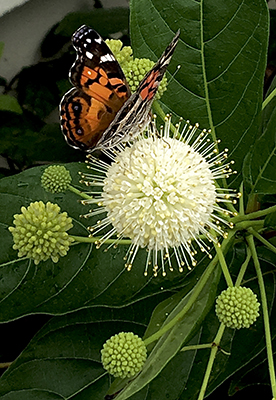 Shrubs are also on the list for Rain Gardens and one of the best is Sugar Shack buttonbush (Cephalanthus). The flowers are exotic and fragrant and its compact habit will help it fit in any size of Rain Garden. |  The native Clethra or summersweet varieties like Sugartina Crystalina fits even small rain gardens too. You will be mesmerized by the fragrance as the butterflies feed with passion. |
Landscaping for Energy Conservation
It’s been in my lifetime that appliances started coming out with EER ratings. This is the Energy Efficient Rating from A through G and usually has an associated number like 10.4. Each appliance in your home including major heating and air-conditioning systems probably has these in bright yellow and easy to read. What about the landscape, what energy-efficient rating would it get?
Temperatures are fairly moderate now across the country as are utility bills. Polar Vortex rumors were flying fast the past couple of weeks, but we all know what is ahead for the summer. We can take decisive action this spring which will pay great dividends in subsequent years.
Proper landscaping is often overlooked when one thinks of energy conservation. Our landscapes can provide us with energy savings while offering an aesthetically pleasing view of our homes. Trees and shrubs help settle out, trap and hold particulate pollutants that can be harmful to humans. They also release oxygen for us to breathe. Besides that, a well-landscaped property is more desirable than one with no landscape and surveys show they add value at the time of sale.
Properly placed trees alone can reduce our air conditioning needs by up to 30 percent, reducing the amount of electricity required to cool our homes. We can also reduce our heating bills in the winter. Today, neighborhood after neighborhood is being built where all trees are being bulldozed. The homes are incredibly beautiful, but the landscape is a clean slate, or in many cases, they receive a bare FHA minimum in trees and shrubs.
An energy-efficient home landscape doesn't just happen by planting. Before installation, one must understand the position of the sun during the seasons as well as the plants' characteristics. In mid-December the sun rises in the southeast and stays relatively low before setting in the southwest. In June the sun rises in the northeast and stays high during the day before setting in the northwest. These angles greatly influence the amount of sun that strikes the house.
To plan for shade from the hot summer sun, consider that trees on the east and northeast provide morning shade in the summer. Trees placed on the west and northwest exposures of the house provide shade during summer afternoons. We can also reduce heat absorption by having shrubs or vines cover the east or west walls. Vines may be allowed to grow on masonry, brick, or concrete. Vines growing on a trellis would be the ideal situation for a wood exterior home.
We can also plan to allow the warm sun to hit our home during the winter. The most important factor to consider is placing deciduous trees on the south side of the house. A deciduous tree loses its leaves, allowing the sun to warm the house.
Evergreens like the holly, juniper, arborvitae and Chamaecyparis or false cypress also play a vital role in the winter landscape. Placed on the north or northwest side of the house, these evergreens not only look pretty and serve as the bones of the landscape but block the prevailing winds of the cold blue norther. They will block the wind to a distance twice their height.
The prevailing wind during the summer comes from the Gulf of Mexico. To take advantage of these cooling breezes, we must not plant ‘thick screens’ on the southwest or south side of the property. By pruning tall deciduous trees to a height equal to the roof drip line we can direct those breezes into the house.
It will soon be the time of the year when your garden center has the best selection of healthy, fresh, container-grown trees and shrubs. Planting this spring may not directly influence this year's utility bills, but certainly will in the future. It will also add dollars to the value of your home.
Remember that newly planted landscape trees and shrubs will grow and mature to much larger heights and widths. Be sure to place them according to the mature size which you expect. Follow me on Facebook @NormanWinterTheGardenGuy for more photos and garden inspiration. A well-planned landscape can be beautiful, energy efficient and add value to your home at the time of sale.

This shady-like forest is on the north side offering home protection from winter winds, it is comprised of both evergreens and deciduous trees. In the summer the amount of light is perfect for almost any type of plant or flower along the wall and those that are shade lovers further back.
The trees have been limbed up above the drip line of the home allowing for cool summer breezes but also maximum enjoyment from the colorful bark.

The deciduous trees in the distance show great fall color now but will soon lose their leaves allowing the warm winter sun to reach the home.
This is the time to reduce the height and width of evergreen shrubs and even do a rejuvenation pruning if needed.


Southeast In Drought - Time for Xeriscape Principals
With rains being almost non-existent for much of the region this past summer many of us have gone back to thinking about tough plants as well as water conservation.
Such was the case in the late 1970s, which led to the Denver Water Department developing the term "xeriscape" in 1981.
At that time, they realized that during a severe drought, a $25 rise in the monthly water bill meant an extra 25,000 gallons of water going to the yard. That 25,000 gallons would fill a 1,800 square foot home two feet deep in water. So, you can only imagine the amount of water used when bills went up by $75 to $100.
Xeriscape means dry landscape, but many incorrectly think it to be "zero scape." I believe the seven aspects to xeriscaping are fundamental to good landscaping. If you are building or buying a home and the landscape is yet to be installed, try these xeriscaping principles.
- Plan from the start that the landscape is to be water efficient.
- Do a soil analysis to see if soil improvement needs to be done for better water absorption and holding capacity.
- Lawns use more water and require more maintenance than groundcovers, so design the lawn for practicality. I'll admit I still have too much lawn area.
- Choose appropriate plants that are in tune with the Gulf Coast. You don't have to plant cactus and you don't have to go all natives, but choose plants known to be tough and free from constant problems.
- By using an efficient irrigation system, you can instantly save 30 to 50 percent on your water bill.
- Use mulches to help water penetration and prevent water loss through evaporation.
- Use appropriate maintenance practices. Keep your grass taller, water deeply but less often, and keep weeds out of your beds (they use water too).
Most of us have felt like droughts will never really affect us. Unfortunately, we are there now and no one knows when it will subside. A look at the drought map shows that much of the Southeast is in the midst of an epic weather event.
So what about those of us who planted 57 azaleas and seven camellias last year, and have been trying to get grass established? The truth is water is critical to those plants' survival. The first two years trees and shrubs are in your landscape determines whether they get well rooted and established, and this takes water.
It is during times like this that a good, reputable irrigation company is worth every penny spent. Zoned irrigation systems allow micro-jet watering or drip to shrubs, while more conventional sprinklers are targeted to lawns. These allow us to maximize efficiency so we don't have to water what doesn't need it, and we can put the water directly where it is needed most.
With the severe drought still on us, should we reconsider our landscape design, plant selection and irrigation methods for 2024? You bet. Proven Winners sells not only the best in tough plants but also Water Wise Drip Irrigation Systems and self-watering AquaPots that has revolutionized container gardening. Follow me on Facebook @NormanWinterTheGardenGuy for more tips and garden photos.
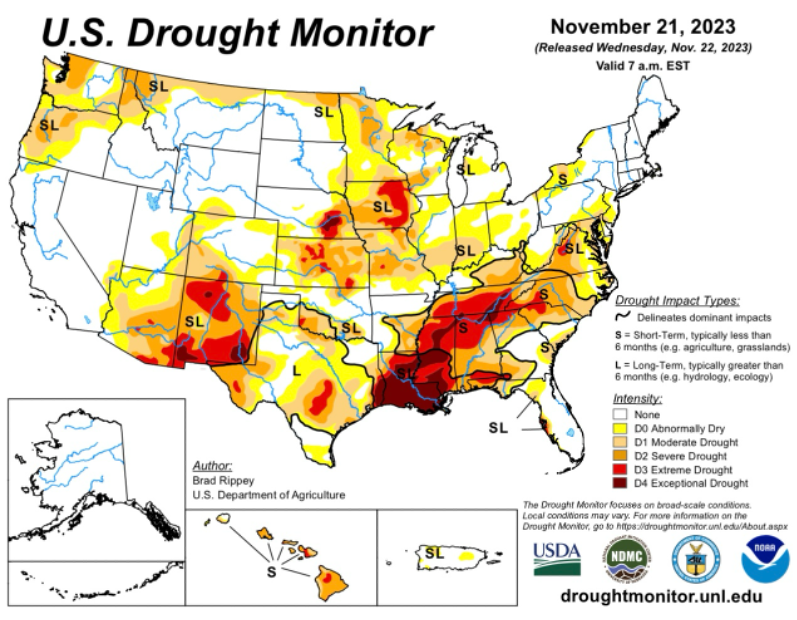
This drought monitor map of the United States shows much of the south is having an epic type event.

Choosing tough plants like Meant to Bee Queen Nectarine and Royal Raspberry Agastache, Rockin Playin’ the Blues salvia, Pyromania Blaze kniphofia and Truffula Pink gomphrena means you have beauty and drought tolerance.

This bed is geared toward pollinators and drought tolerance. Augusta Lavender heliotrope, Heat it Up Yellow Gaillardia, Rockin Blue Suede Shoes salvia, Meant to Bee Queen Nectarine and Meant to Bee Royal Raspberry Agastache come together nicely.

Mulches can be beautiful too. Tumbled blue glass mulch mimics a river through the more traditional pine bark mulch.

Proven Winners self-watering AquaPots are beautiful and with a lower reservoir that provides water as needed to the plants.

Proven Winners also sells Water Wise Drip Irrigation Systems allowing you to maximize your conservation.
Go Green for Your Garden Improve Your Soil with Compost
|
|
This bed is having compost tilled in and new azaleas will soon be planted. |
This large pile of compost will soon be placed in river like beds for planting Louisiana iris. |

These Louisiana irises are blooming and in native soil that has had a good layer of compost incorporated to provide the ideal environment for growth.
A drive around neighborhoods this time of the year and will become quite apparent that a gold mine of soil amendments is being placed at the roadside. I suppose it has always happened, but with the advent of paper lawn refuse bags it is now much more apparent. The scene is surreal.
On the positive side, some County Public Works departments in Georgia and hopefully your state too composts this waste and gives it back to the public. Does your county?
I suppose the real question is: Do you take advantage of it? Those, dozen or so bags of leaves at the street side have the potential of helping you start a compost pile that will pave the way to a great new azalea bed, cottage garden or tropical paradise.
When I was Director of the Coastal Georgia Botanical Gardens, we took advantage large loads of free compost to build what we called Rivers of Iris, a leading site in the country displaying Louisiana iris.
My children grew up learning the phrase, "the key to the green thumb is how brown it gets first, in soil preparation." Compost, that dark crumbly organic material, is the key ingredient to the garden recipe.
Incorporating organic matter helps loosen tight heavy soils so they will drain or improve sandy soil's ability to hold water and nutrients. You win no matter your soil type.
I remember well a master gardener friend in Ocean Springs, Miss., who took this to heart. The last time I was at his home I was as impressed by his compost bin set-up as I was by his glorious gingers and firespikes blooming. This was the best compost setup I have ever seen in a home garden. It was a series of three bins holding different stages of decomposition.
The system was larger than most gardeners use because he could not stand to see what others were throwing away. He would drive the neighborhood, picking up their leaves, clippings and other organic treasures to place in his compost system.
Even though your county might pick it up, it is a good idea to have your own. At home we can do the same thing on a smaller scale by layering leaves or grass clippings 3-8 inches tall, covering them with 2-3 inches of top soil, and repeating the layers. The grass clippings provide nitrogen that aids in decomposition. It's not a bad idea to add a half cup of ammonium nitrate per eight bushels of leaves.
You may be worried that compost piles will stink, but under proper conditions they do not have an unpleasant odor. A true gardener relishes that earthy fragrance. Keep the pile moist, not soggy, and well aired for good microbial growth, good heating and decomposition. Lack of moisture and air will reduce microbial activity. Too much moisture may cause undesirable decomposition, which can lead to foul odor.
Compost piles can reach temperatures of 150 degrees inside from the heat given off by the microorganisms. I love seeing large piles of compost on a crisp morning. They will be smoking as if they are cooking. Actually, they are cooking up something good for us to use in the landscape.
With proper nitrogen and turning of grass clippings, the process can take as little as 10 to 12 weeks. Leaves take a little longer, and larger pieces of plant material, such as wood chips or limbs, may take six months to a year. You will be amazed at the potential of bark to turn into organic treasure.
You don't have to have big bins - let the size fit your yard. One of my favorite methods of building a compost bin is to use discarded wood pallets. You can easily make a square bin from four pallets by wiring the corners together.
Around my area of Georgia, we will be raking leaves and pine straw for quite some time. This is the reason some of our streets are lined with paper bags or plastic bags as well as the giant green movable bins for automated pick up. But even if yours are already gone, spring will be coming sooner than you think and grass clippings will either become your trash or treasure.
I cast my vote for treasure, for "Going Green for the Garden." I promise you all great gardens have one thing in common and that is good soil.
Perfect Scores For Truffula™ Pink
 Mass planting Truffula™ Pink 12-inches apart creates a 2-foot tall, |
A Perfect Score award in a university plant trial is quite an honor and makes a real statement about performance. Then consider when that same plant wins Perfect Score in a dozen states, spread across the country. Oklahoma State, University of Minnesota, Mississippi State, University of Tennessee and Iowa State to give you a sampling. Add on the FlameProof Plant Award for the Dallas Arboretum and you will realize we are talking about a tough plant. I don’t know how many plants can tout such a record, but Truffula™ Pink gomphrena has stood the test.
Even with a trophy case representative of a summer prizefighter, you would have to wonder if Truffula™ Pink could handle a summer as torrid as 2023. The Garden Guy started off the calendar year telling you Truffula™ Pink gomphrena was Proven Winners National Plant of the Year. At the time I mentioned it had won over 50 awards, well you can now run that total up to 81.
It has been the pollinator champion at my house for at least 4 years. The summer of 2023, however, will go down as a bench mark year. This growing season made me realize without any equivocations that it is the toughest flower you will ever grow, and if you do it up right it will be the prettiest too!
By the time you read this, commercial plots I have been watching will be roaring past 150 days of what I would call full bloom. I say commercial plots but what I am referring to are large, high traffic beds at the entrance to a shopping and residential community.
It is a benchmark type year because it has been hotter and dryer than most of us have experienced. It has turned The Garden Guy into a real whiner. But Truffula™ Pink Gomphrena has outperformed any other commercial plantings in town.
The design of the beds also taught us all something that we knew along, but haven’t talked about it enough. If I get a complaint on Truffula™ Pink it is about lodging. That means it falls over. Almost always this is associated with being a single plant that will be the tallest one in the bed or in the container. In other words, over time it becomes a wind sail.
In all of these beds they were mass planted together and encircled by yellow gold/lantanas. The Truffula™ Pink plants gave structural support to each other in addition to the extra strength provided by the lantanas. Another real shocker was the show.
Truffula™ Pink blooms are borne on a see-through plant, on somewhat airy stems, and though the bloom color is an iridescent hot pink, one or two plants simply can’t dazzle enough for the car passengers to take notice in a competitive traffic situation. A couple of dozen plants in a full bloom display however, and on one of those searing triple digit temperature days, makes you look in astonishment and wish for something similar at your home.
Since Truffula™ Pink is such a butterfly magnet, The Garden Guy will always want to incorporate it into habitat and cottage type garden designs. I will use taller plants like Rockin’® Playin’ the Blues salvia, and Meant to Bee® agastaches not only as colorful partners but support for each other in the face of storms with rain and wind.
Truffula™ Pink gomphrena needs full sun and fertile, well-drained soil to really perform to its capability. Letting these plants sit in wet soggy soil will be a crime. Plan on spacing your plants about 12-inches apart and add a layer of mulch. You can expect them to get two-feet tall and bloom until frost. I have never had the need to deadhead.
Truffula™ Pink is considered an annual and one that is worth every penny. I garden in zone 8 and most years I will see a spring return of at least half of the plants. They are considered perennial in zone 9 and warmer. Those of you who like to cut flowers for the vase will find Truffula™ Pink a perfect and long-lasting addition.
|
|
|
Temple of Bloom®-The Most Exciting Small Tree
The White M hairstreak is just one of several species that will be seen feeding including Monarchs, Skippers and Swallowtails and others. |
|
|
Since fall is the best time to plant trees and shrubs, I want to give a shout out to Temple of Bloom®, seven-son flower. This small tree is like the proverbial ‘tree of life’. Every pollinator in the neighborhood will find it and hang out as well as those creatures that hunt pollinators. It is like a miniature version of the Serengeti. It has been hard for The Garden Guy to take the camera and binoculars and go indoors for fear of missing some action-packed moments.
It is known botanically as Heptacodium miconioides and you will find it in the Caprifoliaceae or honeysuckle family. Fear not, remember it is not the least bit invasive and remember it is a shrub or small tree. One of the unique aspects of the Heptacodium genus is that there are no other species, just the miconioides.
The thousands of white blossoms produced in late summer do impart a tantalizing fragrance. A rare horticultural event takes place once the petals fall. The Missouri Botanical Garden describes it like this: “Flowers are followed in the fall by an equally showy (if not showier) display: small purplish-red fruits crowned by very showy rose-pink calyces which elongate after bloom and last into fall”. The fall display looks much more red than pink to me but perhaps it’s determined by climatic conditions.
If all of that isn't enough then consider it has attractive gray winter bark that exfoliates to reveal showy tan/brown inner bark. The tree is fountain shaped and the leaves which don’t get talked about enough, stand out by offering a unique texture when compared to other small trees in the landscape. They typically reach 10 to 20-feet tall and half as wide. I’m in my 3rd year and it has now topped my 8-foot fence. This is also my most noteworthy bloom, my goal is to develop a multi-trunk tree via selective pruning.
|  The Temple of Bloom® grows fast and ages dramatically with gray exfoliating bark revealing the tan/brown inner layer. The Temple of Bloom® grows fast and ages dramatically with gray exfoliating bark revealing the tan/brown inner layer. |  Pollinators of all sorts will visit the fragrant white blooms including these Eastern Carpenter bees. Pollinators of all sorts will visit the fragrant white blooms including these Eastern Carpenter bees. |
You will also need to keep the camera handy as the flowers are loved by hummingbirds. The next shocker is the number of species of both bees and wasps. I assure you it is more than you knew even existed. While you might think this poses some danger to you or the children, you will notice they have one thing on their mind, and it is hitting on the blooms.
The Garden Guy is realizing he needs an entomology refresher or for sure to take his butterfly, bee, and wasp identification up a couple of notches. All of this makes the Temple of Bloom® or Seven-Son Flower, the ‘tree of life’ and simply remarkable. Follow me on Facebook @NormanWinterTheGardenGuy for more photos and garden inspiration.
|
|
Bones, Berries and Bark - The Keys to the Winter Landscape
 The Dandy Man Color Wheel® Rhododendron offers large blooms that age from red to pink and white and offers the landscape incredible structure and evergreen leaf texture. The Dandy Man Color Wheel® Rhododendron offers large blooms that age from red to pink and white and offers the landscape incredible structure and evergreen leaf texture. |  Proven Winners is introducing Just Chill Red Tip™ camellia in 2024. It has glossy leather leaves sporting burgundy-colored new growth yielding dazzling fall pink blooms. |  Proven Winners has become Loropetalum headquarters and while some offer deep burgundy evergreen foliage, Jazz Hands® Variegated offers leaves of burgundy and cream splashes. Proven Winners has become Loropetalum headquarters and while some offer deep burgundy evergreen foliage, Jazz Hands® Variegated offers leaves of burgundy and cream splashes. |
A lot of people dread winter because the landscape can retreat from its beauty to one that looks more like Siberia. It doesn’t have to be that way if you can remember the three B’s, Bones, Berries, and Bark.
The bones are the evergreen shrubs that serve as the structural foundation of the garden. The winter landscape can look lush and alive once we incorporate evergreen shrubs in repetitive layers throughout the garden. Here is where you put into practice the theory, ‘making the landscape look good in January will allow all of the other months to fall into place like dominoes’.
Proven Winners® has many choice evergreens for the Southern landscape. These aren’t just evergreens but those that offer incredible texture as well as those that are gold, red, variegated and more. This allows you to create true landscape magic.
There are those like the Dandy Man Color Wheel® rhododendron that has proven itself well suited to the South with large incredible flowers that change from red to pink and a pristine white. Yet the structure or habit is so wonderful you would want it if it never bloomed.
 Fluffy®, a gold selection of western arborvitae shows its contrast grown with deep greenleaf hollies. | 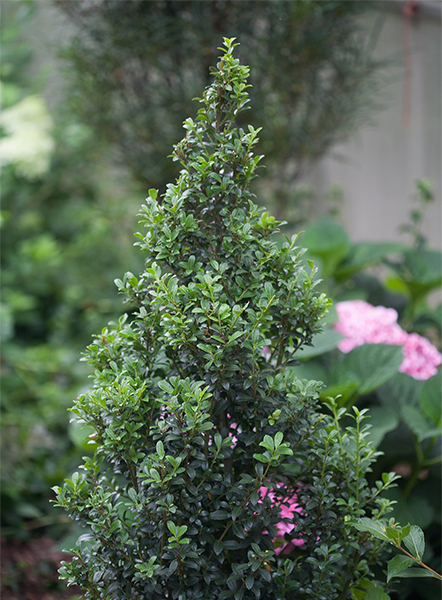 Sky Box® Japanese Holly (Ilex crenata) offers the landscape an incredible Christmas tree-like habit reaching 5' tall and 3' wide. |
|
Proven Winners is introducing Just Chill Red Tip™ camellia in 2024. With its glossy leather-like foliage, this camellia will bloom in the fall with dazzling pink flowers. It will also offer a distinct look in the garden with a 5 to 8-foot height and a 6-foot spread with growth that is green with burgundy new growth. Partnered with the golden needled Fluffy® western arborvitae or one of the Jazz Hands® loropetalums will bring joy and interest to the winter landscape.
The winter landscape would not be complete without the addition of hollies. Hollies with their leaves constructed of thick waxy cuticles offer the best in winter cold-hardiness and drought resistance in summers like 2023. Many thinks of Proven Winners as the home of Supertunia® but it’s also the home of Sky Box® Japanese Holly. This 5-foot-tall holly with a 3-foot spread looks like a picturesque fairy tale Christmas tree in the landscape. You will want to repeat these throughout the landscape. Anna’s Magic Ball®, a round, golden arborvitae would create a ‘can't take my eyes off you’ contrast throughout the year even more so in winter.
 Berries bring the winter landscape to life in color and in songbird feeding activity. Proven Winners offers the very best in Winterberry hollies (Ilex verticillata) that are known to feed 48 species of birds. This one is Berry Heavy Red. |  Proven Winners is also your headquarters for Viburnums. This incredibly beautiful variety is Brandywine and selection of Viburnum nudum or Possumhaw viburnum native to 30 states and Canada. |  Proven Winners also offers the incredible Temple of Bloom tree which reaches 10 feet tall and wide. Fragrant white blooms bring in butterflies and hummingbirds in late summer giving way to showy red bracts. |
|
But hollies are also known for berries, the second of our key ingredients. The Winterberry hollies, known botanically as Ilex verticillate, are the showstopper in the winter. Proven Winners has red berry selections like Berry Poppins® and Berry Heavy Red® and golden berry selections too like Berry Heavy® Gold. Winterberry Holly is a champion too as 48 species of birds will eat the berries.
Proven Winners has become a one-stop shop for Viburnums and The Garden Guys selects Brandywine™, a variety of the native Viburnum nudum as the most beautiful in the garden. Viburnum nudum is native to 30 states and parts of Canada. This viburnum, called Possumhaw viburnum by the Ladybird Johnson Wildflower Center, attracts butterflies in bloom and all sorts of birds when berries are ripe.
So, we’ve covered B for bones (or evergreen foundation plants) and B for berries. Now consider the importance of the last B and that is for Bark.
In the South, we consider crape myrtles, birch, and lacebark elm as the champions for showy exfoliating bark. Proven Winners has introduced some competition with a tree that is still on the new list. The tree is Seven-Son-Flower, or Temple of Bloom®, and is a must-have tree for zones 5-9.
Known botanically as Heptacodium miconioides this tree offers something for the landscape 12 months of the year. Clusters of fragrant white flowers bring in hummingbirds and butterflies in late summer and early fall and the drop to the ground reveals showy red bracts. Then with leaf and flower fall the exfoliating tan bark is revealed. It will reach 10 feet tall and as wide which is perfect for landscapes of any size.
Indeed, the winter landscape doesn’t have to look like the frozen tundra; it can be a real showplace if you have the three B’s. Bones of evergreen foundation plants, in repetition and layers and variety of texture, Berries on evergreen and deciduous shrubs, and showy Bark create contrast. As we head into fall this is the best time to plant. Follow me on Facebook @NormanWinterTheGardenGuy for more photos and garden inspirat
Dog Days Transformation with Heart to Heart® Caladiums
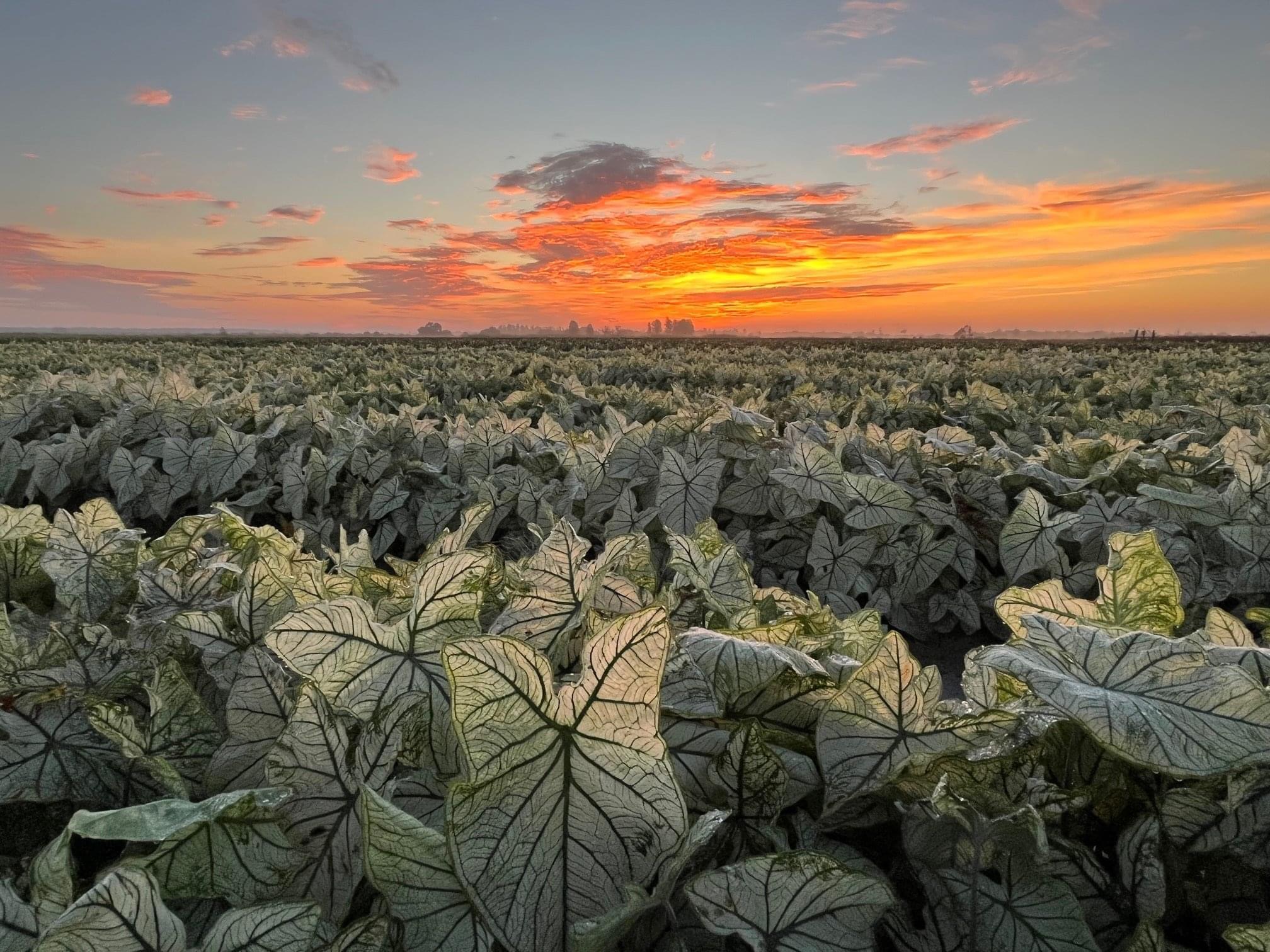
Commercial caladium production in Florida is a testimony to the rugged nature and beauty of our
'Heart to Heart' caladiums. NOTE: The Lake Placid, Florida Caladium Festival is July 28-29.
If I asked you to name summer flowers for the brutal heat, you would quickly name plants like Luscious®️ lantana, Vermillionaire®️ cuphea and Sunstar®️ pentas, and you would be correct. When the temperature sends you indoors and has you wistfully looking forward to the first freeze, think Lake Placid.
No, not to New York where snow covers the ground and the Winter Olympics are held, and they boast a lengthy growing season of 96 days. Instead, I am referring to Lake Placid Florida, where the Caladium Festival is held at the end of July and they boast a growing season of 340 days. Not far away, 48 miles to be exact in Lake Wales FL, the Bok Tower Gardens hosts an annual caladium walk during the month of August.
 Caladium landscape partnerships are only limited by your imagination. Here Heart to Heart®️ 'Bottle Rocket', Heart to Heart®️ 'Snowdrift', Surefire®️ Red begonias, Diamond Snow®️ euphorbia and Unplugged®️ So Blue™️ salvia come together in a magical setting. |
|
The average daily high temperature during June, July and August is 90 degrees. But this area knows quite well when the soaring summer heat gets going, caladiums like the Proven Winners Heart to Heart series start to dazzle with unparalleled beauty. This plant that is native to the tropical South and Central America is among the toughest available for the home landscape.
This year The Garden Guy went into the season with a two-fold plan involving jumbo Heart to Heart caladium bulbs. I would plant half the bulbs in situ. I always wanted to use that phrase, meaning I wanted to plant the bulbs in place, in planned beds. In all beds I used a Twist ‘n Plant®️ auger attached to a cordless drill. This literally takes just a minute and is like speed planting.
Heart to Heart®️ 'Tickle Me Pink' caladiums and We Bit Giddy®️ hydrangeas are just a tiny sampling of the possibility of caladium and hydrangea combinations. |
Heart to Heart®️ 'Clowning Around' caladiums, Royal Hawaiian®️ Maui Gold elephant ears and Luminary®️ 'Sunset Coral' phlox make a smashing summer combination. |
Around a Windmill Palm I planted 40 Heart to Heart 'Clowning Around' bulbs in 4 quadrants, each also having Royal Hawaiian®️ 'Maui Gold' elephant ears and Luminary®️ 'Sunset Coral' phlox. Heart to Heart 'Clowning Around' is absolutely riotous in a color arrangement that no artist could duplicate. This was a Top Performer Award Winner at the Cincinnati Zoo and The Garden Guy’s house too! It is recommended for part shade to shade. Mine is getting a little more sun than that and it seems to be just fine.
On a slope in a shadier area, I planted 20 jumbo Heart to Heart®️ 'Dawn to Dusk' caladiums with Soprano®️ Orange Impatiens. Next to the impatiens, blue Let’s Dance®️ bigleaf hydrangeas serve as a scenic backdrop. Heart to Heart 'Dawn to Dusk' is considered a shade caladium and has a burnt orange patch in the leaf that echoes nicely the orange in the impatiens.
 The backlight sun shows the marvelous coloration in Heart to Heart®️ 'Clowning Around' leaves. W |  In the shade garden Heart to Heart®️ 'Raspberry Moon', Shadowland®️ 'Coast to Coast' and Shadowland®️ 'Empress Wu' hostas and Let’s Dance®️ bigleaf hydrangeas create a corner of color along the path. |
I planted another 80 plus bulbs in 4-inch containers that I had saved. I planted Heart to Heart®️ 'Raspberry Moon', Heart to Heart®️ 'Flatter Me' and Heart to Heart®️ 'Burning Heart', knowing they would all play a vital role but I just wasn’t sure where.
As I had used the EZ Scapes™️ Night and Day recipe available from Proven Winners and Walters Gardens in a shady area at the end of a path, I could tell my 4-inch containers of 'Raspberry Moon' caladiums would be perfect incorporated into the design. I already had Shadowland®️ 'Coast to Coast' hostas and 'Dark Side of the Moon' astilbe around a chartreuse-leaved anise shrub.
Heart to Heart 'Burning Heart' caladiums in three containers create a Taste of the Tropics in the late August hot Georgia garden. |
Heart to Heart 'Burning Heart' caladiums dropped in a pot with Proven Accents®️ Goldilocks Creeping Jenny, and Graceful Grasses®️ Queen Tut™️ papyrus offers late summer wow. |
In late June and early July some containers get weak looking, even more so after some heavy trimming on petunias, calibrachoas and verbenas. So, a quick fix or pick me up for the containers while everything is growing back, is to drop in a caladium. A container with Proven Accents®️ Goldilocks Creeping Jenny, Heart to Heart 'Burning Heart' caladiums and Graceful Grasses®️ Queen Tut™️ papyrus was one such stunning impromptu solution.
Heart to Heart caladiums are the beautification prescription for the Dog Days of Summer. Follow me on Facebook @NormanWinerTheGardenGuy for more photos and garden inspiration.
 A female Eastern Tiger Swallowtail visits the Color Coded One in a Melon coneflower at The Garden Guy’s house.
A female Eastern Tiger Swallowtail visits the Color Coded One in a Melon coneflower at The Garden Guy’s house.
Hosting Pollinators Is a Thing of Beauty
The Garden Guy wants to do his part to help you celebrate National Pollinator Week. If I were to write about all of the Proven Winners plants which are important to pollinators it would be about the length of the book War and Peace. My goal here is to help you focus and to maybe eliminate a few misconceptions.
Many of you may think that a garden geared to attract pollinators will look like a weed patch. This could not be further from the truth! Many people find these gardens so beautiful, they are worthy of a featuring in fine coffee table book. If you find yourself wondering where to start, I’ve got a mint of an idea.
All in the Family
In the last Winners Circle newsletter, I hopefully helped jump start you onto pollinator plants with Rockin'® salvias. These salvias are stalwart members of the Lamiaceae or mint family. Great Scott! I'll bet you had no idea you were growing a mint relative! The Rockin salvias are annuals for most of the country, but in the last few years, they have been proving to be award-winning perennials in the South. Proven Winners also has 11 more salvias that are perennials in zones 3 through 8. All of them attract bees, butterflies and hummingbirds, which happen to be pollinators too!
Upscale™ 'Pink Chenille' bee balm (Monarda) was a crowd favorite at the Metrolina Greenhouses Trial Garden Tour in North Carolina. (Photo by Dr. Allen Owings Professor Emeritus Horticulture, LSU AgCenter). |
Upscale™ 'Lavender Taffeta' bee balm (Monarda) with Graceful Grasses® 'Evergold' sedge (Carex) at The Garden Guy’s house. |
Upscale™ 'Red Velvet' bee balm (Monarda) paired with Meant to Bee™ 'Queen Nectarine' anise hyssop (Agastache) at The Garden Guy’s house. |
The Lamiaceae or mint family is huge and there are some incredible choices from which to choose. One group that is chock full of native DNA and loved by herbalists is Monarda, commonly called bee balm. Proven Winners has quietly become a major player in the Monarda market.
They have 14 varieties of bee balm including three new selections in the Upscale™ series making their debut this year. The Upscale varieties are taller and really stand out in the garden. Upscale 'Pink Chenille' blew everyone away in 2023 trials. Upscale 'Lavender Taffeta' and Upscale 'Red Velvet' both remind me of nature’s firework display.
Meant to Bee 'Queen Nectarine' and 'Royal Raspberry' anise hyssop, Rockin' Playin' the Blues salvia and Pyromania 'Orange Blaze' red hot poker create a showy display at The Garden Guy’s House. |
Blue Diddley Vitex is a compact version of a |
A pair of Monarch butterflies find the Blue Diddley Vitex to be just perfect. |
Also new this year are two new Agastache, commonly called hummingbird mint, called Meant to Bee™ 'Queen Nectarine', and Meant to Bee™ 'Royal Raspberry'. These two perennials will add the dimension of sound to your garden. The flowers won’t be making the sound, but the bees and rapid wing movement of hummingbirds will tell you the story.
Blue Diddley® Vitex, commonly known as chastetree, is a true Southern garden delight. This compact 3 to 6 feet high and wide shrub is adorned with more treasured blue flowers than you can count and attracts a great mix of butterflies. The contrasting colors of the orange Monarch butterfly enjoying the blue flowers is a wonder of nature.
Breaking Some Myths
Color Coded 'One in a Melon' coneflowers, Rockin' Playin' the Blues salvia and Sunstar Red pentas create a small pollinator welcome center. |
The Common Buckeye butterfly visits the Color Coded 'Orange You Awesome' coneflowers. |
The advent of new colors of Echinacea, commonly called coneflowers, has had some people saying these plants just aren’t native - they are hybrids. Of course, they are hybrids of natives where the best traits of the parents of been utilized. The Color Coded® series from Proven Winners now boasts a half dozen colors, one of which is sure to fit your garden palette.
The Garden Guy is now in his fifth growing season with Color Coded 'Orange You Awesome'. In my garden, I have this flaming orange coneflower paired with blue-toned Augusta™ Lavender heliotrope. Color Coded 'The Price is White' coneflower has some of the largest flowers of any white variety I have grown. Its white flowers always look pristine, never dirty. This year’s Color Coded 'One in a Melon' coneflower also has huge flowers that start off the color of a Rudbeckia and age to a beautiful pastel.
The Color Coded coneflower series attracts a variety of butterfly and bee species. But there is one more myth to discuss, and that is regarding the new Double Coded™ coneflowers 'Raspberry Beret' and 'Butter Pecan'.
Double Coded 'Butter Pecan' and Double Coded 'Raspberry Beret' coneflowers make quite a pairing. |
This Monarch butterfly found the Double Coded 'Raspberry Beret' flowers to be just perfect. |
With these coneflowers looking more like coconut cupcakes, how could they possibly feed butterflies too, right? The Garden Guy was able to knock that myth out on the day of planting when both Spicebush Swallowtail and Monarch butterflies visited them. I assure you, your pollinator garden will never look more attractive than with the addition of the Double Coded 'Raspberry Beret' and 'Butter Pecan' coneflowers.
National Pollinator Week will be beautiful and will surely create several "Kodak moments". Follow me on Facebook @NormanWinterTheGardenGuy for more photos and garden inspiration.
Award-Winning Plants Will Keep Your Garden Beautiful Until Frost
The arrival of June is when gardeners in the South double down on making sure they have selected plants that, barring an unprecedented weather event, will bloom until frost. That totals out to a 150-days plus. If they bloomed all of May too, then we could round that up to 180 days or more, which means a half of a year.
That is a tall order for a Georgia summer, but The Garden Guy has three plants to recommend that not only will bloom into December, but will bring in hummingbirds and butterflies until you see the frost on the pumpkin so to speak. Perhaps the most amazing thing is that these three plants have been perennial in my zone 8a landscape for the last four years.
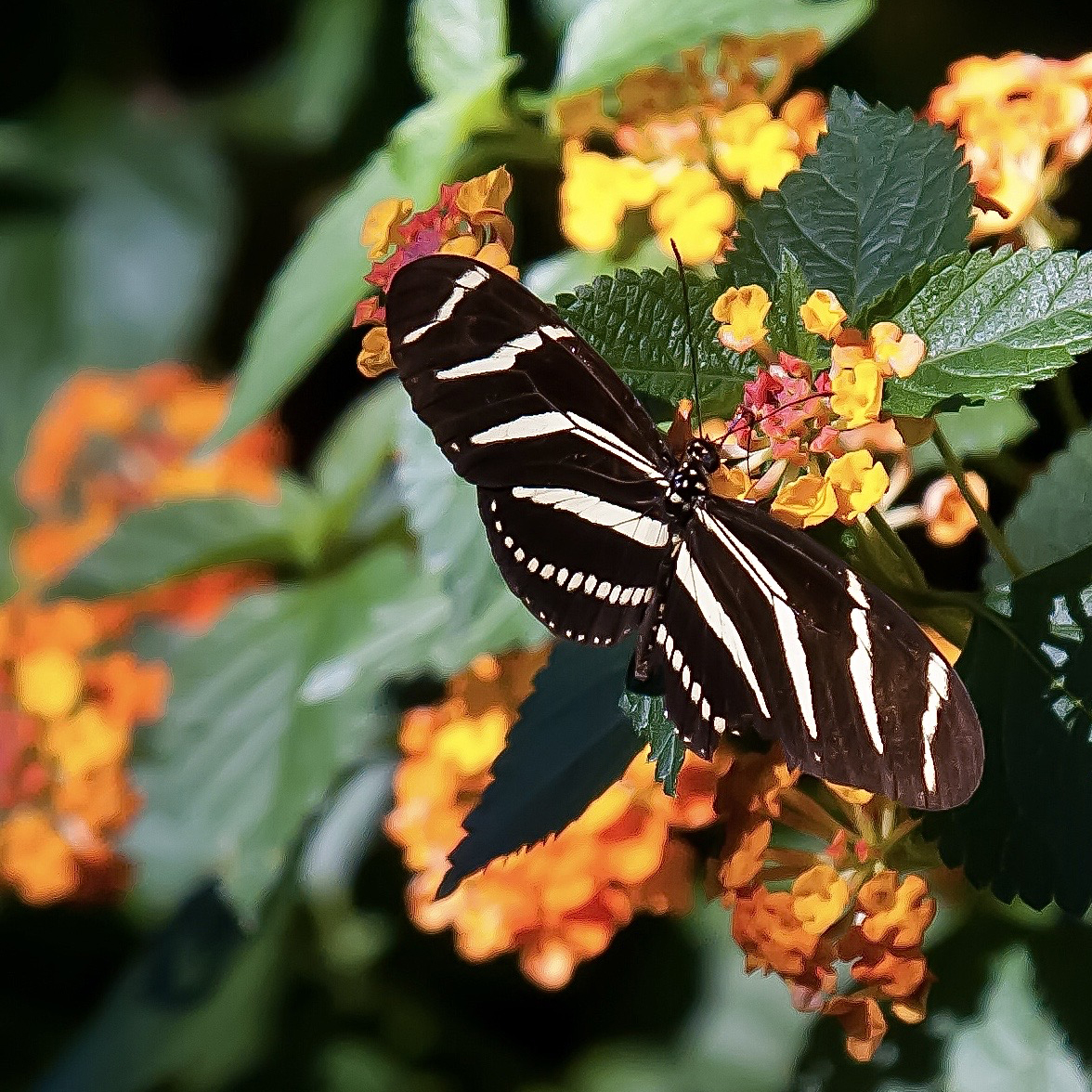 Luscious Marmalade lantana attracts |  Luscious Royale Cosmo lantana sizzling and Supertunia Mini Vista Indigo petunia. |  Luscious Citrus Blend attracts a |
Luscious® Lantanas
There are 12 selections in the Luscious lantana series and despite being listed as hardy to zone 9a, mine have been coming back in my garden which is just northwest of Columbus, GA. I expected catastrophe after December’s Arctic blast, but this was simply not the case.
Picking a favorite is hard but I love Luscious Marmalade. The orange is so vibrant and plays so well with blue companions. I also love Citrus Blend, Royale Red Zone, Citron and Golden Gate. Luscious Royale Cosmo is incredible. It is a kaleidoscope of ever-changing colors and you would swear it had an innate ability to choose its colors to work with companions. I’ve had several species of butterflies visit it and it for sure is a hummingbird favorite.
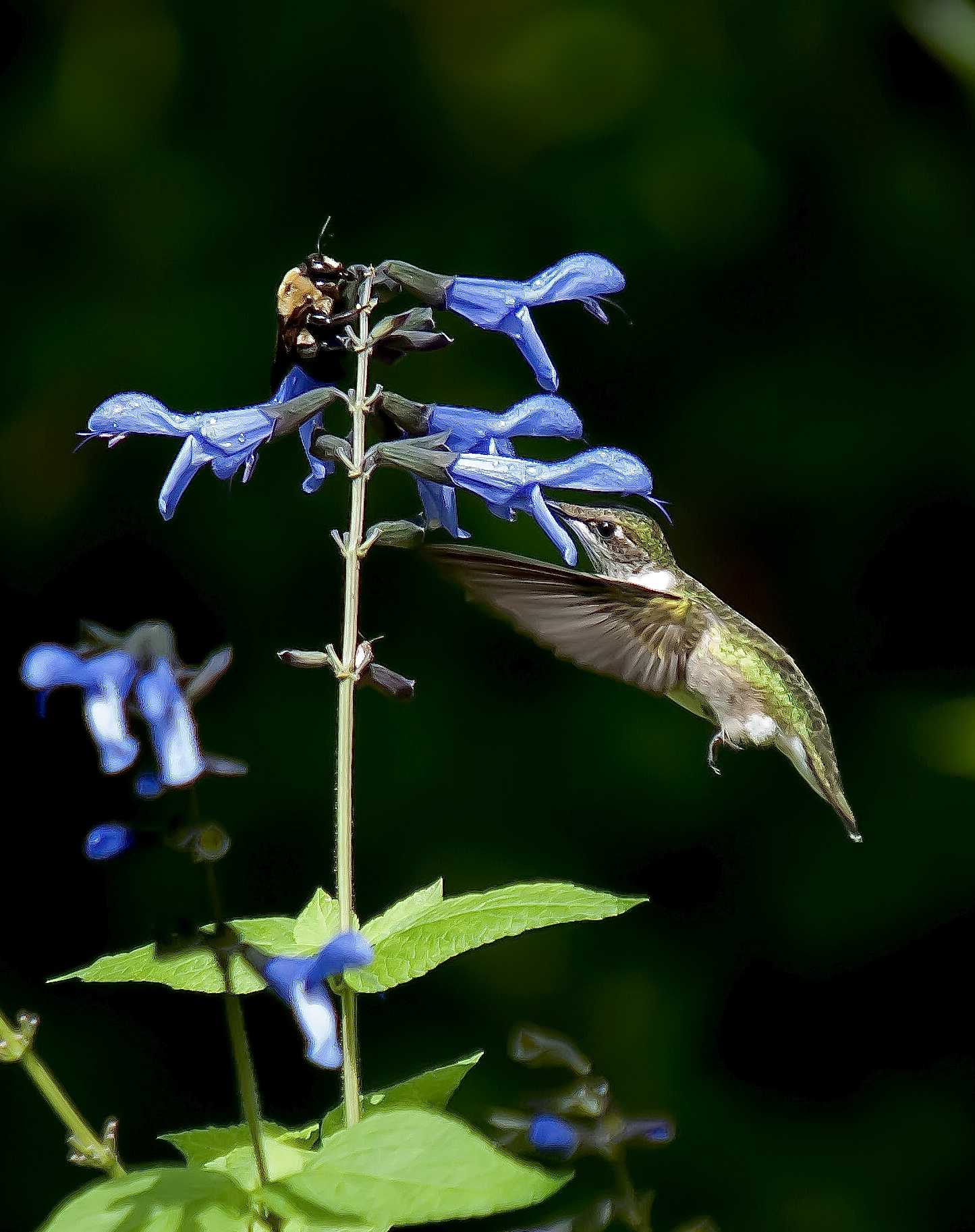 Rockin Blue Suede Shoes salvia brings in a Ruby-throated hummingbird and a bumblebee. | 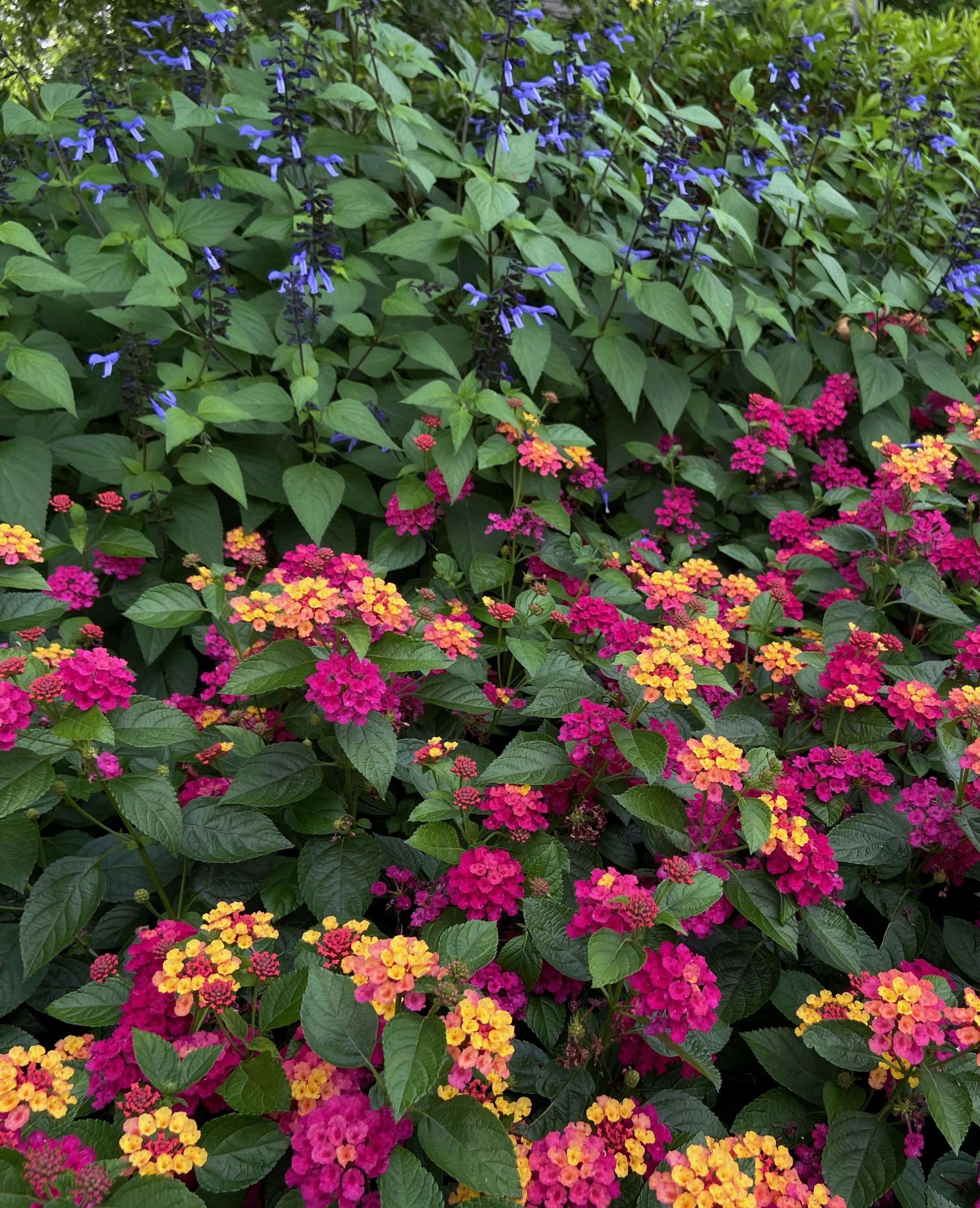 Rockin Blue Suede Shoes salvia with Luscious Royale Cosmo lantana. | 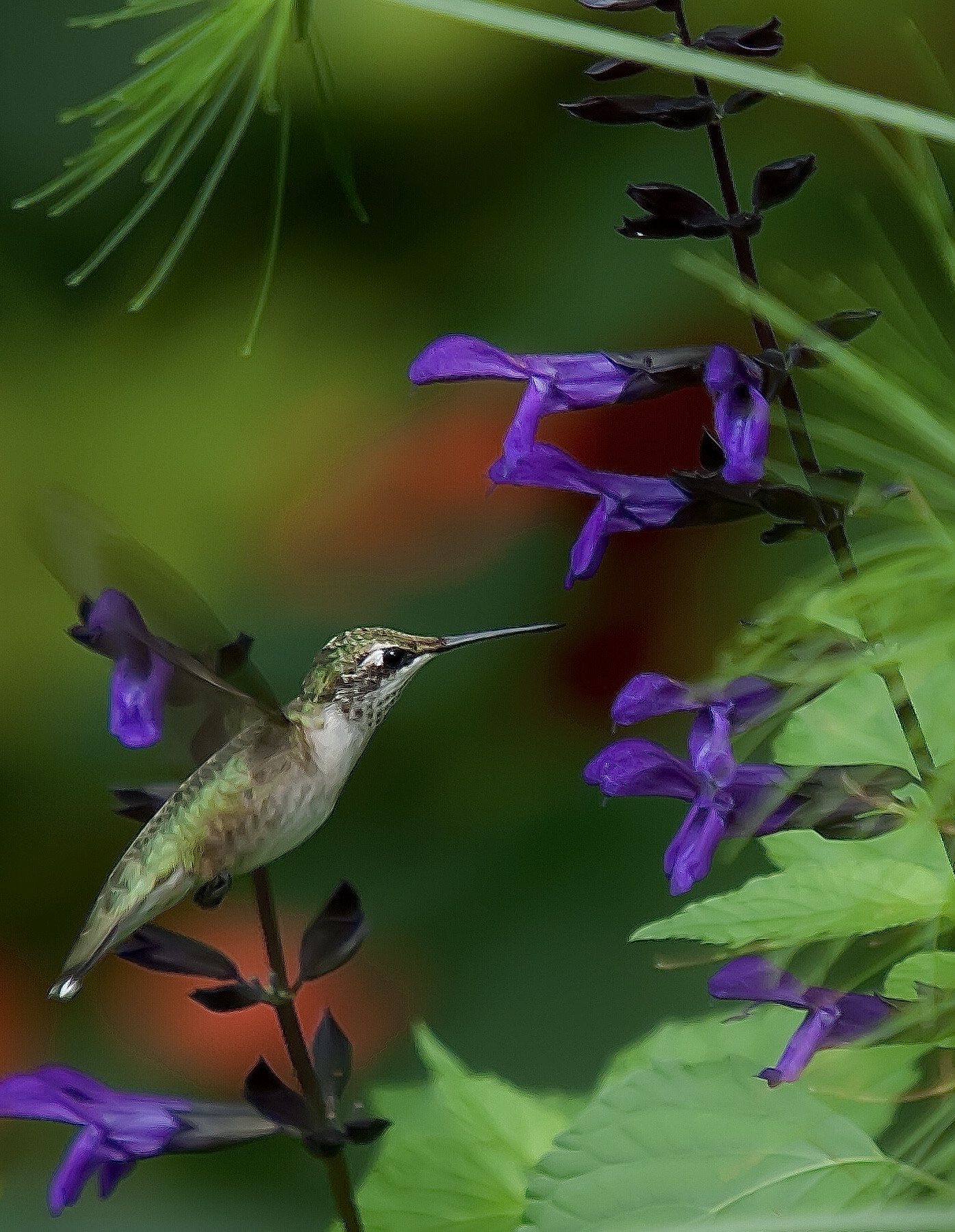 Rockin Deep Purple salvia brings in a Ruby-throated hummingbird. |
Rockin’® Salvias
This is another surprise from the standpoint of both hardiness and size. Rockin’ Playin’ the Blues is a Salvia longispicata x farinacea hybrid that is expected to be perennial in Zone 7a and warmer. It has been a surprise for its proclivity to attract butterflies and hummingbirds. But then again, it was the winner of Dallas Arboretum’s Best Pollinator Friendly perennial award.
The real surprise may be the Rockin’ salvias that look to be Salvia guaranitica hybrids. The three colors are Deep Purple, Blue Suede Shoes and Fuchsia. These are all listed as Zone 9 and warmer perennials but over the last four years, all of mine have returned. It was shocking how quickly they recovered from 11-degree lows.
My Rockin’ salvias actually started blooming in April which points out another plus or minus and that is the enormity of their size—all over 4 feet and one over 6 feet tall. These are definitely the hummingbird champs but it is amazing to see how they are also favorites of swallowtails.
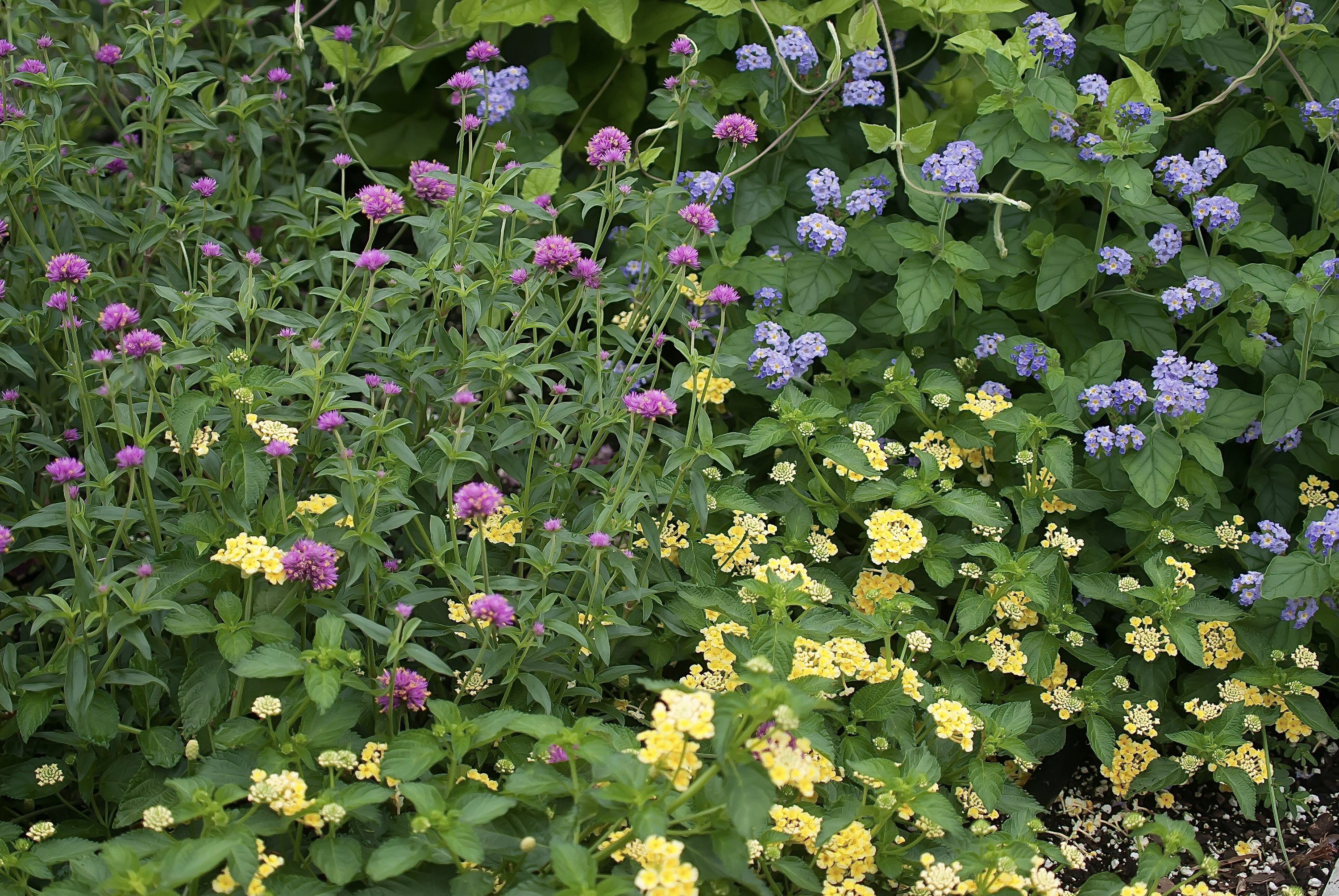 Augusta Lavender heliotrope in a magical setting with Luscious Citron lantana and Truffula Pink gomphrena. | 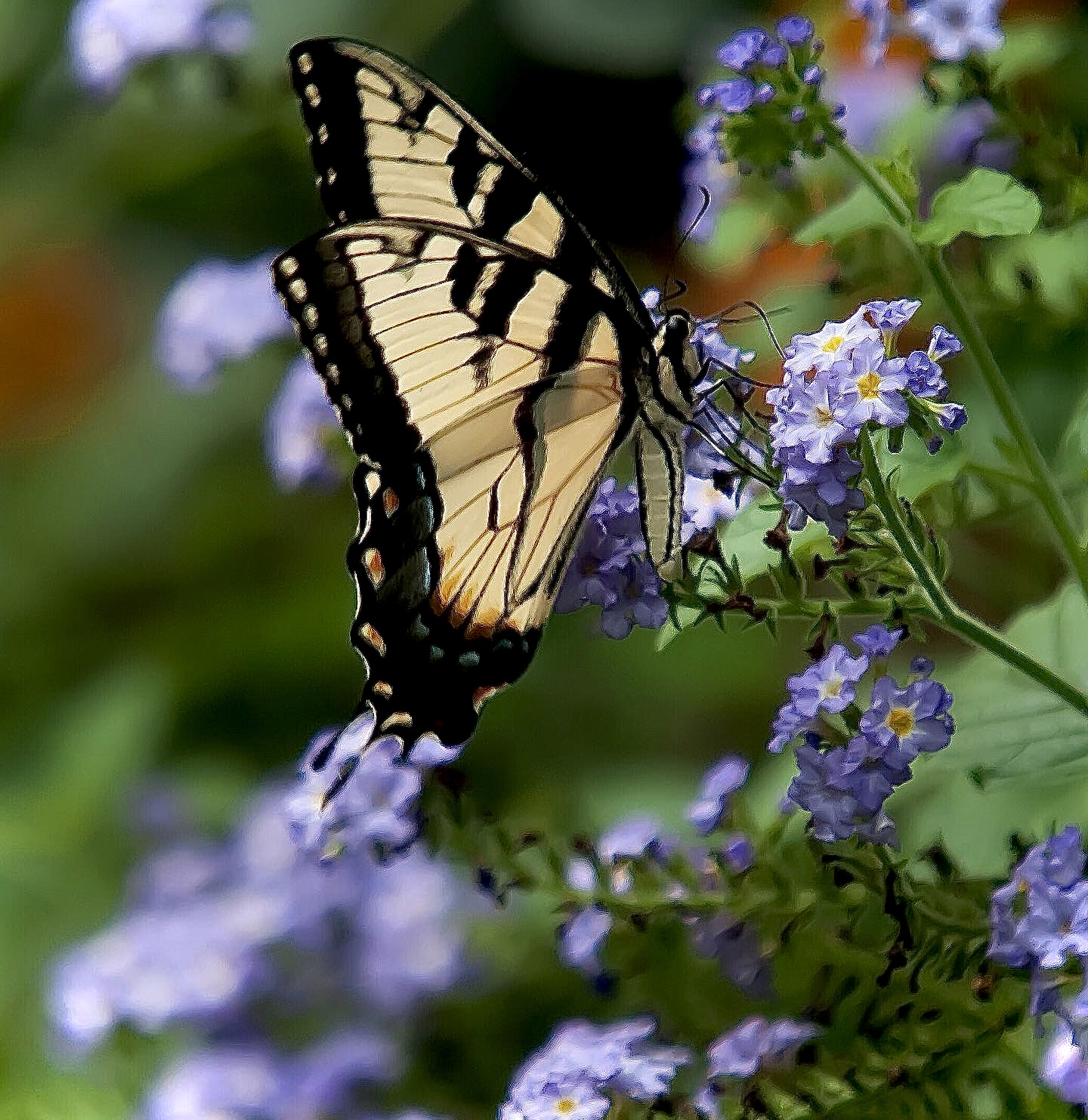 Augusta Lavender heliotrope brings in an assortment of butterflies including the Eastern Tiger Swallowtail. |
Augusta™ Lavender Heliotrope
If there was ever a shocker, it is this plant. Outside of a southern native scorpion tail heliotrope with white flowers, you simply did not dream of such a plant. At first, we were skeptical and just knew it would crater with high July temperatures. My first year, the plants not only bloomed all summer, but also right through winter. They were eternal!
The second year we grew them, the plants got whiteflies and I thought to myself, “I knew you were too good to be true.” But, I cut back them back to remove the infestation and they came roaring back with new growth. In their third year, the December artic blast removed them from the earth, or at least I thought. But again, they came roaring back. Augusta Lavender heliotrope is indeed perennial in zone 8. I would not be surprised at all to see them return even in zone 7.
They look totally amazing in partnership with Luscious Marmalade lantana and all other colors of lantana and Color Coded coneflowers. It seems all species of butterflies will nectar on the lavender blue flowers with yellow orange throats. We know the summer will be long and hot but it promises to be beautiful with color and an abundance of hummingbirds and butterflies. Follow me on Facebook for more photos and garden inspiration @NormanWinterTheGardenGuy.
You’re Entertaining No Need to Panic
There is nothing quite like the panic of spur of the moment entertaining, you do not want to be caught with your bloomers down. I am not talking about intimates. I am talking about flowers and this is especially true if you are a garden club member or on the rotating volunteer circuit to bring flowers to the Sunday Service.
Getting the Message at Church
Back in the late 90’s and the turn of our century my eyes were opened up to flowers for the vase. This first came from watching the ladies at First Baptist Church in Mount Olive MS. Just for the record there were no mountains or olives, and the local fishing spot was Dry Creek and I would not take anything for my years there.
One Sunday I’ll always remember Mrs. Ival, the town Mayor. It was her turn to bring flowers for the Sunday Service. She brought a wonderful arrangement made of hosta blooms. Fragrance permeated the sanctuary. The whole time I was there, I kept thinking, can you really do that with hostas?
They were still looking good for the night time service and thus they had crossed the finish line as champs. Proven Winners has some of the most beautiful hostas in the market with their Shadowland series, which of course send up a quantity of blooms. The other night I watched a group discussion on whether to cut them off and throw them away or let them bloom. Of course, they do attract hummingbirds but they just might rescue you for an end table arrangement or, as in Mrs. Ival’s case, flowers for the pulpit.
 Proven Winners plants like Miss Molly Butterfly Bush provide a bounty of beautiful blooms, butterflies, and bouquets for the vase. | 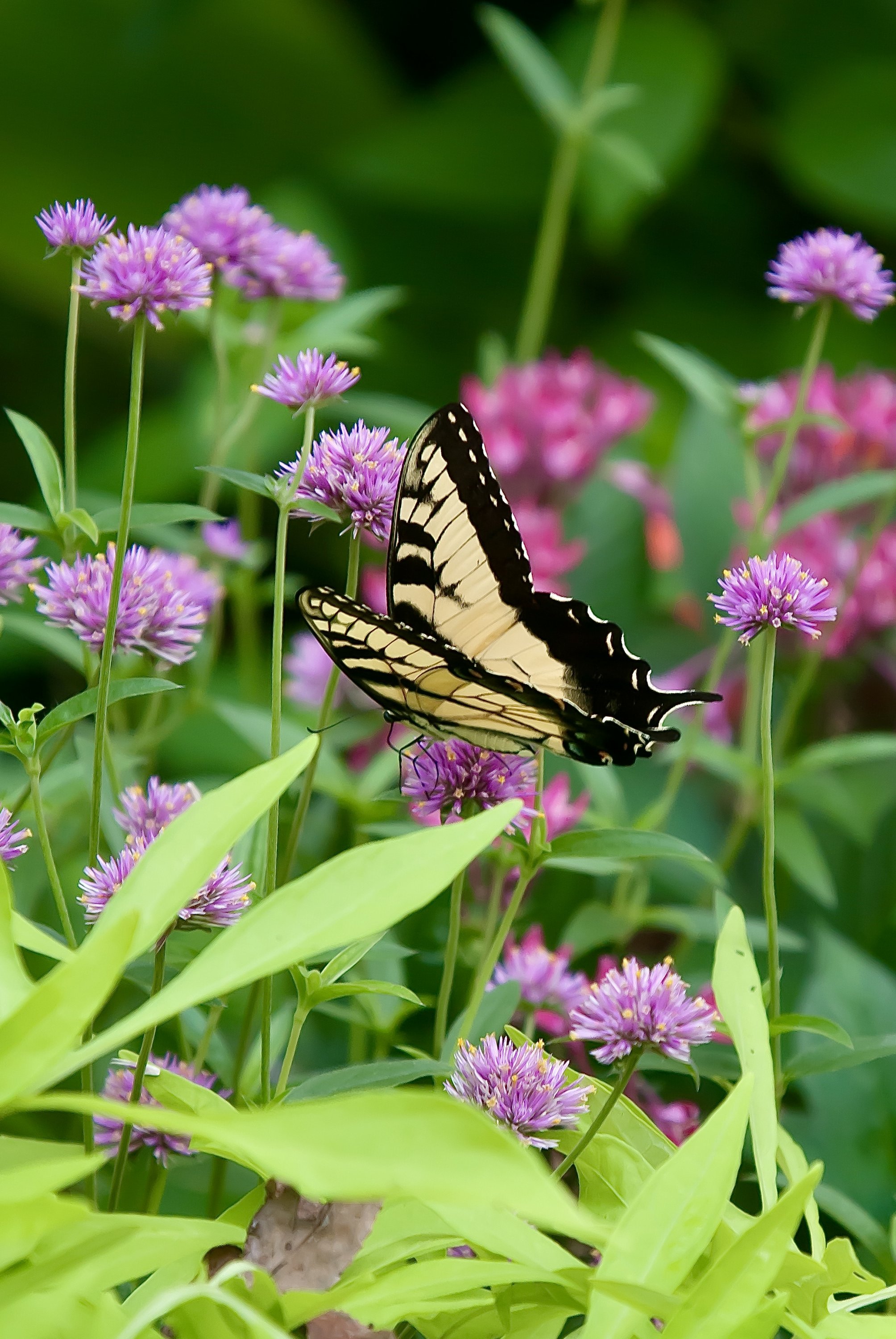 Truffula Pink Gomphrena is the Annual of the Year for 2023 and is a champion for attracting butterflies. |
Blooms, Butterflies and Bouquets
In the late 90’s Auburn University got my attention with a trial of Buddleia or Butterfly Bush varieties regarding the possibility of using them as cut flowers. There was an enormous group of varieties in the test. Each one was harvested and then cut again under water and placed in a vase with a florist preservative. In Mt. Olive a half cup of Seven Up or Sprite was among the preferred preservatives.
The real skinny so to speak of the Auburn trials was that the best varieties lasted 7 to 9 days in the vase and the worst varieties lasted about 5 ½ days. What this said to me was the butterfly bush makes a good cut flower, and you will have ‘blooms, butterflies and bouquets.’
So, this morning I cut some Miss Molly butterfly bush blooms, a Pyromania Blaze red hot poker bloom, Rockin Playin’ the Blues salvias and an old-fashioned zinnia with a sprig of Double Play Candy Corn spirea and placed them in a white milk glass vase. Proven Winners is the epicenter of all things Buddleia and will keep you in cut flowers and the butterfly business until frost.
While we are mentioning butterflies, let’s dabble on the Proven Winners Annual of the Year, Truffula Pink gomphrena. Can you even imagine a plant that is like the butterfly champ, tough and persevering all summer, yet allows for the most beautiful arrangements? Such is Truffula Pink gomphrena, I promise you can do it.
|
|  Truffula Pink Gomphrena, Suncredible Yellow Bush Sunflower and Angelface Blue Angelonia come together easily for an arrangement anyone could do. |
The Hydrangea Earthquake
But as we rolled into the 2000’s our eyes were opened in the South to the possibility of not only growing white hydrangeas but cutting them for indoor use. When Limelight was selected as the Association of Specialty Cut Flower Growers, ‘Cut Flower of the Year’ in 2007 a reverberating earthquake began and is still peaking the Richter Scale.
Quickfire hydrangea won the award for 2019 and Pinky Winky is the winner for 2023. But what we all really learned is that hydrangeas no matter the species are award winners in the vase and cause glee among the guests being entertained. Proven Winners has become the go to source for hydrangeas. Just consider the re-blooming Let’s Dance group will just keep producing until frost. A Proven Winners landscape will keep you in beauty, but you may just feel like you have become party central too! Follow me on Facebook @NormanWinterTheGardenGuy for more photos and garden inspiration.
| 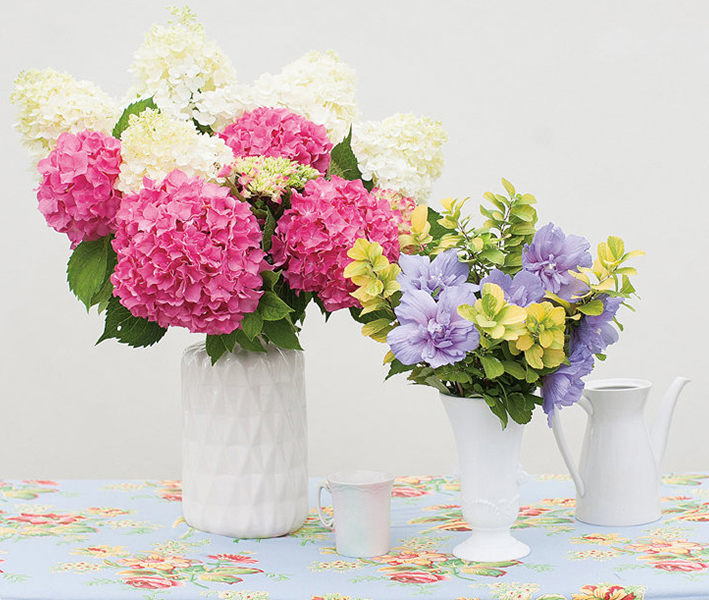 As the arrangements show all Proven Winners hydrangeas can be cut for the vase. Pictured are Limelight Panicle Hydrangea, Let’s Dance Rhythmic Blue Reblooming Hydrangea (pictured in pink), Blue Chiffon Rose of Sharon and Glow Girl Birchleaf spirea. |  Limelight Panicle Hydrangea was selected as the 2007 Cut Flower of the Year by the Association of Specialty Cut Flower Growers. |
The Hydrangea Earthquake
But as we rolled into the 2000’s our eyes were opened in the South to the possibility of not only growing white hydrangeas but cutting them for indoor use. When Limelight was selected as the Association of Specialty Cut Flower Growers, ‘Cut Flower of the Year’ in 2007 a reverberating earthquake began and is still peaking the Richter Scale.
Quickfire hydrangea won the award for 2019 and Pinky Winky is the winner for 2023. But what we all really learned is that hydrangeas no matter the species are award winners in the vase and cause glee among the guests being entertained. Proven Winners has become the go to source for hydrangeas. Just consider the re-blooming Let’s Dance group will just keep producing until frost. A Proven Winners landscape will keep you in beauty, but you may just feel like you have become party central too! Follow me on Facebook @NormanWinterTheGardenGuy for more photos and garden inspiration.
Benchmark Year of Fragrant Roses - Times Perfectly for Mother’s Day
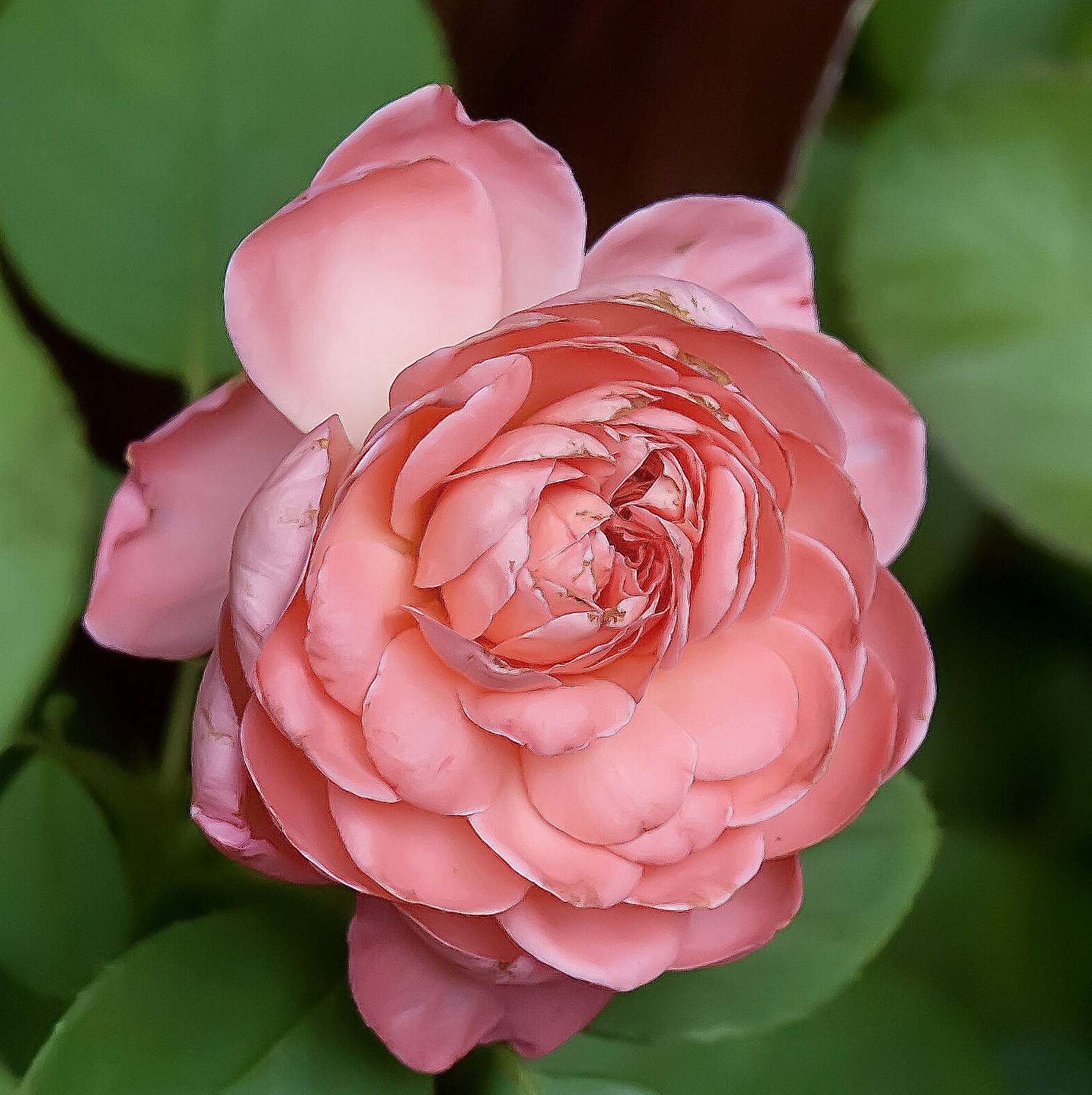
Reminiscent Coral is one of three in the series
making their debut this spring. This bloom at
The Garden Guy’s house shows the exquisite heirloom
form packed with fragrance and carefree maintenance.

Reminiscent Pink seen here along with Reminiscent Crema
were bred to give the series that antique or old garden
look along with fragrance and excellent disease resistance.

The Rise Up series will debut this spring with 3 colors and
bring a new dimension to the landscape as mini-climbers
reaching 5 feet tall. Here Rise Up Amberness shows
the dreamy look of their fragrant blooms.

Rise Up Lilac Days offers the rarest of colors in the world roses
but as a unique mini-climber habit and one of the best
olfactory or fragrance experiences in the garden.
Once upon a time, The Garden Guy was the Executive Director of the American Rose Society and its Gardens of the American Rose Center in Shreveport, Louisiana. My fondest memories are those times spent in the area dedicated to Heirloom and English Roses. The fragrance seemed to permeate the air drawing you to investigate each and every selection with the nose if you know what I mean. This year will be a benchmark in the olfactory experience of roses with the debut of two new series, they are Reminiscent and Rise Up, both brought to you by Proven Winners. The good news it times perfectly for Mother's Day.
The Reminiscent series boasts three colors, coral, crème, and pink. They originate with a breeding team from Serbia that has seemingly done the impossible capturing the look, fragrance, and essence, seen in Empress Josephine’s Garden, at Malmaison. Yet the roses are a manageable size, carefree from the standpoint of disease, and have put the joy of fragrance back into bloom.
My first Reminiscent Coral blossom told me all I needed to know. The blooms are exquisite, cupped-shape, and made me think it deserved to be painted on canvas like the roses of old. The coral color with a hint of copper is so rare in the garden, and even more beautiful against the dark green foliage. Should you be wondering, they are indeed repeating bloomers.
The Reminiscent Crema, perhaps best compared to a buttermilk color, is slightly smaller than the Coral and the Pink, reaching only 3 feet tall. They all have a spread of around 2 feet. You will love both the fragrance and the high petal count. The Reminiscent Pink like the Coral screams heirloom with its shape and fragrance while reaching around 4 feet tall.
The Rise Up series boasts three unique colors. Lilac Days is an extremely rare color in the world of roses, Ringo is a double yellow with a red eye, and Amberness is a stunning amber around an orange bud. There is a fourth selection in the pipeline, so to speak, called Emberays which is glowing orange and yellow maturing to pink. It will be available as a pre-order and hitting garden centers next year.
These were bred in Shropshire, England, and add a totally new dimension to the landscape in that they are mini-climbers reaching 5 feet in height with a spread of 36 inches. All over the rose world and in cottage garden circles everywhere, there will be a cheer of celebration as these roses will be the perfect size to fit on what I call a Victorian tower. Can you imagine a tower with Rise Up Amberness surrounded by Unplugged So Blue salvia?
As a horticulturist, I hate to confess that pruning heirlooms or old garden climbing roses have caused me on more than one occasion to do too much thinking, should I cut here? With these mini-climbers it is much simpler, just cut back by at least a third, maybe a little more, to a good healthy bud. These roses will all have the same basic requirements, good organic rich soil with plenty of sun. As usual, a bog is not your friend.
The Reminiscent and Rise Up roses offer one more critically important trait and that is memories. Your children or grandchildren that grow up with these roses will remember not only the wonderful fragrance in the landscape but also the time spent with Mom and the whole family.. Follow me on Facebook @NormanWinterTheGardenGuy for more photos and garden inspiration.
AquaPots® Combine Elegance and Self-watering Freedom
Warmer weather will soon be upon us and perhaps you would like to head to the mountains, hike on the Appalachian Trail or lay on a white sand beach--but love for your mixed containers trumps everything. The solution to this recurring dilemma is you are in need of some AquaPots.
Summer forecasts often present many gardeners with heat indices in the triple digits which might have you feeling a little bit like a patio prisoner. Afterall it is gardening that has literally brought us through many ups and downs over the years. It is our passion and our love and the perfect arrival time for some innovation when it comes to self-watering containers.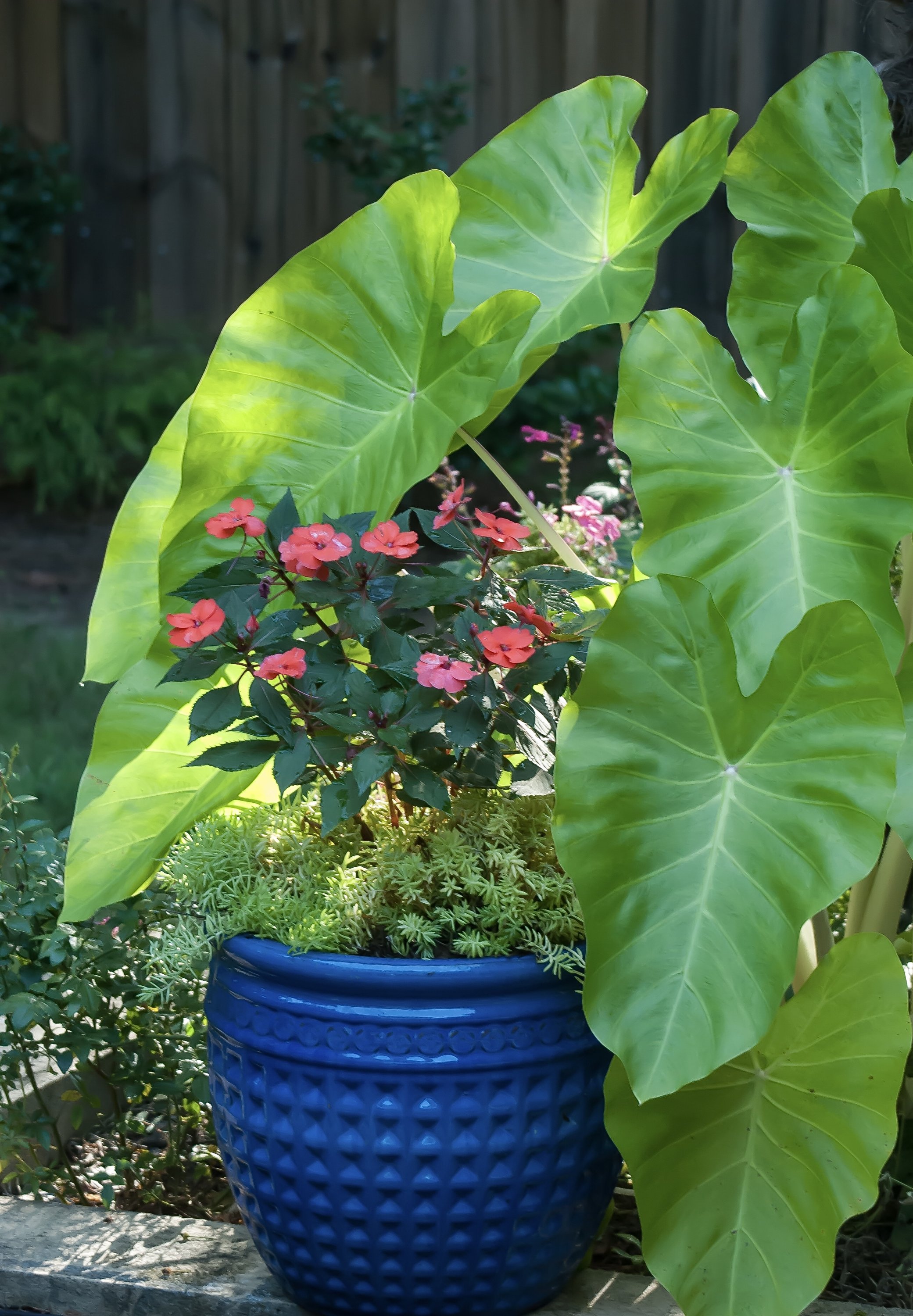 If you have not heard of the AquaPot, just know it is a ‘Game Changer’. These containers that come in various sizes, shapes, and colors have science in their self-watering design partnered with artisan handcrafted construction. To say these combine beauty with heavy duty performance is an understatement.
If you have not heard of the AquaPot, just know it is a ‘Game Changer’. These containers that come in various sizes, shapes, and colors have science in their self-watering design partnered with artisan handcrafted construction. To say these combine beauty with heavy duty performance is an understatement.
Incredibly though, these Proven Winners containers allow you to water and go on a long weekend or even a week’s vacation returning to ‘STUNNINGLY ALIVE’ flowers. Professional large sized containers actually give weeks in between watering.
The glazed ceramic containers are hand crafted allowing them to add a true touch of elegance wherever they are used. The ingenious self-watering concept is based on a water-holding reservoir in the lower chamber of the pot with a soil holding shelf in the upper chamber. The water wicks up to the soil and plant’s root zone via a cylinder that connects the chambers.
One last device that you will love is a tube hidden by the flowers that allows you to insert water-soluble fertilizer, followed by a water hose for the weekly filling. No longer will you splash soil all over the patio or ruin flowers with the force of fire-hydrant-like water pressure. No water or fertilizer stains on the patio or deck either! If, you think you might add too much water, forget it, there is an escape hole.
No amount of mechanical skill or reasoning is required to put together, zero zip, nada. The Garden Guy is a horticulturist and was absent the day mechanical skills were passed out. Give me a curtain rod to hang and hyperventilation commences. Trust me, I put mine together in mere seconds.
Planting is exactly the same as in any other container. Just like I have always written, don’t skimp when it comes to the quality of your potting soil. It needs to be light, fluffy and the best.
I was visiting via computer with Jenny Simpson who along with husband Jerry, own Creekside Nursery in Dallas, NC She told me they were extremely impressed and happy with how the AquaPots have performed in North Carolina gardens. She said they provided consistent water and food to the plants who love their new homes.
AquaPots add beauty and a new found freedom when it comes to watering the plants we love. It also gives you confidence, maybe for the first time, that you are supplying the water and fertilizer just at the right moment, which is as the plants need it. Go to Proven Winners website and click on the SHOP tab to see all the choices available, and to find you closest retailers and purchasing options. Follow me on Facebook @normanWinterTheGardenGuy for even more ideas and photos for inspiration.
Dolce® 'Appletini' & Primo® 'Wild Rose' Creating a Little Heuchera Heaven
|  The same container a month later, shows Graceful Grasses® Prince Tut™ papyrus has replaced the dianthus while Primo® 'Wild Rose' Heuchera has started to bloom and Supberbena® Imperial Blue™ Verbena, Superbena® Whiteout™ Verbena and Superbells® Dreamsicle® Calibrachoa have started to spread. |
Dolce® Appletini and Primo® Wild Rose were just two of the varieties that gave The Garden Guy’s container designs a touch of heuchera heaven. Like you I find myself ready for a spring fresh-up in container designs.
In the South, we love planting heuchera in the fall, winter and early spring. Though I am in year 4 of Primo® 'Peachberry Ice' planted in the landscape I love the ability they offer container designs the best. But just saying year 4 in the landscape says two things, the first is they will take the southern extremes better than most people believe. The second thing old Norm, The Garden Guy needs to work harder in his landscape partnerships.
Dolce Appletini has been like a slap in the face with the forgotten message all of us University Horticulturists teach our classes. One of the real benefits of container growing is that they are movable. Now you are thinking I am talking about moving the container from shade to sun or vice versa. While that might be true with Dolce Appletini I am talking about a much simpler twist or rotation.
Dolce Appletini has shocking chartreuse or sour apple color that you long for and the first thing you hear is that it will burn or bleach in the sun. The Garden Guy combined then with North Pole arborvitae, Superbena Imperial Blue verbena and Supertunia Vista® Paradise.
So, as we worked through April and May I let them have more sun and then twisted the container to afternoon shade as summer’s heat arrived. The prevailing thought was that you could not get the incredible bright red coral flowers associated with Dolce Appletini, but this was not the case.
Primo Wild Rose is gorgeous with large leaves of dark rose purple colors. I went much longer into the season before I rotated this container. The design combined Primo Wild Rose heuchera with Superbena Whiteout verbena and Superbells Dreamsicle calibrachoa and Superbena Imperial Blue verbena. A red dianthus was used as a thriller but changed later to Graceful Grasses® King Tut® Papyrus to make a stronger statement.
All of my containerized heuchera plantings were in the self-watering planters known as AquaPots®. I used the best lightweight potting soil and fertilized monthly with a scoop of water-soluble fertilizer placed in the irrigation tube. If you ever make the switch you’ll never go back
The Arctic Blast in December caused me to do something I had not done in years. I moved all my containers to the garage and even then, a couple of petunias got wounded. They are all back in their places and the heuchera will have a few old leaves removed before spring growth. Those in the landscape will get a heavier trim.
Proven Winners has 24 varieties of heuchera representing the most beautiful fancy foliage you can offer your designs whether they be in containers or the landscape. But there is much more as you’ll see there is a reason, they are called coral bells. Dolce Appletini, Dolce® 'Spearmint' and Dolce® 'Silver Gumdrop' are just a few that will leave you breathless with their blooms. Follow me on Facebook @NormanWinterTheGardenGuy for more photos and garden inspiration.
 Dolce Appletini Heuchera, Superbells® Tangerine Punch™ and Superbells® Blackcurrant Punch™ accompany Fluffy arborvitae in this boldly red-colored self-watering AquaPot. X |
 Dolce Appletini Heuchera, electrifying with its sour apple-colored leaves, has started pushing its showy coral red blooms. The container features North Pole® Arborvitae, Supertunia Vista Paradise Petunia and Suerbena® Imperial Blue™ Verbena. |
Picking Your Pockets - For a Large Front Yard
The Garden Guy’s front yard is a little over a half-acre with a lot of trees.
Grouping the trees into islands or pockets of non-mow areas helped develop planting opportunities.
The Garden Guy and Mrs. Jan moved to the present house in the spring of 2019. Ideas flowed like a waterfall for backyard plantings, while the front yard was daunting, for one big reason. It is over a half-acre with a steep upward slope toward the home.
The Garden Guy was raised in west Texas where trees were the occasional mesquite. Here in west Georgia, I felt like I was in a forest. Thankfully in between Texas and Georgia I got a lot of boots on the ground training while working as a Horticulture Specialist for Mississippi State University.
Sometimes it can be hard for the preacher to take his own advice but in this case the old horticulturist remembered his lectures on taking the landscape modification in bite sized chunks. That reduces the stress on the mind and on the pocketbook, after all The Garden Guy is basically retired and on a fixed budget.
The first objective was to reduce turf area as much as possible by clustering trees in islands, pockets and I suppose expansive sweeps or drifts. This eliminated turf care here and opened up a sea of opportunity for dogwoods, Bloom-a-Thon and Perfecto Mundo azaleas, hydrangeas, Double Play flowering quince, Yin and Yang viburnums and my prized Fluffy gold conifers. But the sunny side of the islands opened the door to Pugster buddleia, Luscious lantanas, Color Coded coneflowers, and Pyromania red hot pokers.
Behind these I have been able to incorporate Rockin salvias. On more than one occasion I have stood in my backyard and uttered where are my hummingbirds? You guessed it they were off frolicking in the front or side yards which I’ll tell you about in another newsletter.
With such a large forested front yard it has at times been like, where is the front door. Here and at several of my other homes over the years you quickly realize this is the most important area to have a pocket of welcoming color.
Here I have created a little dazzle with Luscious Royale Cosmo lantana, Angelface angelonia and Sunstar Pentas. There are also four self-watering AquaPots that have more of the gorgeous colored conifers like Fluffy and Polar Gold arborvitaes.
|  In this pocket with a sunny afternoon disposition the new ColorBlaze Wicked Hot coleus and golden Fluffy arborvitae create a stunning contrast |
The Christmas tree look of the arborvitae are picturesque on their own, the addition of Superbells Grape Punch, Tangerine Punch and Black Currant Punch have added the holy wow. The perfect finishing touch to the containers however was the addition of Dolce Appletini heucheras. So many in my area still down understand the effectiveness of heucheras as partners in containers.
The last addition, and perhaps unexpected for a front door pocket planting was a glazed blue bird bath. The shiny blue partnered with red and white AquaPots is just a little added magic. I still spend most of my time out back and then it hits me, I know where my hummingbirds and butterflies are, they are playing in the front yard! Follow me on Facebook @NormanWinterTheGardenGuy for more photos and garden inspiration.
 As the sun sets on one of the non-mow pockets, the backlit azaleas and glistening glossy leaves creates a most magical moment. X X |  The colorful pocket planting by the front door tells visitors they are welcome. Here Sunstar Pentas, Angelface Super White angelonias combine with self-watering AquaPots filled with golden conifers, Superbells Punch varieties and Dolce Appletini heuchera. |
Over a Thousand Reasons To Put the Supertunias, Superbells and Superbenas Together
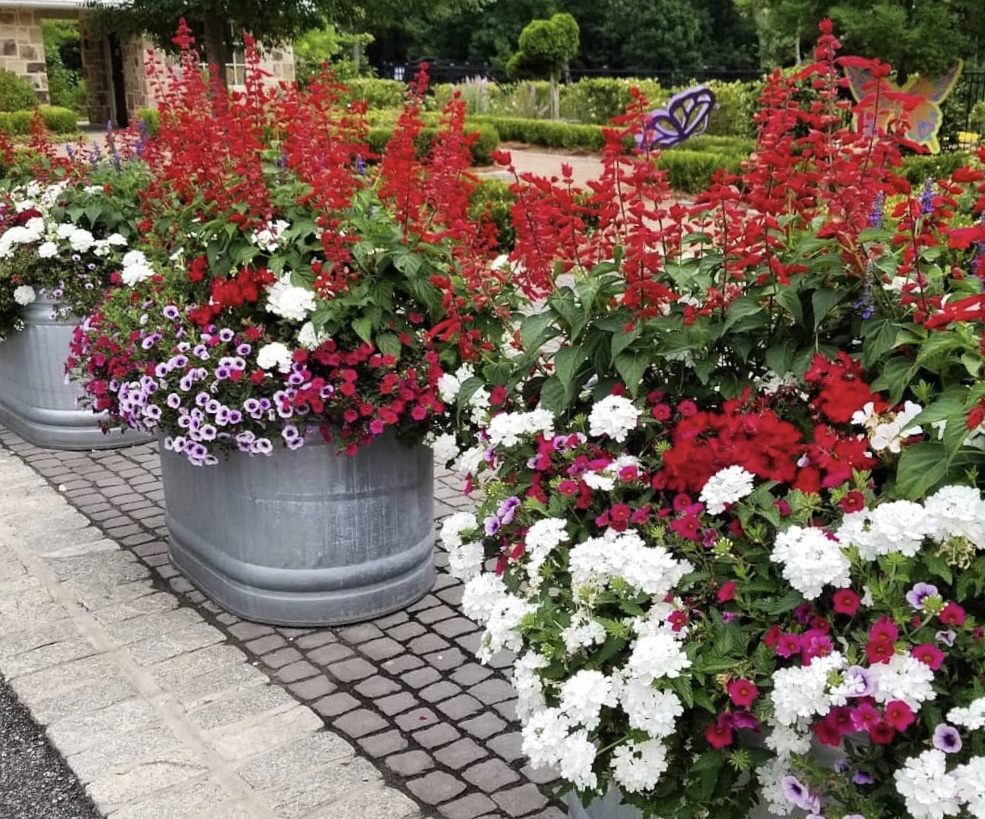 Superbena® Whiteout™ Verbena, Superbells® Blue Moon Punch Calibrachoa, Superbells® Cherry Red Calibrachoa & Salvia
Superbena® Whiteout™ Verbena, Superbells® Blue Moon Punch Calibrachoa, Superbells® Cherry Red Calibrachoa & Salvia
While working on this project 1340 was the number I counted. That number is the total accumulation of awards won by ‘The Supers’, Supertunia petunia, Superbells calibrachoa and Superbena verbenas.
That is a huge number and what I find funny is that some of my favorites, those that I would put in the category of GOAT (Greatest of All Time), don’t have the first award. As a former University Horticulture Specialist, overseeing the Mississippi Medallion Award, I can understand this, we simply could not trial everything.
These three divisions, Supertunia petunias, Superbells calibrachoas and Superbena verbenas deserve to be together. Together they will create award-winning mixed containers, baskets and boxes just like Acapulco Sun, the Recipe of the Year.
To The Garden Guy this is where the real gardening fun begins. Picking out the color scheme you want to work with, planting the container and bringing it into full bloom. Once you realize the Supers are among the best at bringing in bees, butterflies and hummingbirds you know you must have them.
Proven Winners recipes are a good place to start getting combination ideas, though you have to admit they have achieved perfection in their photography. The photos from The Garden Guy shows what happens in the real world and what you can expect with your own artistically designed containers.
I grow the Supers for the most part in containers with really good potting soil. Some of the containers are large and hard for me to pick up, and some are small. Choosing a good soil mix in a container that drains freely allows each of the super divisional champs, Supertunias, Superbells and Superbenas to find happiness together even if they might have some minor idiosyncrasies.
There is a little issue that is to be celebrated and to me why these are champion plants. One of the reasons you can’t see the pots is that some of these plants give a perennial performance in my zone 8a Georgia garden. The last few years I have had Superbena verbena, Superbells calibrachoa and Supertunias all for the most part return in the spring.
This year was different in that this was the first time in decades that I protected plants and containers. During the December Arctic blast, we saw temps of 11, 16, 17, 22 and 28 on consecutive nights and stayed below freezing for days. I decided I would move them once, and for 5 nights. They were then put back into place in the backyard and have been there ever since. They have received several high 20’s in January and February.
The plants are already covering the containers and starting to send first blooms of Superbenas, and Superbells while the Supertunias are growing like crazy. I’ve got plants ordered and will retool and refresh as needed. In the meantime, it’s nice to know that each container has a divisional champ or two, maybe even three in it. It is fun to watch on a daily basis to see which blooms are next.
| 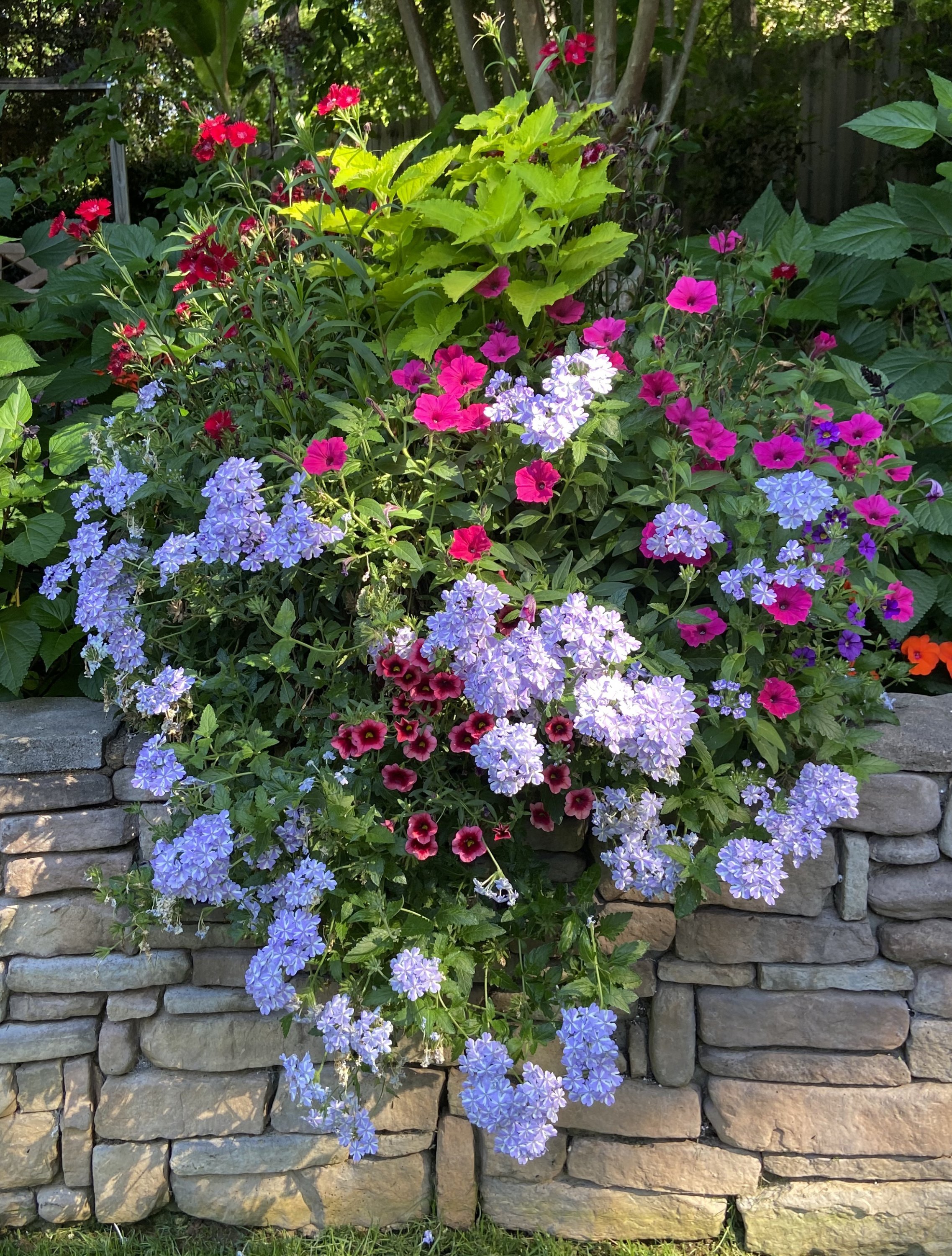 This container, which is identical to the first photo, shows Superbena Stormburst verbena, Supertunia Vista Paradise petunia, Superbells Watermelon Punch calibrachoa, ColorBlaze Lime Time coleus and Rockin Red dianthus. This container, which is identical to the first photo, shows Superbena Stormburst verbena, Supertunia Vista Paradise petunia, Superbells Watermelon Punch calibrachoa, ColorBlaze Lime Time coleus and Rockin Red dianthus.X X |
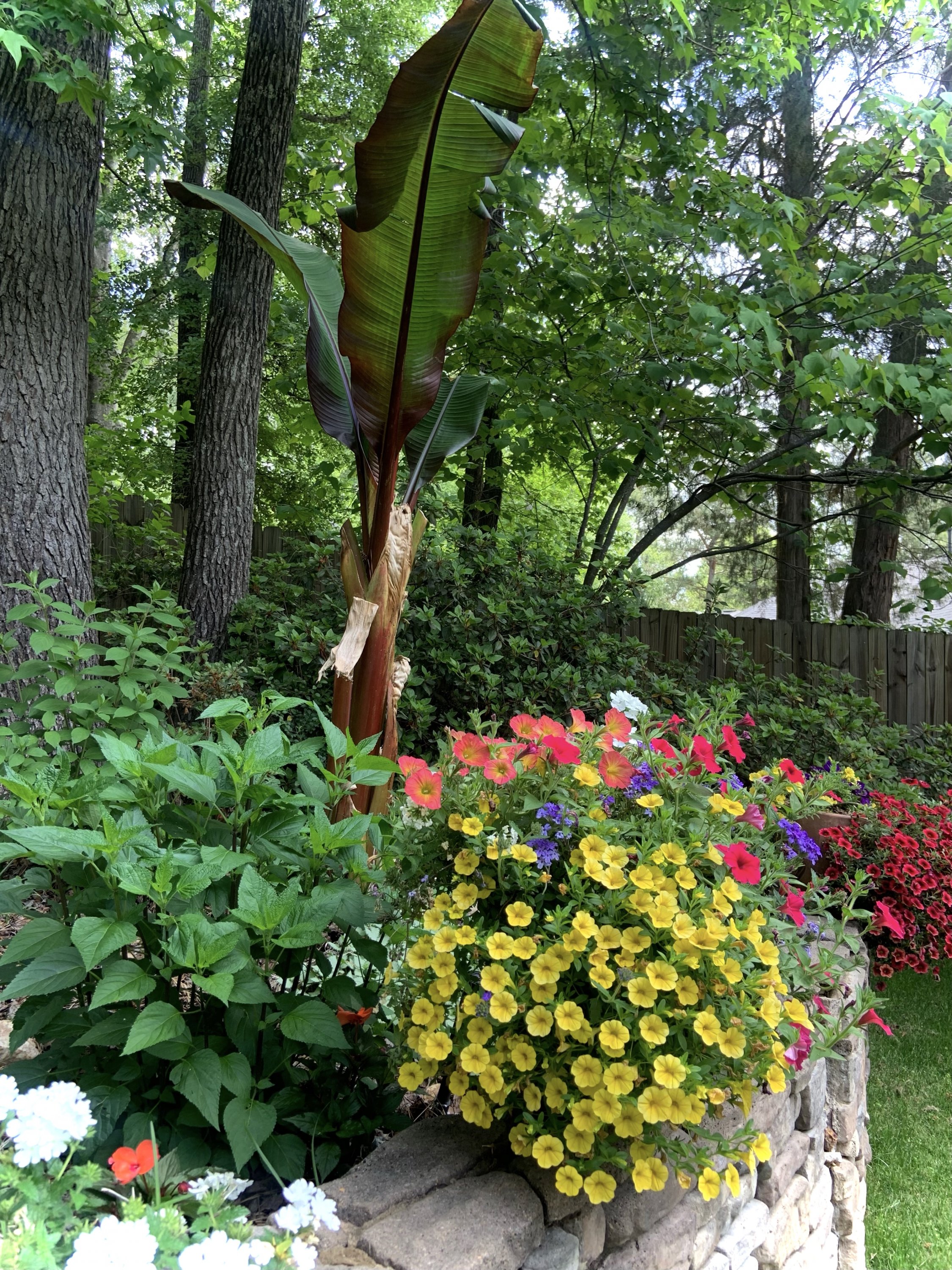 This colorful corner features a large container full of Superbells Yellow improved calibrachoa, Supertunia Persimmon petunia, Superbena Royale Chambray verbena and Superbena Whiteout verbena while Superbells Pomegranate Punch calibrachoa is seen in the distance. |
|
Proven Winners Has Put the Fun Back into Roses & Shopping for Valentine’s Day
Valentine’s Day is here accompanied by a slight dose fear of finding the perfect gift for your sweetheart. Candy is always the first thought quickly followed a vase of beautiful roses. The Garden Guy has another idea, how about a gift that keeps giving every year, and that is precisely what you will by planting Proven Winners roses.
When the first spray opened up in my Oso Easy Peasy® rose, I thought wow they have captured the essence of a fine heirloom. This was like a breath of fresh air as I had fallen in love with antique and heirloom roses when becoming the Director of the American Rose Society years ago.
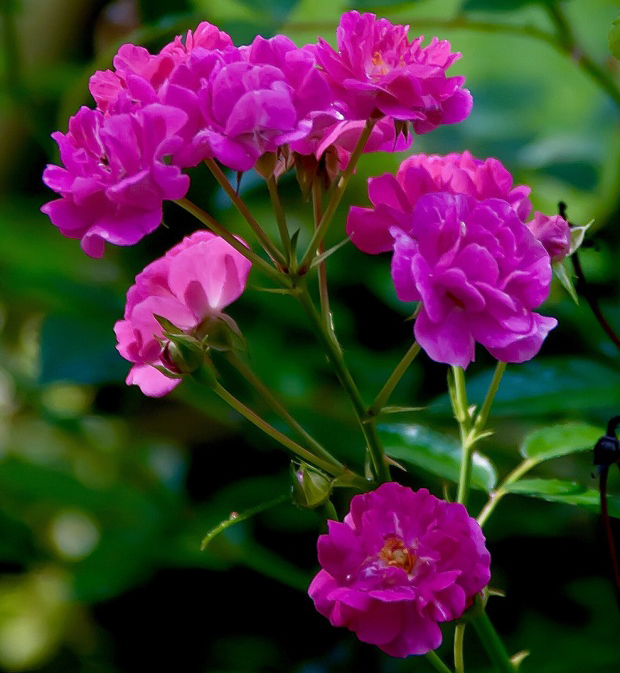
Oso Easy Peasy® however is one of 15 landscape rose being brought to us by Proven Winners but there is a connection to the American Rose Society as it was selected as an Award of Excellence Winner in the no-spray division. This means exactly what the name says, it can’t get any easier than this rose for the landscape.
Oso Easy Peasy® is relatively new in garden centers and The Garden Guy is lucky in that I had an early shot at it and for 2 years it is been just what the doctor ordered giving me beautiful flowers though I have offered it a big dose of neglect.
Finally, I did give it some nice partners. Those glorious those hot pink-magenta flowers are born at the base of an 8-foot tall, windmill palm and combined with Royal Hawaiian Maui Gold elephant ears. The lime green and hot pink rock!
This shows you the versatility of Oso Easy Roses, they excel from large sweeps or drifts in the landscape, incorporating with perennials in the cottage garden and yes, even with tropical plants if it’s your heart’s desire.
 Oso Easy® Paprika Oso Easy® Paprika |  Oso Easy Italian Ice® |
One of the most memorable mixed containers I have ever photographed featured Oso Easy® Paprika a wonderful orange and yellow blend and Beyond Paradise copper plant. A topical combination of incredible warm colors.
I relished the trials for the Award of Excellence when I was director of the American Rose Society as it was reminiscent of university trials and in some ways more rigorous. At the time they were geared mostly for miniatures but now incorporates miniflora, today’s landscape shrubs.
Oso Easy Peasy® isn’t the only winner Proven Winners has from the American Rose Society as the red-hot Oso Easy® Urban Legend® is also a winner. Vibrant red with a crown of yellow stamens makes this one of the most sought-after roses for the landscape. Of course, as with Award of Excellence winners it is packed with disease resistance and performance.
|
|
Making their debut this year is a collection of three Reminiscent™ roses. That name says it all the look and smell as if they came out of Empress Josephine’s Garden, at Malmaison. But they are new remarkable breeding from Serbia and therefor new to US gardeners. Seeing the cupped petals of my Reminiscent Coral took me back to my favorite heirloom roses. There are also pink and cream selections
Roses need six to eight hours of direct sun each day. Morning sun is essential, but a little afternoon shade is tolerated. Good air movement helps the dew and rain dry quickly, further enhancing the inherent disease resistance, so space about 3 to 4 feet apart depending on your variety.
Before you plant your roses, get the beds prepared by incorporating three to four inches of organic matter and tilling to a depth of 8 to 10-inches. The ideal soil pH for roses is between 6-6.5. Planting on raised beds further maximizes good drainage. By all means, finish your bed or planting with a good layer of mulch.
Feed your roses with a slow release or controlled release fertilizer per formula recommendation. Apply at the start of spring growth and again in mid-summer. I like to prune
In the landscape, your options will seem to be endless. Be bold - plant enough to make a landscape impact using them with your favorite perennials and a few splashes of annuals. Don’t forget mixed containers too! Proven Winners has put the fun back into growing roses and shopping for Valentine’s Day. Follow me on Facebook @NormanWinterTheGardenGuy for more tips and photos to inspire.
Wojo’s Jem Vinca – Extraordinary Spiller Plant No Matter the Season
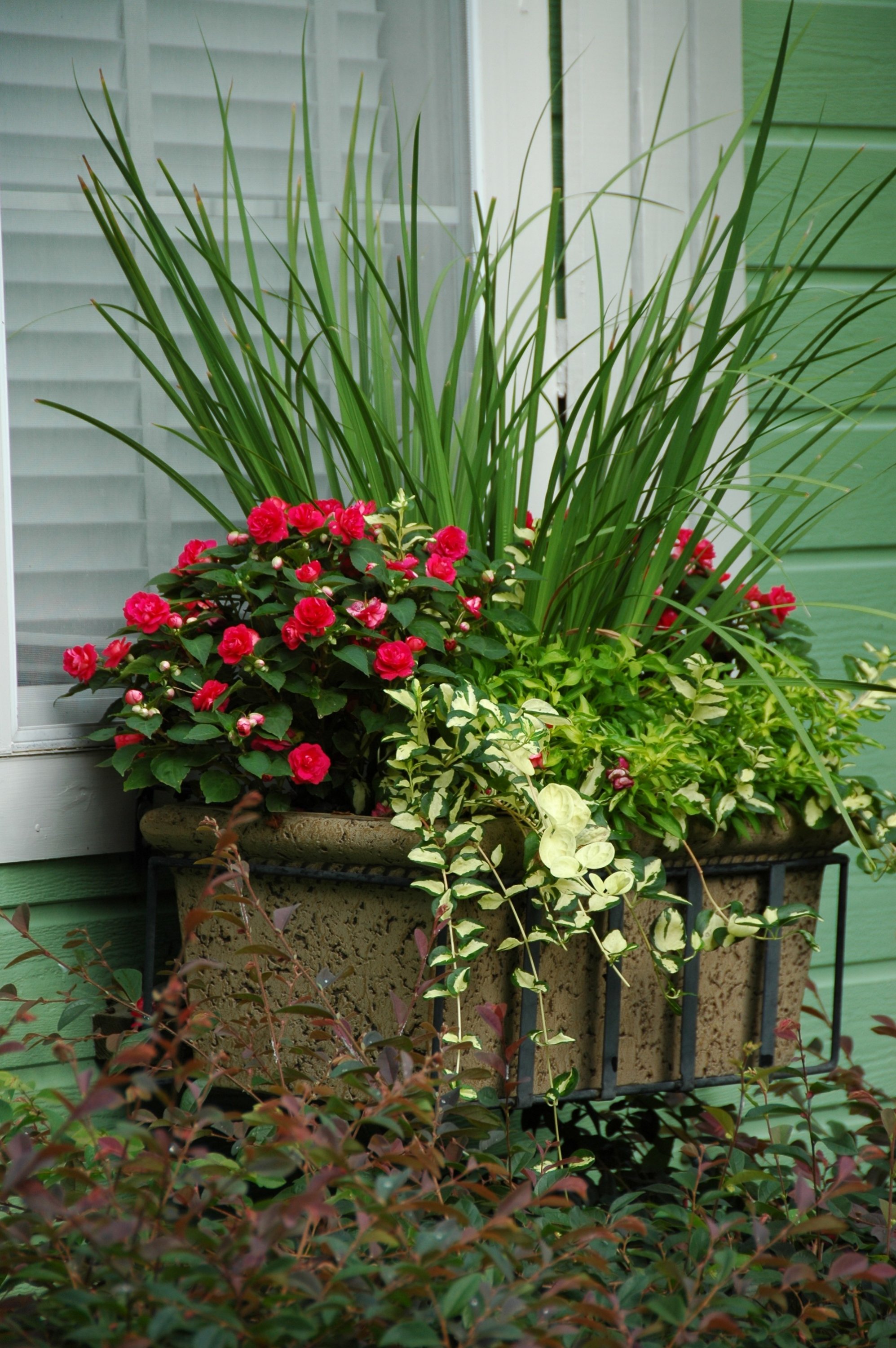 |  |
You may be thinking about designing mixed containers for the holidays or the winter season ahead and when you do, you need to remember the name Wojo’s Jem. This is an exceptional variegated vinca that gives and incredible performance as a spiller plant.
When we give you the recipe of Thriller Filler and Spiller or Tall Small and Fall, I think sometimes we give too much credence to the thriller plant and let the filler be-treated as an afterthought.
It seems like it was only yesterday that the word vinca brought to mind the Madagascar periwinkle, now known botanically as Catharanthus. Wojo’s Jem is a variety of Vinca maculata or greater periwinkle that we can use as a ground cover. Now we look at the Wojo’s Jem as a hot, new plant for large, mixed containers.
Wojo's Jem offers the gardener great creamy-gold and green variegation on a vigorous groundcover or vining plant that will hang gracefully from a basket or cascade over the rim of a mixed container.
In holiday mixed containers, combine them with colorful, blooming Christmas flowers like cyclamen and holly fern. First, place larger plants in the middle of the container; then proceed outward, saving the vinca for an almost pocket planting.
In a hanging basket, do much the same. If using sphagnum moss-lined baskets, you actually will plant in the bottom of the basket, letting the foliage hang down. Hang the basket high enough to create a great vertical element, with the vinca growing downward 3 feet or more.
As spring rolls around lucky is the gardener that has window boxes. You, could not ask for a better cascading plant. Wojo’s Jem and Rockapulco double impatiens is a match made in gardening heaven.
In these containers, use a light, airy mix that drains well yet does have a good moisture- and nutrient-holding capacity. Heavy potting soil is not a good buy.
Necessary daily watering during the summer months means more frequent feeding also will be needed. Use Proven Winners controlled-release granules or Proven Winners water soluble fertilizer per label instructions for a long and glorious garden season.
Wojo's Jem makes great groundcover plantings. Filtered light seems to give the best performance, although morning sun and afternoon shade also are quite acceptable. Space them 8 to 12 inches apart.
It responds well to cutting back when too large for a container or to increase branching. In the landscape, pay attention to moisture as they are getting established. Once established, they are fairly drought tolerant.
This is a great choice as groundcover under trees where roots have grown above the soil surface. They are cold hardy through zone 7 with many gardeners touting them as returning in zone 6 as well.
I have raved about the boldly variegated foliage, but also note that they will occasionally produce almost iridescent blue-violet flowers. This is a wonderful combination with the variegated leaves.
It’s time to design your Holiday containers so plan a visit to your garden center. Remember to pick up some Wojo’s Jem vinca for the artistic touch to your designer containers no matter the season. Follow me on Facebook @NormanWinterTheGradenGuy for more photos and garden inspiration.
Plant the Supers in Early October – They Will Give Winter the One Two Punch
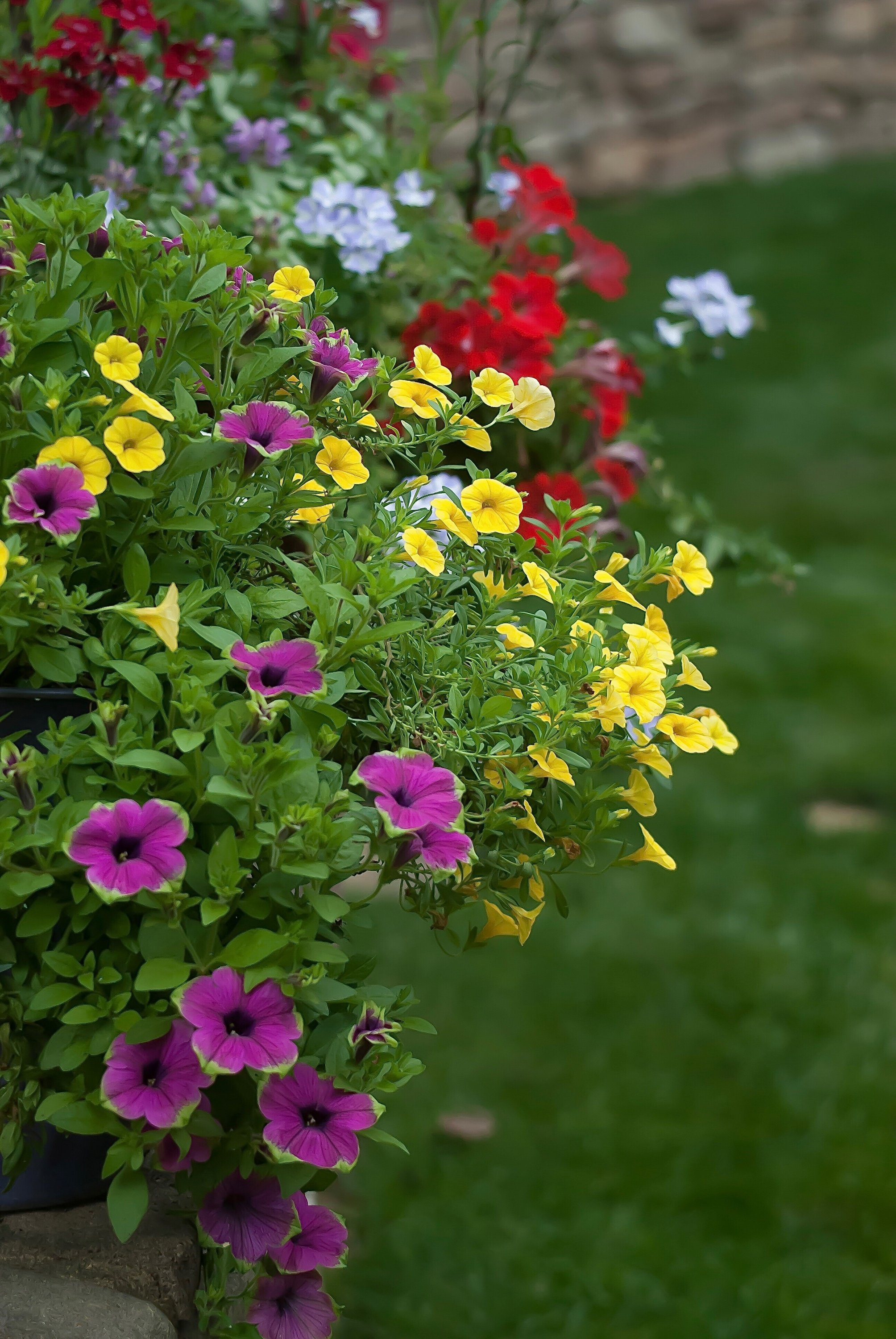 I remember April 3rd, like it was yesterday it was the day the Ruby-throated hummingbirds returned to my house. Oddly it was a feast of the Superbells® calibrachoas. This story, however, started the first week of October which is when I planted them, as well as Supertunia® petunias, and Superbena® verbenas. I’ve been doing that for three years!
I remember April 3rd, like it was yesterday it was the day the Ruby-throated hummingbirds returned to my house. Oddly it was a feast of the Superbells® calibrachoas. This story, however, started the first week of October which is when I planted them, as well as Supertunia® petunias, and Superbena® verbenas. I’ve been doing that for three years!
I’ve been touting this for zone 8 and warmer for a couple of years. To be honest after what I have seen I would definitely try in Zone 7 too. The problem however lies in the producer, the garden center and then in a large part you the gardener. In other words. Are you a believer?
So, my first hummingbird was April 3, but my first butterfly of 2022 was January 9, it was a large pristine Cloudless Sulphur, on Superbells® Grape Punch™. The winter turned pretty cold for a few weeks, a few
23-degree mornings and a boatload of days in the mid and upper 20’s. There was really no problem and we entered a really warm period kicking everything into a state of growth and blooms.

Spring had sprung so to speak and we found ourselves with blooming azaleas, loropetalums, flowering quince and camellias of course. The long-range forecast was looking favorable and then suddenly, well you can guess. The forecast seemed to drop on a daily basis predicting really cold temperatures for the morning of March 13 and a freeze on the 14th. I suppose it depends on whose thermometer you use but at my house it was 21 with others close by hitting 20-degrees.
I was speaking at the Dirt Friends Festival in El Dorado, Arkansas that weekend and was helpless to try and protect. I did enjoy their episode of winter, acting like a kid taking pictures and videos of the snowstorm in their art district. It was beautiful.
I was expecting the worst when I returned home and sure enough, the azalea blossoms were toast. When I looked in the backyard, ‘The Garden Guy’s’ paradise, the Superbells and Superbena verbenas were still blooming profusely. The Supertunias which had been budding up, suffered no damage either.
So, this brings me to, April 3. The three Ruby-hummingbirds I had that day flew back and forth feasting on Superbells® Pomegranate Punch™, Grape Punch, Dreamsicle®, and Yellow. These flowers are so extraordinarily colorful they bring joy but add hummingbirds and swallowtails and you may start to do the garden happy dance or in my case I grab the camera.

Almost everything I am talking about was planted in mixed containers, which is a further testimony to their ability take on winter in the south. I always have a few Superbena verbenas in the ground as they give me a perennial performance. will always be in containers with good sunlight.
Be creative designing your mixed containers whether they be baskets, window boxes, bowls, urns or extravagant clay pots like olive jars. This is also the time to use the best potting soil, nothing heavy with clay soil from the garden.
Since the ‘Supers’ are such prolific bloomers, they are counting on us as gardeners to keep them fed. During the warm growing season most of us water on a daily regimen which will leach out the nutrients. You can use controlled release granules per your formula recommendation but don’t be afraid to use a-dilute water-soluble fertilizer at least once a week like most of the commercial landscapers.
I have been asked many times if I cover my containers or move them to a protected location and the answer is, no. I do make sure they are watered, I don’t want them to go into one of the deep freezes thirsty. My hope is that you will find or order the ‘Supers’, Superbells calibrachoas, Supertunia petunias and Superbena verbenas for fall planting you will be amazed come spring. Follow me on Facebook @NormanWinterTheGardenGuy for more photos and garden inspiration.
Fall Vegetables from Proven Harvest Can Be Mighty Tasty
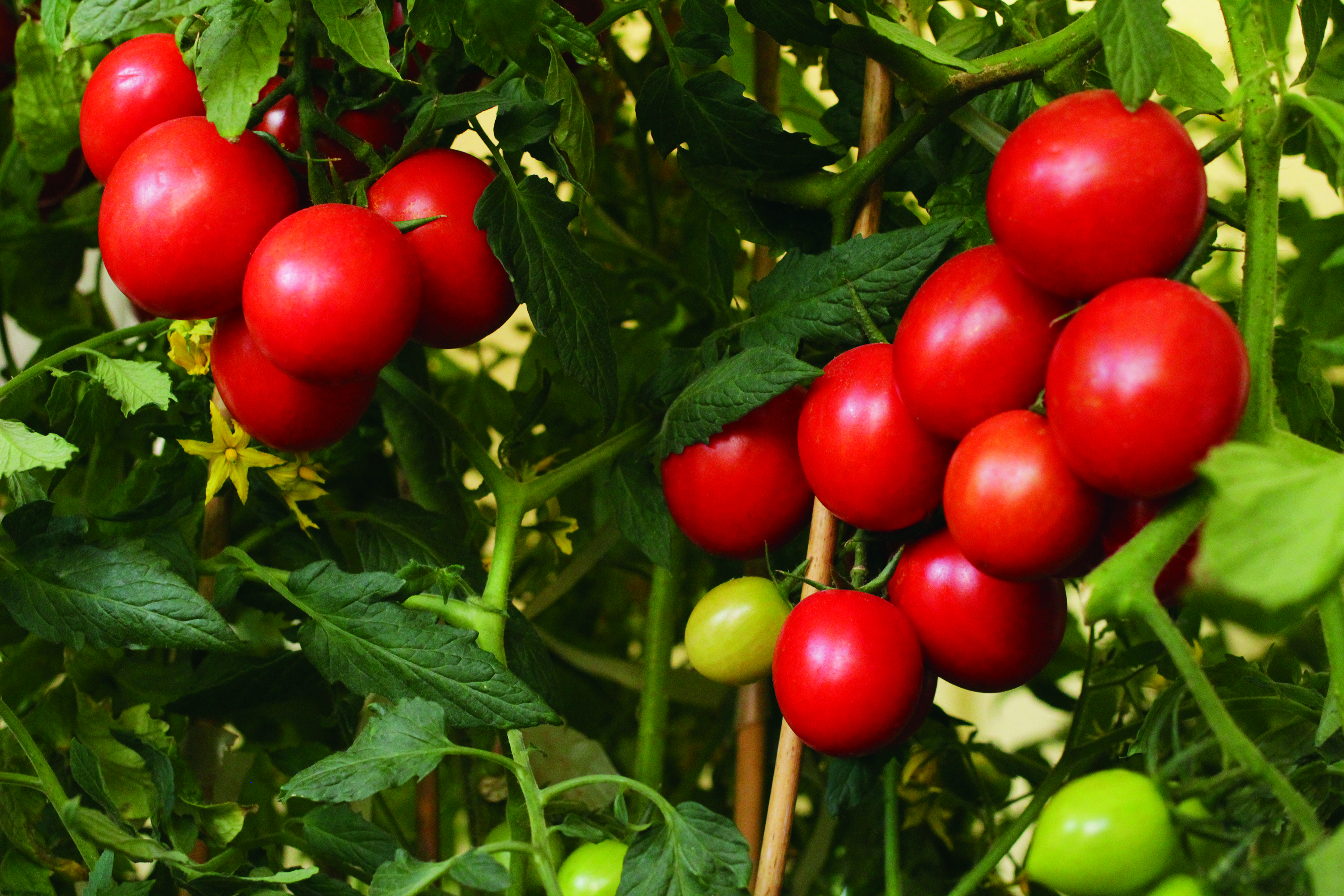
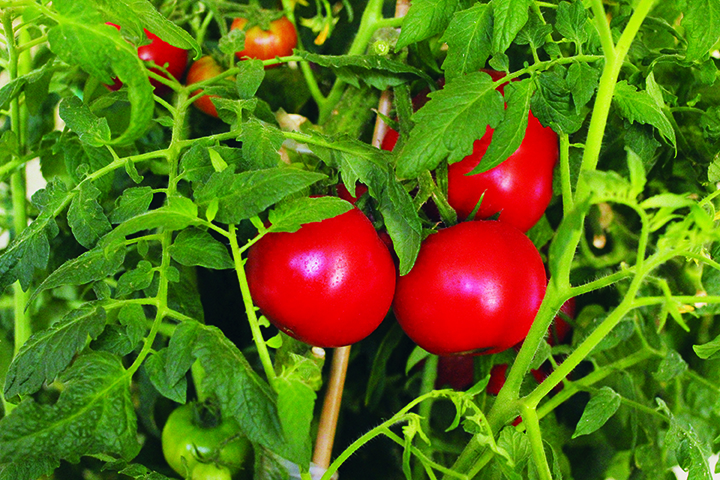
Most gardeners think spring is the best time for gardening. But if you live in a southern or western state, and haven't tried a fall garden, consider putting one in now because it can be the best garden you’ll ever have.
When I was with Mississippi State University, thousands of visitors would come out to our October Fall Flower and Garden Fest and see what a terrific fall garden can be. I will tell you the produce is mighty tasty. Fall-grown produce is better because it ripens in a cooler, less stressful time of the season. It suffers less from sunburn or sunscald, and fall has fewer insects and diseases.
When should you plant? One-way to figure this out is to count backwards from the first freeze annually. For the sake of example, let's say November 1. How many days are there from planting the seed until first harvest? Let's presume something like 60 days. Do you expect your plant to produce for maybe 30 to 60 days?
From these numbers, you can see it's planting time now for crops that can take no frost. Cutting back or carrying tomatoes through summer for fall production is a source of many an argument. Spring-planted tomatoes can be cut back for renewed fall production only if the plants are healthy and free of insect problems. Trying to carry an unhealthy plant through the summer usually means disaster. This summer has been a challenge to carry vegetables until fall due to the intense heat.
I prefer planting young tomato transplants now. All of the Tempting Tomatoes® are prime targets especially if you will be growing some in containers. But if the tomatoes are to be cut back, avoid removing too much foliage since hot weather can burn the plants to death. After pruning, apply additional fertilizer and water to renew growth and increase tomato production well into fall. I promise you will be a star when you serve homegrown ripened tomatoes for Christmas.
Growing veggies in containers is a great idea for fall. Over the last decade there have been some great new varieties of tomatoes, and peppers that are perfect for growing on the patio. Proven Winners® Tempting Tomatoes® Goodhearted® is one such variety. Though new it is already an award winner. Imagine picking tomatoes on your patio or deck from a plant that is 18-inches tall and wide. The Garden Guy grew the new yellow Tempting Tomatoes® Patio Sunshine, Holy Wow, it will forever change any thoughts you had about yellow tomatoes not being tasty.
If you are convinced to try veggies in containers for Fall, go full board, grow Proven Winners® peppers like Fire Away, Amazel® Basil and garlic chives too. Your homemade pesto will be just a couple of steps away, right out the back door. The containers need not be that large or extravagant to harvest a bounty of produce. Being easy and able to move once or twice for some frosts just might be the key to having fresh tomatoes for the holidays. My main rule is selecting a good light potting mix that drains well. Of course, there is also that no-brainer rule of making sure your container does have drainage holes.
Even though it is hot now, try fall gardening. When you harvest, the temperatures will be cool and the produce will be the best tasting ever. Follow me on Facebook @NormanWinterTheGardenGuy for more photos and garden inspiration.
We are currently shipping our seeds to western and southern states, to view our array of seed offerings please click here.
Wet Prone Soil Problem Solved
As a horticulturist and faculty member with Texas A & M, Mississippi State and University of Georgia I spent a lot of time problem solving--most often in trying to improve wet prone soil. Obviously, these projects could mean grading, installation of French drains, raised beds, organic amendments, and usually incorporated prepared landscape mixes. Then there was the solution that brought the angels singing, tears of joy, butterflies, hummingbirds and tantalizing fragrance. This solution is called ‘The Right Plant for the Right Place'.
Proven Winners® has so many plants available for wet prone soil I can only deal with about four favorites, four aces if you will, in this allotted space. Despite the fact that these are native to a wide geographic area, it is a rarity for me to find even one in the landscape.
Take for instance Sugar Shack®, a wonderful compact fragrant flowered buttonbush known botanically as Cephalanthus occidentalis. The buttonbush is native to all but 11 of the lower 48 states. This is one of those plants that if you looked at the bloom through a pair of binoculars or a telephoto lens you would move it to the top of your must-have list.
 |  | 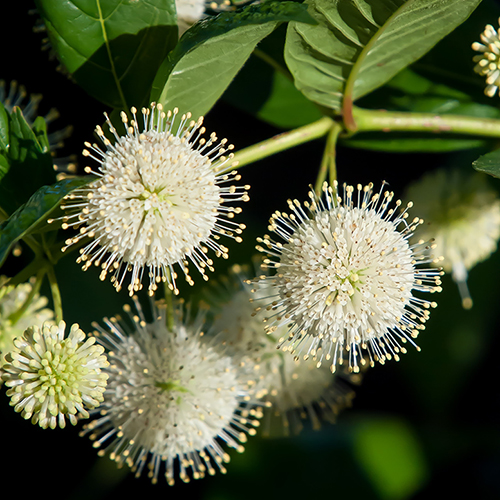 |
Sugar Shack,® and all buttonbushes, bring in a host of butterflies, most considered among the most beautiful. According to Texas A&M, 24 species of birds will feed on the resulting seeds. Incredibly those grown at the water's edge also feed waterfowl.
The native summersweet or sweet pepperbush known botanically as Clethra alnifolia, is also a native with a huge geographic range. None of those common names do the plant justice. Proven Winners® however offers two varieties whose names tell the whole story. They are Vanilla Spice® and Sugartina® Crystalina, offering one of the top olfactory experiences of a lifetime.
 |  |  |  |
Fragrance isn’t all as these white flowered bottlebrush spikes bring in more bees and butterflies than almost any other shrub available to the landscape. Vanilla Spice® can reach 6 feet in height while Sugartina® Crystalina will top out at three feet. My Vanilla Spice® is planted in proximity to a Japanese Maple that turns red in the fall, partnering with the Vanilla Spice® turning yellow.
The Virginia sweetspire, known botanically as Itea virginica, is seen in more landscapes than the first two, but are not even close to the plant’s true potential in landscapes everywhere. It is native to over 20 states from Maryland to the South. We’ve used them in areas where water runoff from buildings keeps the soil moist, thus stopping the potential for erosion in its tracks. It forms thicket-like branching but not to the point of a problem looking to develop.
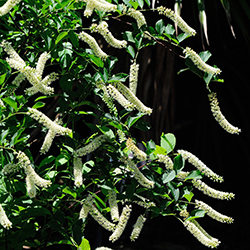 | 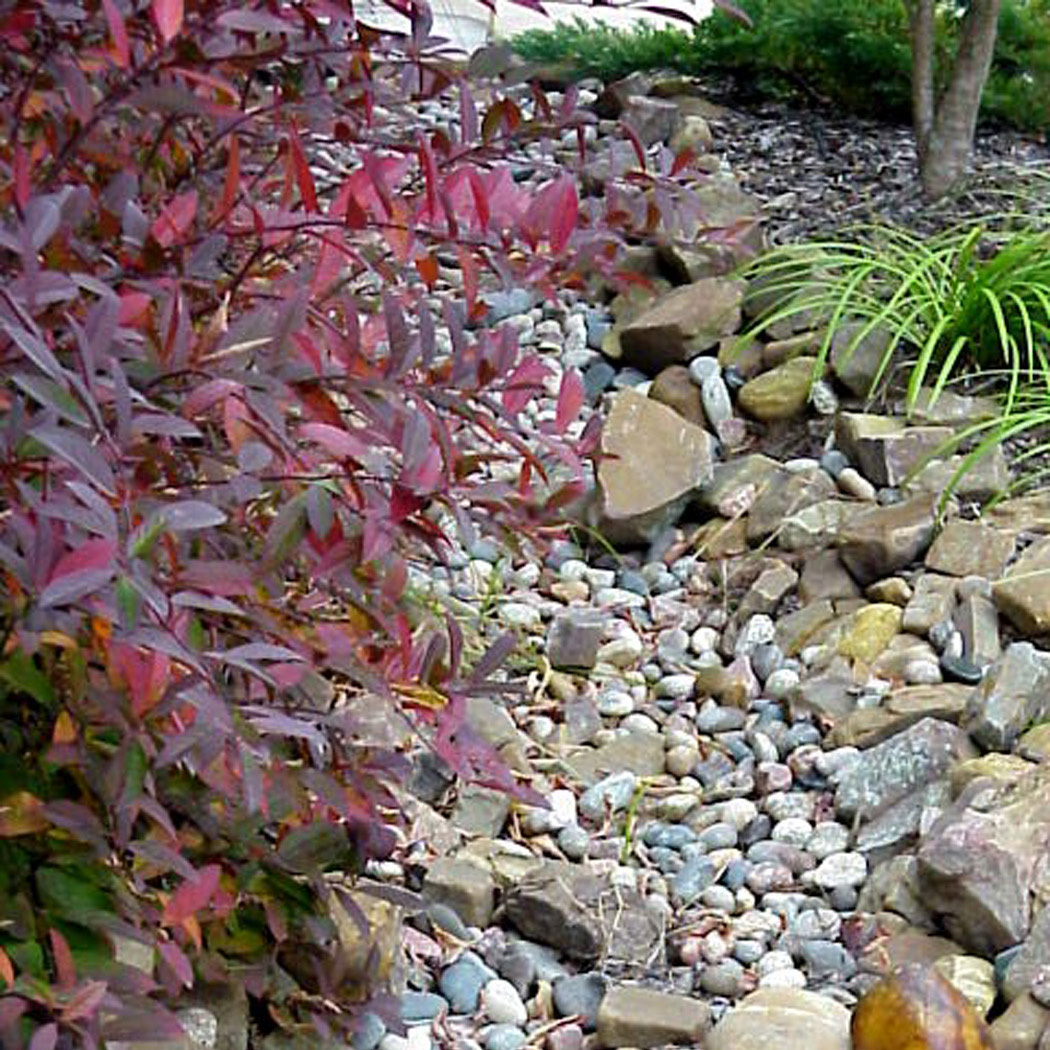 | 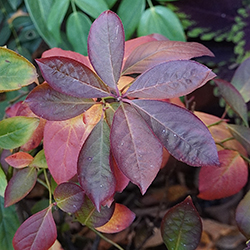 |  |
Virginia sweetspire, also known as Virginia willow, are delightfully fragrant flowered shrubs where the long white tassel-like blooms are like little perfume factories. If you don’t think fragrant, consider Proven Winners® varietal name Scentlandia®, that says it all. Like Scentlandia®, the variety Little Henry® also gets about 3-feet tall with longer blooms and should be rated as champion for its blazing fall red color with leaves holding extra-long into the season.
Proven Winners® newest Virginia sweetspire, is the compact Fizzy Mizzy®. Though it may sound like a bad hair day, it is really a one of a kind, whereby the white blooms borne by the dozens are held erect, giving a most unusual look in the landscape.
At the Coastal Georgia Botanical Gardens on the edge of the Shade Garden where sun and shade converged and the soil always moist, a sweetshrub, a native Calycanthus hybrid, was chosen. As you walked the pathway in the garden the aroma told you to be on the lookout for a horticultural wonder.
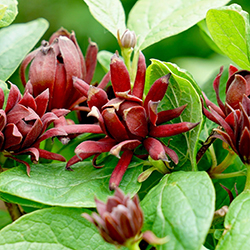 |  | 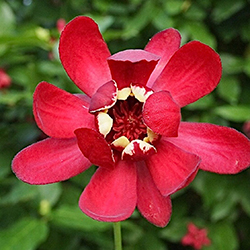 |
Sweetshrub also known as Carolina allspice is seen most often in old home landscapes but Proven Winners® is about to change that with this year’s new introduction Simply Scentsational®. After thousands of sniffs ‘Plant Hunter’ Tim Wood, says this is the nicest smelling sweetshrub in the market. Reaching 72 inches tall, this sweetshrub will be adorned with burgundy red blossoms reminding you of melon, strawberry and banana fragrances, or depending on what your nose knows, it might be juicy fruit gum. Oh yes you may want give the 10-foot tall, Aphrodite® a try too.
Now you see that wet prone soils are really no problem at all, they are wonderful opportunities for plants that offer fragrance, bees butterflies and untold beauty. Follow me on Facebook @NormanWinterTheGardenGuy for more photos and garden inspiration!
The Moonlit Garden - Is Enchanting, Magical and Full if Memories
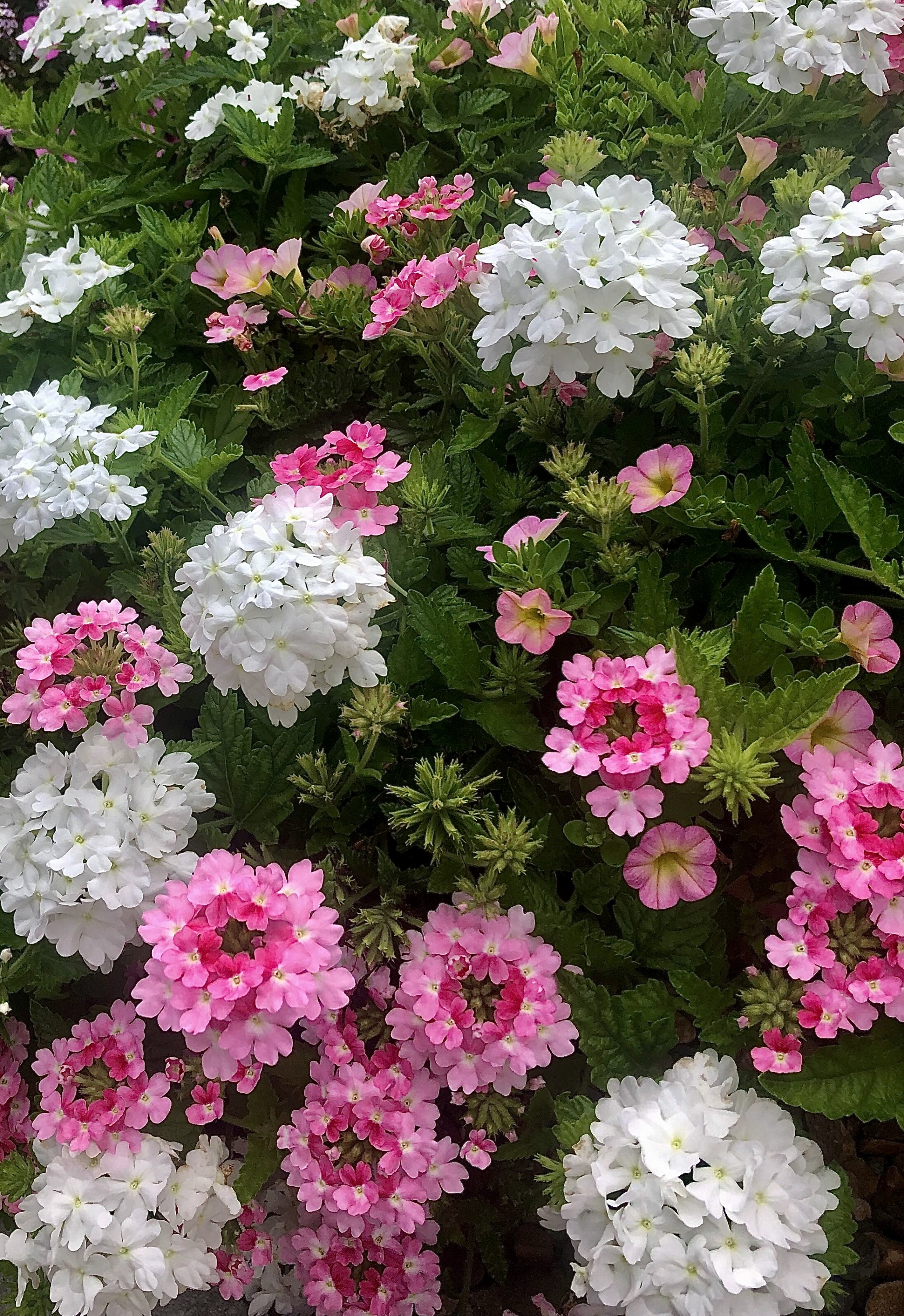 Each year as my color design guru son James orders plants for use at his clients’ homes, from those that look like historic cottages to palatial garden estates, those on the waterfront to those considered mountainous, the one color that I can be guaranteed that will be in heavy use is white.
Each year as my color design guru son James orders plants for use at his clients’ homes, from those that look like historic cottages to palatial garden estates, those on the waterfront to those considered mountainous, the one color that I can be guaranteed that will be in heavy use is white.
When spring arrives every year with all of its glorious colors -- purples, pinks, yellows and reds, the color guaranteed to catch your eye every time is white. Of course, a scientist would most likely say white is not a color, it absorbs no other color or wavelength and is pure.
This goes in hand with the bride wearing a white dress or the nurse wearing a white uniform. It’s like the morning you wake and see the pure white snow on the ground that hasn’t been violated in any way.
Notice what Mother Nature does in the forest. The dogwoods seem to glow with their blooms, attracting our attention to the glistening, reflective bracts in an otherwise simple forest of green.
White Flowers Say Planning and Precision
White flowers like this year’s new Soprano® Impatiens not only give definition to those shadier areas of the landscape, but also offer a sense of cleanliness and purity. They also give a feeling of planning and precision. In other words, the gardener knew what he was doing by carefully planting white.
Notice I said carefully. While it can be argued that every other color looks its best partnered with white, they can also be overwhelmed. White is so flashy and bright it can steal the promise or potential of its companions. We notice how Diamond Frost® and Diamond Snow® Euphorbia with their tiny white flowers enhance the look of all their companions.
When possible, use white bedding plants like Supertunia Vista® Silverberry, Supertunia Vista® Snowdrift or Supertunia Mini Vista® White Petrunia at the front of the border, along sidewalks or trails to define where the walkway begins. This makes the nighttime stroll in the garden come alive.
Give a Vertical Dimension with Climbers and Tumblers
White is the last color to disappear as sun sets in the evening. If it is a moonlit night then they will reflect light all night. Use flowering vines like the Proven Winners® new Thunbergia, Coconut A-Peel®, or the topical Bombshell™ White Mandevilla to add nighttime interest as they give a vertical element by climbing Victorian style tower or trellis.
While ‘The Garden Guy’ loves hot orange, red and salmon, if you walked onto my patio tonight the Superbena® Whiteout Verbenas would be seen tumbling over the rims of containers and cascading over the rock wall in the distance. This is a verbena for all time, offering vigor and large flowers glistening in the moonlight.
Making the Moonlit Garden Magical
The moonlit garden can be incredibly magical with the addition of shrubs with white fragrant flowers. This will be the place where childhood memories are made. Memories of Mom and Dad and how life was, back then. Proven Winners® has introduced the Illuminati series of fragrant Mockoranges which will have three varieties with the addition of the new Illuminati Sparks™ in 2023. Then there are the native Clethera or summersweet, like Vanilla Spice® and Sugartina® Crystalina, that by the mere mention of their name says olfactory experience. The shrub that everyone has been talking about however, is Fizzy Mizzy® a compact fragrant Virginia sweetspire making its debut this year.
The Moonlit Garden is enchanting and magical, it just takes a little planning. Proven Winners®
Designing With Today’s Supercharged Plants
The Garden Guy lives in a strange hardiness zone. I am in zone 8a but very close to 8b and not too far from 7b. I suppose it is the changes in altitudes and valleys that create the climatic drama. I moved to this house in early spring of 2019 and it has been simply amazing. I’m wondering however, it may also be amazing for many other gardeners in the South and if so, it may very well be that our plant material is much improved.
Since March of 2019, all of the Rockin’ Salvias have become very happy perennials in my garden, as have Luscious® Royale Cosmo, Luscious® Marmalade, Luscious® Citron™ and Luscious® Citrus Blend™ Lantanas, Superbena® Stormburst and Superbena® Whiteout™ Verbenas.
That is not nearly all, Vermillionaire® Cuphea has perennialized, Pyromania® 'Blaze' and Pyromania® 'Backdraft' Kniphofia all returned as have the
Be My® Calla lilies. My October planted Supertunias® lasted until the monsoons of July and my April 2021 planted Superbells® Grape Punch™ Calibrachoas are blooming now and 3-foot long.
One more, for the first time in my life I had a plant bloom from April 2021 every day until April 28, 2022 and it is not going to stop. In other words, it has been a perpetual bloomer and that plant is Augusta™ Lavender Heliotrope which is making its debut this year.
My temperatures reached low 20’s at least a half dozen times with the coldest being 21 on March 13. So, your story may be different. It seems that all of this plant vigor opens the door to new design opportunities which really requires just a little more planning or thought on our part.
Some gardeners are mistaken thinking that a perennial is a plant you set out and it thrives for a lifetime without any maintenance. This is not the case but on the other hand it can be said that perennials are easy to care for. The most important rule in selecting a perennial is to make sure it is appropriate for the site you have in mind. Because if it is a perennial, it will occupy that space for some time. So here is the first dilemma—are you wanting your plant to be perennial where you are planting it? Probably most of us are, which means let’s assume it will be and hope.
Almost everywhere I plant has a gentle slope and years of leaves decomposing on the ground. I have been plagued with tight clay my whole life and now I can pretty much shout BINGO. Soil preparation for perennials is about the same as for annuals. Before you ever lift the shovel, consider what your expectations are for the perennials you have purchased.
The most important question may be, do you have a vision, of that you want that salvia, lantana or coneflower to look like in the third year? This really points out dilemma 2—are you expecting or wanting the plant to be perennial and then you have to consider how much larger they may be in later years.
Once the goal is in place then you will most likely have the realization that proper soil preparation is essential. Most often gardeners find that making major soil improvement corrections in the second or third year can be virtually impossible without completely redoing the bed.



Perennials look best when grown in a border, whether it borders a fence, wall, or driveway. When planting a border against a fence or wall leave space between it and the taller backdrop plants. This allows for better air circulation, more light penetration and ease of maintenance from the rear of the bed.
Island beds in the middle of the lawn have become very popular as they allow for viewing from all sides. In these types of beds, the taller plants are used in the middle and layered downward to the perimeter. The island bed normally requires a little more effort to keep it looking attractive since it can be viewed from so many angles.
When creating the perennial border, plant in large bold informal drifts of color. In other words, plant in groups versus spot planting. In addition to considering the colors, group differing textures or shapes of flowers too. For instance, the large blooms of Rainbow Rhythm® daylilies combine wonderfully with spiky blossoms of Rockin’ Salvias. Coarse or tropical textured foliage of plants like Toucan® Cannas and Heart to Heart® Caladiums give added interest to the garden.
A mixed border of annuals, perennials, and woody evergreens is one of the best styles for gardeners in urban neighborhoods. Woody evergreens, like hollies and conifers, serve as the foundation of the border, the bones, and certainly a backdrop for colorful flowers. Green is also a most important color flower border too as plants like the Graceful Grasses®, ColorBlaze® Lime Time® coleus and Shadowland® Hostas can be effectively used as transitions between colors. There has never been a more enjoyable time to be a gardener, get to the garden center this weekend.
Follow me on Facebook: Norman Winter The Garden Guy for more photos and garden inspiration.
Try the Conceal & Reveal Approach to Your Landscape

Cozy outdoor rooms have become goal number one, perhaps from the stress of the job-related commute or it just may be anxiety-related as we watch everything the world has on its plate. We want to come home to our nest.
The term nesting has been embraced by the landscape industry as they strive to help homeowners achieve their outdoor dreams. If the budget allows it, a landscape designer and contractor may be just what you need. If your project will be a DIY, have no fear.
Keep your home’s architectural style in mind when creating an outdoor room-ideally, outdoor spaces should accentuate the indoor spaces. Notice the plural form, you may have the space and the need for more than one outdoor room.
It seems that many homeowners planning outdoor rooms are inspired by (or faced with) three situations. One is the need to improve a landscape someone else started. Usually this is the easiest, that being said, I know full well that sometimes what we inherit comes with huge issues.
The other two are “blank slates”--either wooded lots or acreage, which to me is the most enjoyable. Here we can allow nature to ultimately guide us by virtue of native trees, shrubs, animal trails, streams and if we are lucky, changes in elevation.
Then there is the dreaded blank slate, where everything was bulldozed and, more than likely, a fence was installed, leaving a landscape somewhat reminiscent of a miniature Fort Apache. In this case, you think your first consideration should be where to put the cannons.
The scorched earth, bulldozed scenario dictates that you begin by adding a porch, patio or deck as your first outdoor room, followed by planting trees, and shrubs for screening. You might think screens are for only large areas, or those with no fence, but this is not the case. Living screens can make small backyards feel more natural and private.


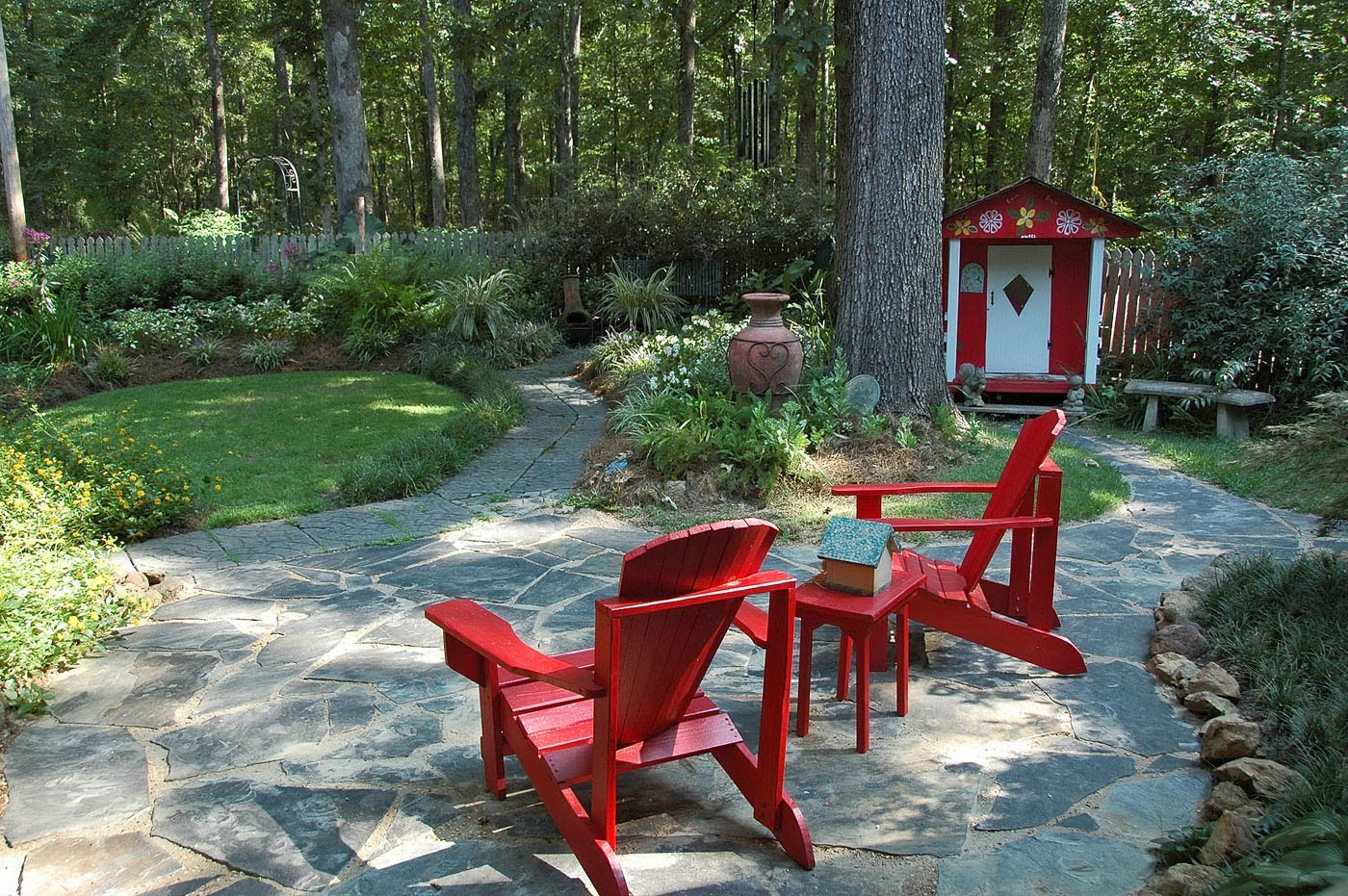
Before you begin any actual work, jot down a few ideas about how the space will be used and all of its applications. As you contemplate, you may realize that you want more than one “room”- perhaps one that is sunny and colorful, and the other with cool shade, and/or even a space where there is fire, food and maybe even water.
The size of your landscape will dictate how many rooms you can realistically have. The current trend in interior design is the “open concept”, with kitchen, living, and dining spaces all within view. In the landscape vistas are welcomed, but the secret gardens and private spaces are those that are most often treasured. If your space is small, then a courtyard garden like those in New Orleans or Savannah may be just what is needed.
As you develop your outdoor rooms, consider using the “conceal and reveal” approach versus the indoor open concept. The purpose of conceal and reveal is to create a garden of participation. The entire garden can’t be seen from any one point, so walking out the backdoor from your first outdoor room, which is the porch, patio or deck, you initially see only one portion of the yard. The remaining landscape is a mystery, your paradise is hidden, as is the chicken coop garden, or a special reading area concealed by climbing clematis.
Once out in the garden, you catch glimpses, like looking through a window, there appears to be a place of rest and relaxation just down a path, around the corner. You have become an active participant, strolling down the pathway. In the new room or location, the patio or where you started is hardly seen or no longer visible. Where the garden concludes is up to you.
Proven Winners® has everything you need for your rooms--fragrant plants, flowers for pollinator perfection, and vegetables for the kitchen. Trees, shrubs, perennials and annuals are available for your zone no matter where you live. If you can dream it Proven Winners® can help you create it.
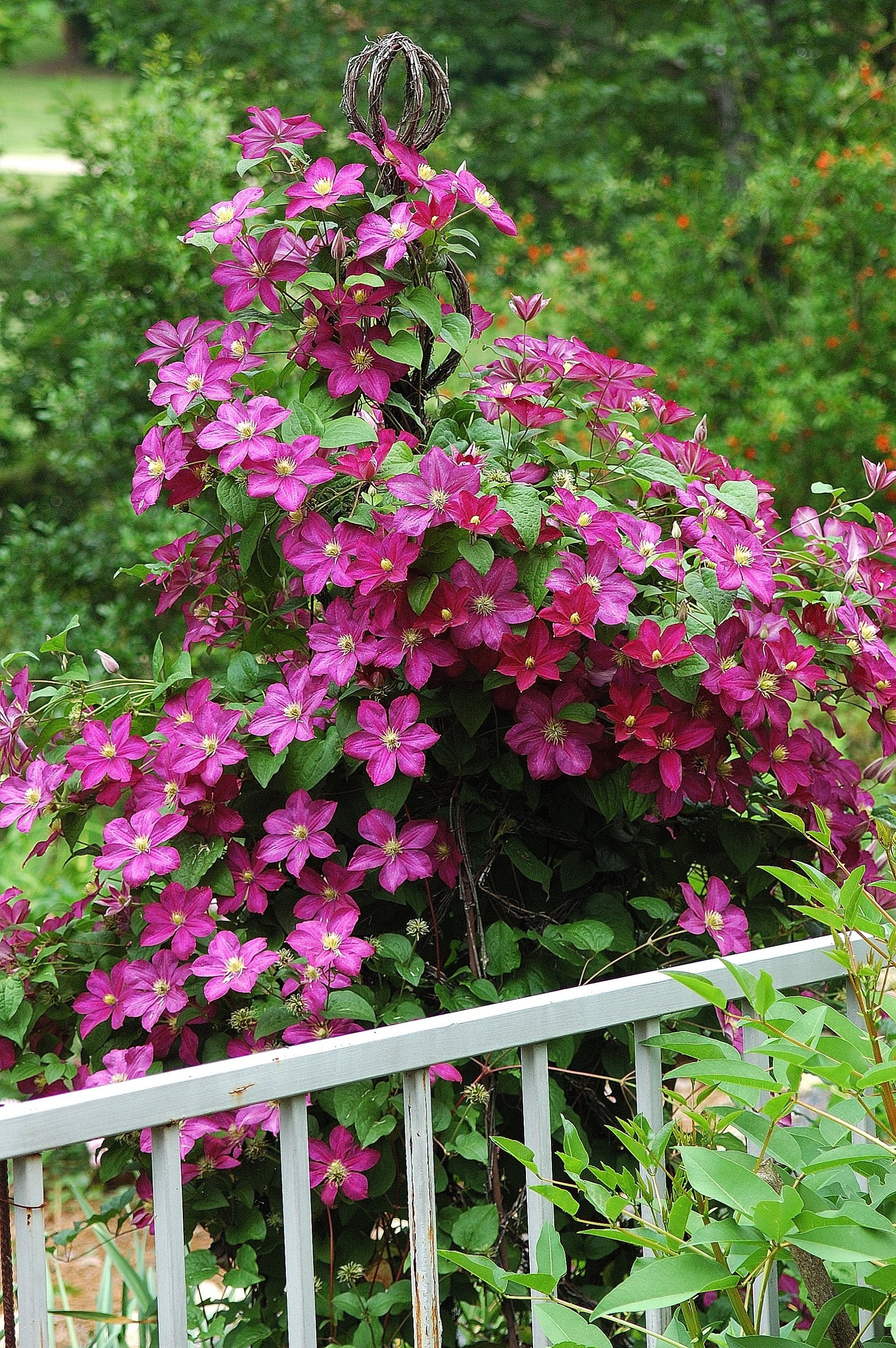


Key to the Green Thumb Getting it Brown in Soil Preparation


As spring clean-up is underway it has become quite apparent to me that a gold mine of soil amendments is being placed at the roadside. I suppose it has always happened, but with the advent of paper lawn refuse bags it is now much more apparent. The scene is surreal.
On the positive side, more and more County Public Works Departments composts this waste and give it back to the public. Does your county?
I suppose the real question is: Do you take advantage of it? Those, dozen or so bags of leaves at the street side have the potential of helping you start a compost pile that will pave the way to a great new azalea bed, cottage garden or tropical paradise.
When I was the Director of the Coastal Georgia Botanical Gardens, we seemed to always have a large pile of compost that would to be incorporated into the Louisiana iris display garden, Sun Garden, Shade Garden or Pollinator Garden. Compost never goes out of style!
My children grew up learning the phrase, "the key to the green thumb is how brown it gets first, in soil preparation." Compost, that dark crumbly organic material, is the key ingredient to the garden recipe. Incorporating organic matter helps loosen tight heavy soils so they will drain or improve sandy soil's ability to hold water and nutrients. You win no matter your soil type.
 C
C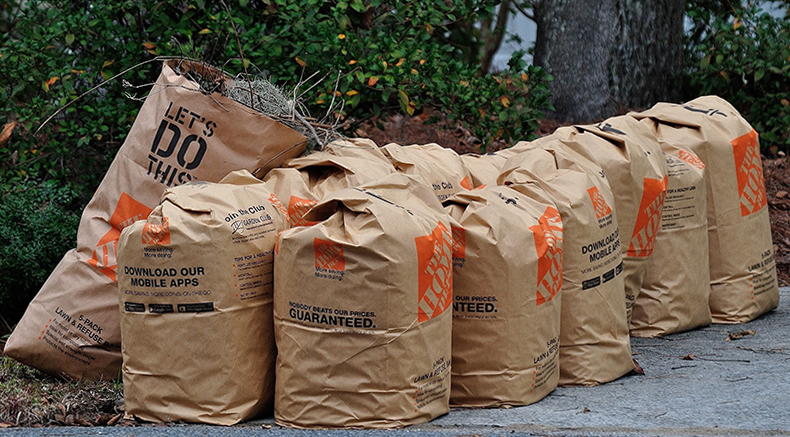
Compost piles can reach temperatures of 150 degrees inside from the heat given off by the microorganisms. I love seeing large piles of compost on a crisp morning. They will be smoking as if they are cooking. Actually, they are cooking up something good for us to use in the landscape.
You don't have to have big bins - let the size fit your yard. One of my favorite methods of building a compost bin is to use discarded wood pallets. You can easily make a square bin from four wood pallets by wiring the corners together.
These smaller scale units can be ideal by layering leaves or grass clippings 3-8 inches tall, covering them with 2-3 inches of top soil, and repeating the layers. The grass clippings provide nitrogen that aids in decomposition. It's not a bad idea to add a half cup of ammonium nitrate per eight bushels of leaves.
You may be worried that compost piles will stink, but under proper conditions they do not have an unpleasant odor. A true gardener relishes that earthy fragrance. Keep the pile moist, not soggy, and well aired for good microbial growth, good heating and decomposition. Lack of moisture and air will reduce microbial activity. Too much moisture may cause undesirable decomposition, which can lead to foul odor.
With proper nitrogen and turning of grass clippings, the process can take as little as 10 to 12 weeks. Leaves take a little longer, and larger pieces of plant material, such as wood chips or limbs, may take six months to a year. You will be amazed at the potential of bark to turn into organic treasure.
It seems in the south most of us are still raking leaves and pine straw which is the reason some of our streets are lined with paper bags. But even if yours are already gone, spring dictates grass clippings will soon either become your trash or treasure.
I cast my vote for treasure, for "Going Green in 2022." I promise you all great gardens have one thing in common and that is good soil.


Aqua Blue Pots on a Hill
Aqua Blue Pots in the landscape and staggered on the side of a hill, not my idea, but my bride, the person who pops up on my phone as Jan ‘My Love’ Winter. This is the color I have avoided like the plague all my life. To modify the French phrase this project was going to be my ‘Peace’ de Resistance.
The containers have two sections, a lower reservoir for pea gravel, and an upper-level for a good lightweight potting soil which I consider the critical element for all containers and baskets. I was also required to drill drainage holes in the upper-level compartment, and the bottom.
Since the containers were to be staggered on a slope I decided to wait until they were planted to level up not only with each other but from every angle in the landscape. For this, I used wood shims much as you would use for furniture in an old house.
Since the pots are ‘So Colorful’ I wanted a healthy dose of complementary colors. I chose Pyromania® 'Orange Blaze' Kniphofia for thriller plants and Superbells® Coral Sun Calibrachoas for a little echo support. I also used Superbells® Grape Punch™ Calibrachoa and Illusion® Emerald Lace ornamental sweet potato to contrast to create a mix of contrasting colors.
Colorful pots positioned out in the landscape also required a little thought to ground planted color. I wanted there to be a tie in so I chose several Pyromania® Kniphofia called 'Backdraft' to create a visual echo in between the three Aqua Blue pots. 'Backdraft' is a little larger but both varieties offered a pleasing grassy texture when not in bloom.
The Pyromania® Kniphofias are recommended for the most part from zones 5b to 9b. As you deadhead spent blooms, you’ll see new bloom stalks developing. Even when not in bloom, the Pyromania® 'Orange Blaze' looks regal in my mixed containers.
For those of you who might not be familiar with Kniphofias they are also called torch lily or red hot poker and have their DNA back to Africa. The Pyromania® series features Kniphofia hybrids reaching 30 to 48-inches tall with a 30-inch spread.
The torch lily, as the name suggests, is in the lily family and looks like a grassy plant except when it blooms, revealing some of the most beautiful flowers on the planet. These stunning flowers attract an assortment of pollinators including hummingbirds.
When Jan mentioned containers on the side of the hill, I was thinking Old World Style clay olive jars. I have to admit Jan ‘My Love’ Winter’s aqua blue selections that challenged me to the max were not just the ‘Peace’ de Resistance but actually as the French proclaim, the Pieces de Resistance!
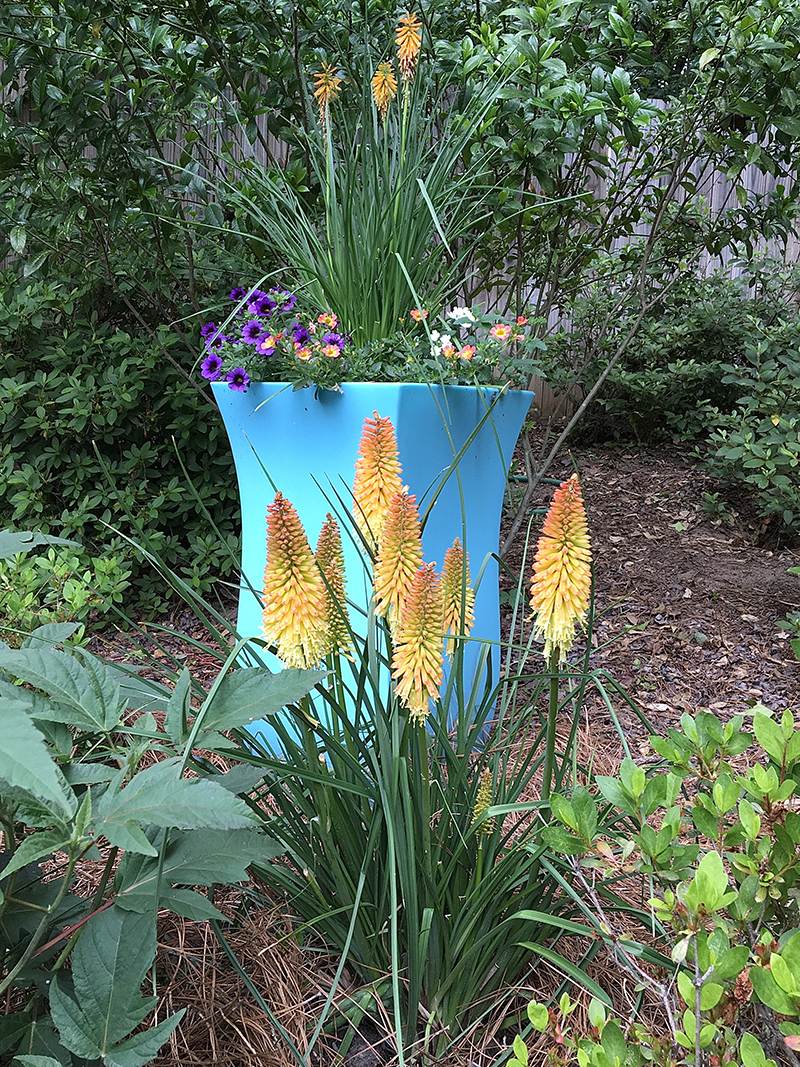
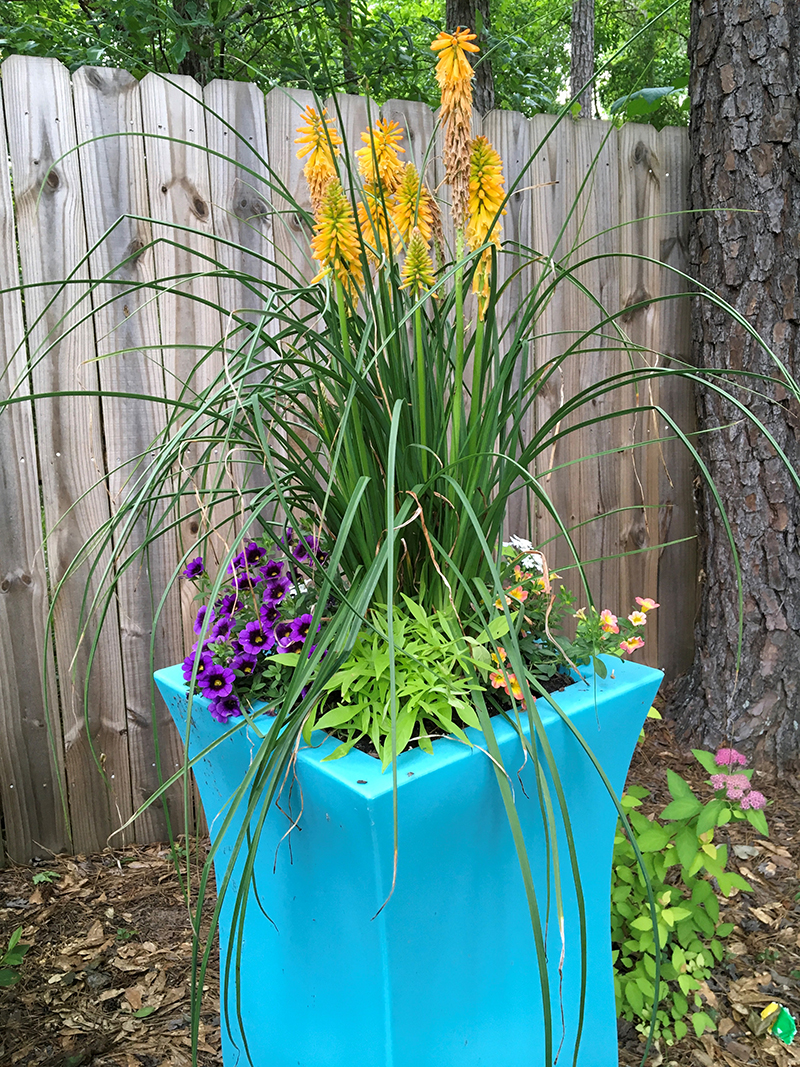
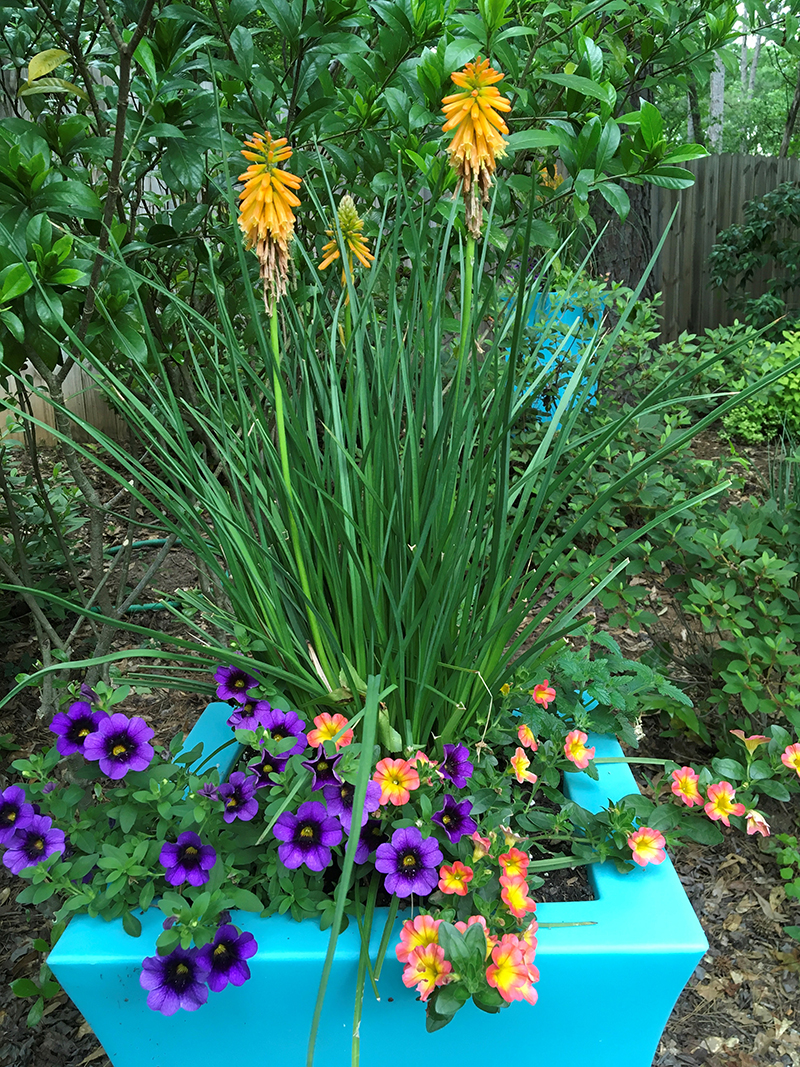
Use Color Echoes - In the Landscape to Create Visual Magic
Oh, the possibilities with that Wicked Witch! My son James dazzled me again with a combination planting featuring ColorBlaze® Wicked Witch coleus and Canary Wing begonia. Immediately I noticed his carefully intended design of having the lime green margins of the coleus echo the golden-lime of the Canary Wing begonia.
While I often refer to terms like triadic harmony, complementary color, and monochromatic colored schemes it is the ‘echo of color’ in the garden that thrills me the most. The echo can be subtle or seemingly shouted but it is a clear clue the designer was using this form of repetition to grab you, causing you to grab a click or two with the camera.
The coleus and begonia echo of color was between plants, but once you start echoing from plants to doors, plants to furniture and plants to wood trim like shutters, or colorful picket fences, then the excitement or visual stimulation created seems to go off the charts.

The son uses the echo ploy in commercial landscapers throughout the city. I was noticing an apricot-orange door to a business the other day and the planters welcoming the clients featured Luscious® Royale Cosmos Lantana, Superbells® Dreamsicle® Calibrachoa, and Vermillionaire® Cuphea, each one having a role in echoing the color of a most memorable door.
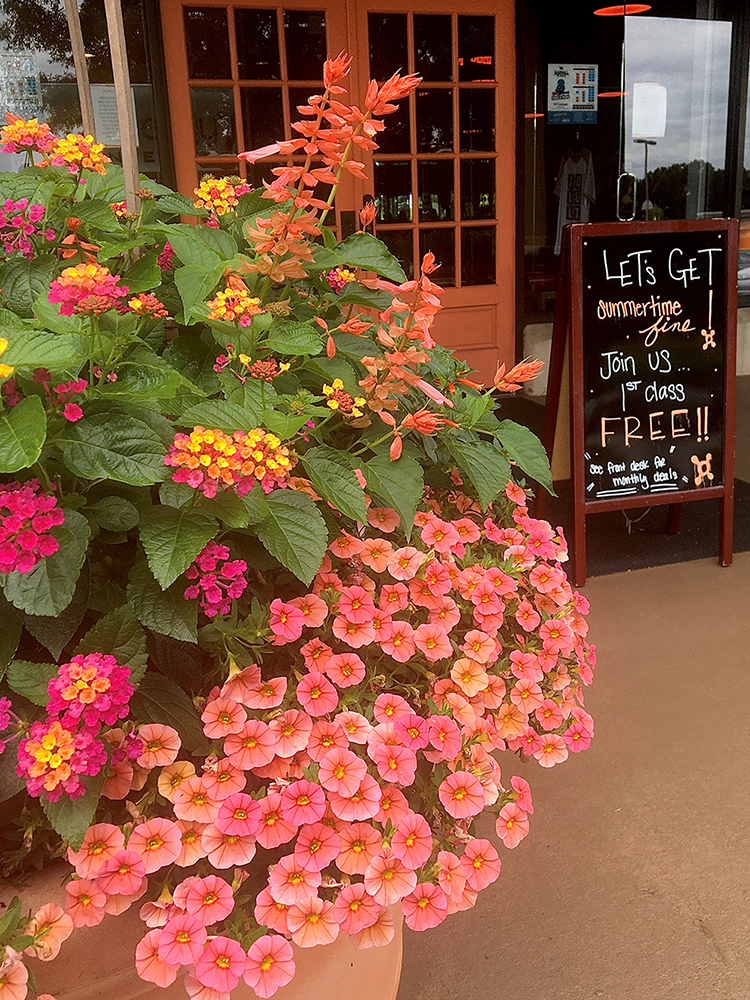
Something similar happened at the bright red festive-looking doors welcoming patrons to a restaurant in the Old Town community of North Columbus. In planter boxes along the sidewalks, boxwoods provided evergreen structure, but flowers like Blue My Mind evolvulus and the echoing color of brilliant Calliope Red geraniums gave the look of being hand-selected to match the doors.
Those were echoes with doors, but my friend Barbara Harvey in Kosciusko, MS always kept me mesmerized with color echoes from flowers and foliage to furniture whether in the back yard or the front porch of her Victorian house. One year she took my breath away with her front porch creation.
She created a sitting area combining two white wood rockers and two wicker pieces. One wicker piece was a small table between the rockers and the other was a fairly large Victorian-looking wicker rocking chair. The wicker pieces were painted with the most shocking shade of lime green that could be purchased or mixed at the paint store.
The echo however came from the largest handmade iron hanging basket anyone would attempt to hang above a porch railing. In the basket were monstrously large Dragon Wing® Red Begonias and a lime green ornamental sweet potato cascading toward the wicker rocker.

As a horticulturist and writer, I get invited to a lot of home and garden tours. Of course, that was pre-pandemic. At one in Madison MS, there was a color echo at a Creole Cottage-style home that was a thrill for the senses. Similar to the Kosciusko setting lime green was the star of the show.
This time lime-green shutters were hanging against a neutral wood. An old-world clay pot echoed the neutral wood of the house. In the pot, however, was tall burgundy coleus with lime green flecks and a lime green sweet potato hanging downward. It was, to say the least, picture-perfect.
With the spring season approaching, now is the perfect time to plan the color echoes around your home. In the creation of the landscape we preach repetition of plant material to bring harmony and of course to eliminate the possibilities of the two by two Noah Ark syndrome. In other words, two of everything at the garden center. I assure you a repetition of color or echo or color will be like creating vignettes, each a living landscape portrait. Follow me on Facebook @NormanWinterTheGardenGuy for more pictures and inspiration.
Double Take® Flowering Quince Series - These Are NOT Your Granny’s Shrubs!


When February rolls around at The Garden Guy’s house I immediately start looking for swelling buds on the Double Take® Flowering Quince. I’ve been growing them for 6+ years in Georgia, in Savannah, Hamilton, and now Columbus, and the number of days in bloom is amazing, these are NOT your granny’s flowering quince. The bloom period has started as early as February 3 here and lasts until early April which is simply incredible.
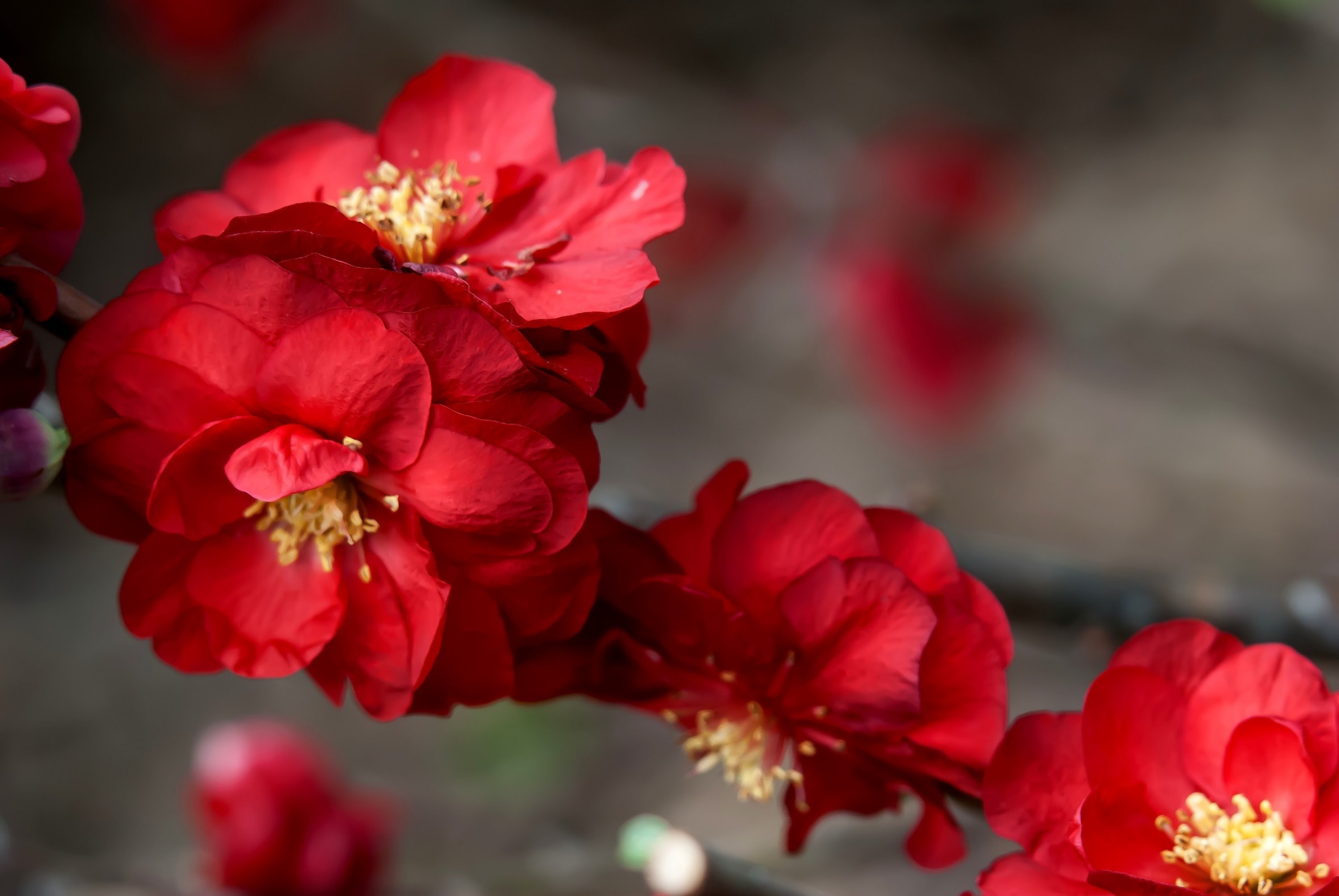
While I will always adore or treasure the Double Take Scarlet, the newest in the series is Double Take® Peach--a most rare and wonderful color for the garden. Nothing else matches this color. With four colors to choose from--Scarlet, Peach, Pink, and Orange--everyone should find a color to fit their palette.
Botanically speaking they are all selections of Chaenomeles speciosa which is native to China. Proven Winners® is bringing us these shrubs that will reach approximately 6 feet tall and 4 feet wide at maturity, boasting dazzling double flowers with petal counts.
The old-fashioned flowering quince always seems to be bare of flowers on the tips or tops of the plant but these blooms that reach up to 2 ½ inches in diameter stretch outward to the tip of the stem. That means the blossoms are almost as large as a tennis ball. They are cold hardy from zones 5-9 and deer resistant too.

Start shopping now to make sure you locate your source. If your local garden center doesn’t have them, you should be able to get them by mail order or online order. When you get yours select a site in full to part sun. These great flowering quinces deserve to be planted in a well-prepared shrub bed. Incorporate 3 to 4-inches organic matter, till your soil deeply and dig your hole about three times as wide as the rootball but no deeper. Place the flowering quince in the hole and backfill to two-thirds. Tamp the soil and water to settle. Add the remaining backfill and repeat the process which is getting all of the air pockets out and providing a great start for acclimatization of your new shrub.
These plants bloom on old wood so remember to not get pruning happy when they are in their deciduous or dormant state of winter. If any pruning is needed, make these cuts after the spring bloom. Of course, these make breathtaking cut flowers, so select as needed.
You’ll love how the Double Take® flowering quince partners with spring-blooming bulbs like daffodils, Dutch iris, and Peruvian lilies and treasure the landscape that has them paired with dogwoods, redbuds, and the
old-fashioned Snowball viburnum.
To me, the flowering quince has always been that harbinger of spring. It’s the one plant that shouts with its colorful blooms, 'We Have Survived Winter'! I know everyone has been joking about 74 days in January but I assure you, Double Take® Flowering Quince will make it all just a memory.
Follow me on Facebook @NormanWinterTheGardenGuy. For more photos and garden inspiration.
Urbanization of the Vegetable Garden - Hottest Trend in the Country
Nothing could be more local – or make you more of a localvore – than eating locally grown produce that comes from your own garden plot. You may be thinking that you don’t have room for a garden, but I assure you that the vegetable garden has become ‘urbanized’ over the past few years for a couple of reasons.
The first is thanks to some new varieties of tomatoes, peppers and herbs offered by Proven Winners under there Proven Harvest line of edibles that includes award winning strawberries like Berried Treasure Red or Pink. They have taken the new urban vegetable garden by storm.
The small urban dweller garden has become one of the hottest trends in the country. Whether it is in rural areas, historic districts or the newest neighborhood, the size of garden plots have grown smaller. Even the well-known community garden projects display raised beds or boxes that are a far cry from the farm-type plot of our grandparents’ era.
This small garden concept is not just here, but in Europe as well. I follow several gardeners on Instagram who refer to their garden as their allotment. This has led to a host of new, compact vegetables. Tomatoes are, of course, first when it comes to popularity with those wanting to grow edibles.
While determinate or semi-determinate varieties – those we recommend that you cage like award winning Proven Winners® Tempting Tomatoes® 'Garden Gem' – fit a smaller garden situation, new patio varieties like Tempting Tomatoes® 'Goodhearted' and 'Patio Sunshine' open the door even wider, enticing everyone to grow some even if it is in a container or hanging basket.
Tomatoes aren’t the only varieties going compact. Proven Winners has peppers like Fire Away Hot and Heavy, Amazel Bazil® and Pesto Besto® Basil that will entice you to hone your culinary skills.
Whether it is the global economy or are the uncertainties of the last couple of years that has fueled this trend, there are some great family benefits from these small, urban gardens. Today’s children are growing up in a fast-food world where nutrition and lack of outdoor time is common.
Once a child participates in growing vegetables, he or she will also want to partake in the eating of their crop. No way are the children passing up eating Proven Winners Dragon Tongue beans. Consequently, this child becomes the gardener of the future. So, whether you are a parent or a grandparent, get them started.
Since today’s urban vegetable garden is smaller, getting the soil rich and fertile is a proverbial “piece of cake.” Organic products are available at most garden centers by the bag or even by the scoop. Proven Winners has all you need in bagged soil and fertilizer that is just perfect. The garden is constructed on raised beds and enclosed or separated from lawn areas with wood or rocks. This not only gives you the best in drainage and aeration, but keeps the encroaching grass out. I even bought an interlocking kit at the grocery store.
You can simply use the string trimmer around it. This style of garden makes it easy to tend from all sides without compacting soil by constantly making trips to hoe or weed. It can even be harvested by simply reaching inside.
Where do you start? Just grow what you like to eat! Follow me on Facebook @NormanWinterTheGardenGuy for more photos and garden inspiration.
 Photo by Norman Winter |  Photo by Norman Winter | 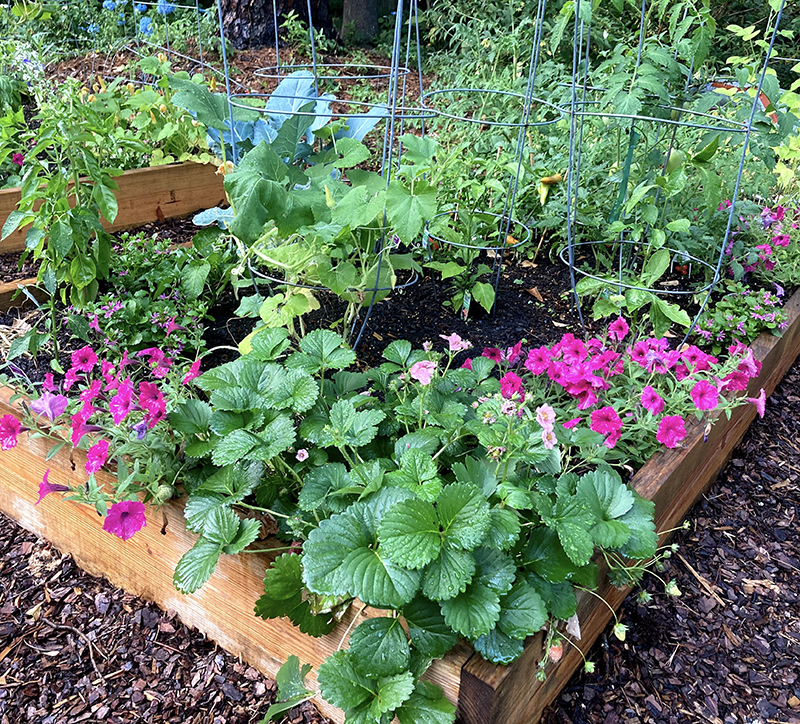 Photo by Sarah Winter |
Winterberry Hollies - Create a Hillside of Gold

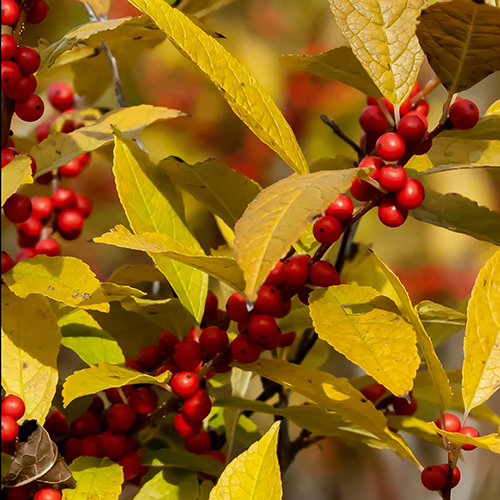

A beautiful hillside of gold has become the norm in fall and winter in the Old Town community of North Columbus. The hill planted with dozens of Winterberry Hollies puts on a show from colorful foliage, despite a fall season of high heat and berries and then the feasting of the birds.
Follow me on Facebook @NormanWinterTheGardenGuy. |  |
The horse troughs at Old Town in North Columbus GA are indicative of a trend sweeping the nations. These have been planted for cool-season color and interest. |
Horse Troughs of Tantalizing Texture Create Winter Interest
Winter interest in the Southern landscape is simple if you follow the example of the Old Town Community of North Columbus. Once again, they are schooling us on the use of horse troughs for cool-season color, and this year, they are maximizing the use of texture, so much so I wrote about it in my national column. Since I retired from the University of Georgia, my son James, the color design guru for Old Town keeps me involved, making me feel as though this is my experiment station.
In early October as he was planting, I thought he had pushed the proverbial edge of the envelope right over the abyss. These full sun containers have annuals, perennials, deciduous shrubs, succulents, and plants that require shade. Know this first, though I am talking old-fashioned horse troughs you can do the same in your favorite containers.
Let’s go over the recipe, concepts, and thoughts from the adage thriller, filler, and spiller. Though it is stunningly beautiful now in November, the crescendo brought about by the maturity in March and April will be like the finale
at a fireworks display.
These horse troughs are loaded with plants of texture like Dolce Cherry Truffles and Dolce Wildberry heuchera. Double Play Candy Corn spirea were chosen as the thriller plants. |
The thriller or tallest plants in the troughs are the deciduous Double Play® Candy Corn® Spirea. These have become favorites in the South with foliage that is literally candy corn colors. I suspect Proven Winners was counting
on zone 7 but we adore them in zones 8 and 9 too. Though they are dazzling now they will disappear later, returning
in absolute glory. Their retreat in the toughs will never be noticed as the other plant partners will be growing and masking the twigs.
Winter sun is magical, it lets you use shade lovers that look even more dazzling when brought to the light of day. This is where I wanted to tell you the fillers before spillers. In the South, heucheras, also known as coral bells, do best if given afternoon shade protection but that is summer. In the winter these evergreen perennials are simply amazing.
Our designer used Dolce® 'Cherry Truffles' and Dolce® 'Wildberry'. The dark reddish-burgundy and purple foliage will contrast or complement the spirea and every other plant in the troughs. In the spring 'Cherry Truffles' will have red flowers and 'Wildberry' will deliver white blossoms
Another shade lover in the troughs is 'Queen of Hearts' Brunnera. These silver and green variegated heart-shaped leaves stand out in the mix not only because of their color but their distinct leaf shape. In the spring they will
have baby blue flowers.
The gentle cool-season allows shade-loving plants like Dolce® 'Cherry Truffles' heuchera and 'Queen of Hearts' Brunnera to be grown in full sun. |
Never, ever underestimate the power of the fine leaf texture provided by a grass. Throughout the troughs there
are strategically placed Evergold Carex grasses. The wispy variegated leaf blades give a special spidery touch
that is so colorful while lending an artistic touch too.
The gentle cool-season allows shade-loving plants like Dolce® 'Cherry Truffles' Heuchera and Queen of Hearts brunnera to be grown in full sun.
There are two spillers used throughout the troughs. The first is Lemon Coral® Sedum with its succulent like
foliage that will gently tumble over the rim like a slow chartreuse-colored lava flow. The final filler is the one everyone expects in the season, Cool Wave Yellow pansies. These will put on a trailing show of flowers
spreading to almost 3 feet.
I touched on the aspect of the gentleness of the winter sun here in zone 8a, but there is no doubt some of
you are thinking we can’t grow some of these plants because of our soil. Don’t forget these are growing in an organic-based potting mix which you too will use, meaning you escape rigorous soil pH requirements during this period of the cool season display.
Son James will pull all of these plants for the summer exchange of plant material. Hopefully, I will get notice
and be there representing The Garden Guy plant rescue service, whereby I will relocate those that need shade
or morning sun to a new location.
Cool-season container gardening is so enjoyable in the South and even more so when you can use a
farm-sized horse trough. Follow me on Facebook @NormanWinterTheGardenGuy for more photos and garden inspiration and I promise to keep you updated on these troughs through the season.
Shadowland® 'Autumn Frost' is a Heart Thumping Hosta that combines wonderfully with Soprano® Impatiens.
Champions of the Shady Landscape Too
Plants like Supertunia® Petunias, Superbells® Calibrachoas, and Luscious® Lantanas, make many gardeners see Proven Winners® as the champions of the sun. The Garden Guy is here to tell you they hoist the trophy for the shady landscape too.
The Shadowland® series of hostas are not only packed with award winners but surprising varieties that excel in the south. The giant Shadowland® 'Empress Wu', chartreuse and green 'Etched Glass', and my new love, the cream and green variegated 'Autumn Frost' are all wonderful partners for your favorite hydrangea or azalea.
They also make the most picturesque partners for the impressive Soprano® Impatiens series. Soprano® impatiens, if you have not yet tried these, will put the fun back into bedding impatiens. There are four colors that will light up the shadier part of your landscape. Soprano® Violet Shades, White, Orange, Bright Red and new for this spring, Salmon and Rose.
You will be amazed at the durable performance of Soprano® impatiens over the long hot summer. In fact, you can combine your favorite hydrangea, Shadowland® hosta, and Soprano® impatiens for a shady garden that will rival the color and intensity of the best sunny garden.
I’ve mentioned some of my favorite Shadowland® hostas and I have too many hydrangeas to go over each one in this newsletter. But one I have to tout is the Tuff Stuff Ah-Ha®, a mountain hydrangea with enormous blue flowers!
Mountain hydrangeas are known botanically as Hydrangea serrata. This is a species just not well known in the South. It has been dynamic in the University of Florida Trials and in The Garden Guy’s trials too. I assure you the green thumb is just about guaranteed on this hydrangea and you don’t need a mountain either.
Imagine the huge blue flowers partnered with colorful variegated hostas and intermingled with the new Soprano® Orange Impatiens or consider Perfecto Mundo® Orange azaleas which are also impressive!
You see, Proven Winners® are the champions of sun and shade so make plans for spring planting now. Follow me on Facebook@ @NormanWinerTheGardenGuy for more photos and garden inspiration.
Gold Foliage and Texture An Unbeatable Garden Combination

Graceful Grasses® 'Ogon' Japanese Sweet Flag looks ever so picturesque grown along the edge of this water feature.
Graceful Grasses® 'Ogon' Japanese Golden Sweet Flag
Gardeners need to never underestimate the power of the fine textured grassy element in the landscape and mixed containers, even more so when it is golden. 'Ogon', which means gold in Japanese, is one such plant. Botanically speaking, it is a stunning variety of Acorus or Japanese sweet flag that we use for grass-like texture.
Whether you are looking for a plant to use at stream’s edge, in a dry creek or as a filler in your mixed containers you will quickly recognize it’s award-winning nature. The Japanese sweet flag spreads from the tips of rhizomes similar to the way an iris spreads, which gives you the option of using it as a ground cover. In the South this plant does best if it gets a little filtered shade during the heat of the day.

'Ogon' Japanese Sweet Flag gives a grassy element to this mixed container of with Bossa Nova begonias, Proven Accent® Goldilocks Lysimachia, scaevola and impatiens.
Another incredible grassy option is Evergold Carex. As the name suggests it is a mounded golden Japanese sedge. Using it in the landscape will give your border the finishing touch or the proverbial ‘icing on the cake’. The Garden Guy gives it more sun than the 'Ogon' Japanese sweet flag and treats it differently when it comes to cutting back. In the early spring when growth is ready to resume, Evergold should be cut back much like we do for a liriope, with 'Ogon' you only need to remove any unattractive leaves.

'Ogon' Japanese Sweet Flag provides the fine leaf texture to this bed with flowering kale and pansies.
Color Guard Yucca ‘Native DNA’
When it comes to gold that shows off 12 months of the year it is hard to beat the Color Guard yucca. Whether its July and August in Texas, or winter in Georgia, you can rely on the Color Guard yucca for rugged perseverance and incredible beauty.
If you are not familiar with Color Guard it is undoubtedly the best selection of the native Yucca filamentosa. This colorful plant sports native DNA and is cold hardy in zones 4-10. Color Guard yucca is normally seen around two to three feet in height but can reach 6 feet tall, and three feet wide which is perfect for creating garden excitement with its green and gold variegated dagger-like foliage.
As you might expect from a native plant, it is an extremely drought-tolerant plant that requires good drainage. I have grown them planted in raised beds in combination with torch lilies (Kniphofia) and in very non-traditional companionships with tall angels trumpets. You will find the Color Guard will work in almost every imaginable situation—in fall with pansies, during summer with begonias and even with your favorite heuchera. Just be bold and give them a try.
Color Guard’s fragrant white blooms will delight visiting hummingbirds! If you find yourself the proud owner of a roving herd then rejoice as the Color Guard yucca will not become Bambi’s salad.
Proven Winners has more golden-leaved plants than you could ever imagine and these three will not only add the color but provide an extra textural element to both borders and containers. Follow me on Facebook @NormanWinterTheGardenGuy for more photos and garden inspiration.

Evergold Carex provides the finishing touch to this bed with Diamond Frost® Euphorbia, Intensia® Phlox and blue salvia.

As you gaze across this pool the first plants to catch your eye are the three Color Guard Yuccas which add the gold to this bed and is a textural feast for the eyes. Color Guard Yucca can partner with any other plant you choose, even begonias! Color Guard Yucca even dazzle when partnered with your favorite heuchera. This bed looks as though the daggers of the Color Guard Yucca are challenging the golden angel’s trumpet like blooms.
Perennials That Can Add the Finishing Touch in Winter
Perennials that perform in the winter may seem like a gardening oxymoron, but I assure you these are the plants that put the 'Holy Wow' in your cool season color whether it’s in a landscape or in mixed containers.
The Garden Guy’s son James is a color design guru in the Columbus GA and Chattahoochee Valley area, and his designs have been bringing out the cameras for quite some time. As I write this, he is placing his orders for plants like Dolce® and Primo® heucheras and believe it or not there are now 21 varieties to choose from.
He will also be ordering Lemon Coral® Sedum, Proven Accents® Goldilocks Lysimachia and Graceful Grasses® 'Ogon' Japanese sweet flag. Sure, he will use pansies, violas and snapdragons, but it is these perennials that add the finishing touch to the masterpiece.
Many gardeners in the South look at photos of heuchera and dream about them. What many do not know is that all of those pages of gorgeous Heuchera varieties (Coral Bells) have their DNA forever linked to natives in the United States. There are some native to Georgia.
James plants varieties like Dolce® 'Spearmint' and Primo® 'Wild Rose' in the fall as a kale or cabbage substitute. You may even find him using the copper-colored sections in hanging baskets as a complement to blue flowered pansies. All winter long their colorful leaves perform magic in the containers.
Then sometime around in mid-April, there is a spring crescendo of color with gorgeous, red coral bells blooms that are welcoming the return of the hummingbirds and other pollinators. A fall planting of heuchera makes a lot of sense and actually, in our zone 8a part of Georgia, fall is usually when we see them for sale at the garden centers but most don’t realize how tough they are for our winter. Even some university recommendations or descriptions talk about the raggedy winter foliage that should be removed just prior to new growth.
This is a good recommendation for spring planted heuchera, but remember James is planting in the fall in great potting soil, and in full sun while I plant mine in April or May in the landscape and in fertile soil with afternoon shade protection.
Proven Accents® Goldilocks Lysimachia is a must-have spiller plant for containers no matter the season. You may think of them as your lime time on your porch, patio or deck! In the south, they magically turn gold once they have been kissed by cold. In zones 8 and warmer this color usually persists through winter, looking like 24K gold chains partnered with sapphire or ruby-like pansies.
While Goldilocks cascades over the rim of containers, Lemon Coral® Sedum gently tumbles. Its looks lush, with soft-needle like foliage that may stay lime or get kissed by gold as temperatures cool. Both Lemon Coral® and Goldilocks are perfect spillers for your cool season designs.
Dolce® 'Spearmint' and Primo® 'Wild Rose' show off their beauty in front of Double Play® Candy Corn® at The Landings Shopping Center in Columbus GA. |
Primo® 'Wild Rose' and Double Play® Candy Corn® show off their bold contrast of colors. |
Proven Accents® Goldilocks has become like 24K gold chains after winter’s kiss. |
Proven Accents® Goldilocks and Proven Accents® Pink Chablis® Lamium have turned this cool season planter into a work of art. |
Lemon Coral® looks like it has a little gold-plated artistry after winter’s kiss in this container designed by James Winter. |
|
Peak Pollinator Season is Here

As July approaches, so does the peak population of pollinators such as bees, butterflies and hummingbirds. You can make your landscape not only more beautiful for the hottest month of summer, and adding a pollinator habitat would make the outdoors even more enjoyable!The Garden Guy has been helping identify the best pollinator plants for the South from the Proven Winners award-winning selection--here are a few of the champions you need.
Color Coded® Coneflowers
The Garden Guy has been growing these for three years. They come in four colors, Color Coded® 'Orange You Awesome', 'Yellow My Darling', 'Frankly Scarlet' and 'The Price is White'. These coneflowers are packed with native DNA and will give you wonderful color, summerlong pollinators and most importantly, a green thumb.
 |  |
Rockin'® Salvias
The Garden Guy lives in zone 8a and these salvias have been perennials for three straight years. I am growing all of them and I can say if it has a Rockin'® name it has been a perennial in Columbus GA. You can expect the hummingbirds to work the salvias all summer long--from the break of day until you can barely see them at dusk.
The surprise to many will be the visitation by butterflies. These salvias will keep pollinator activity to the max.
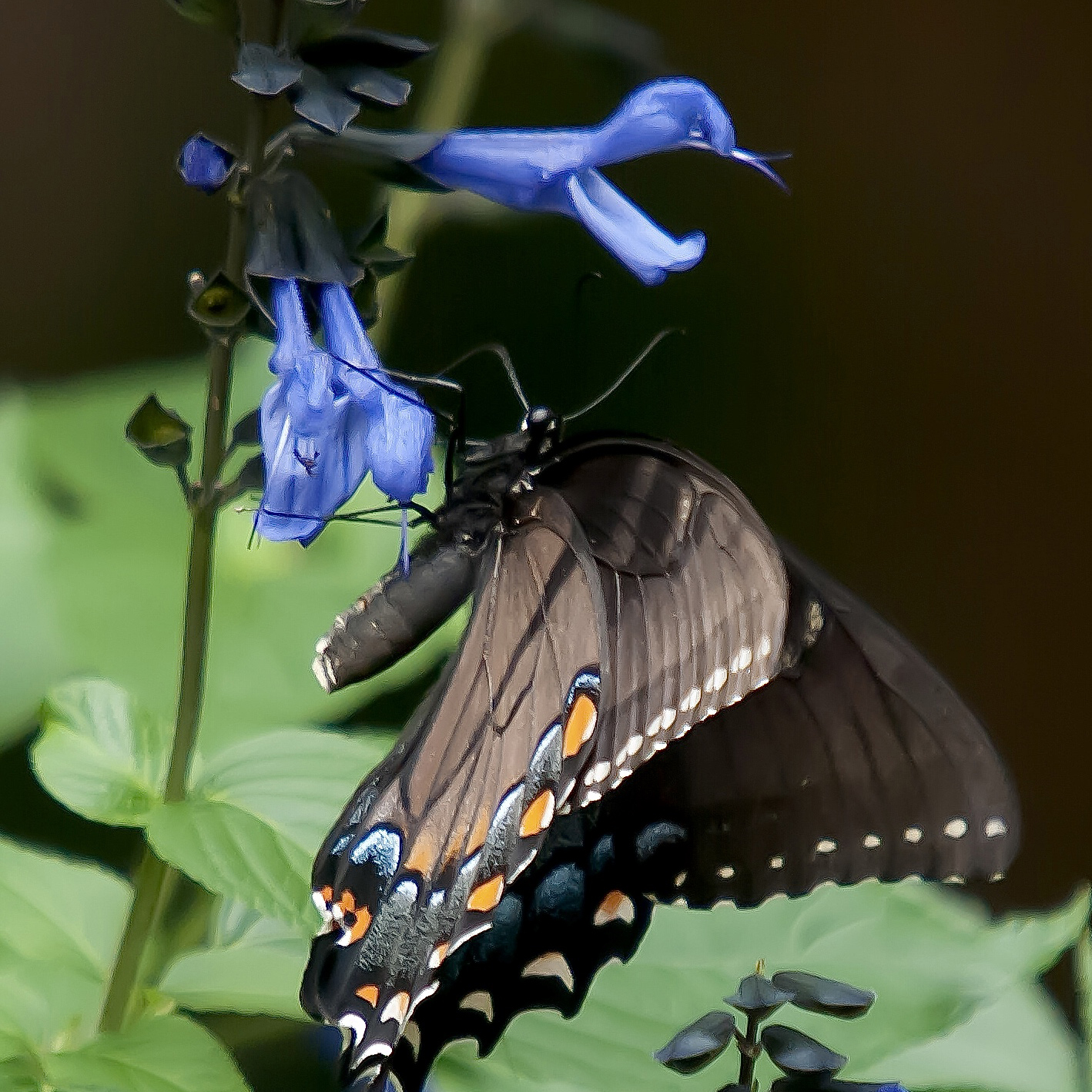 | 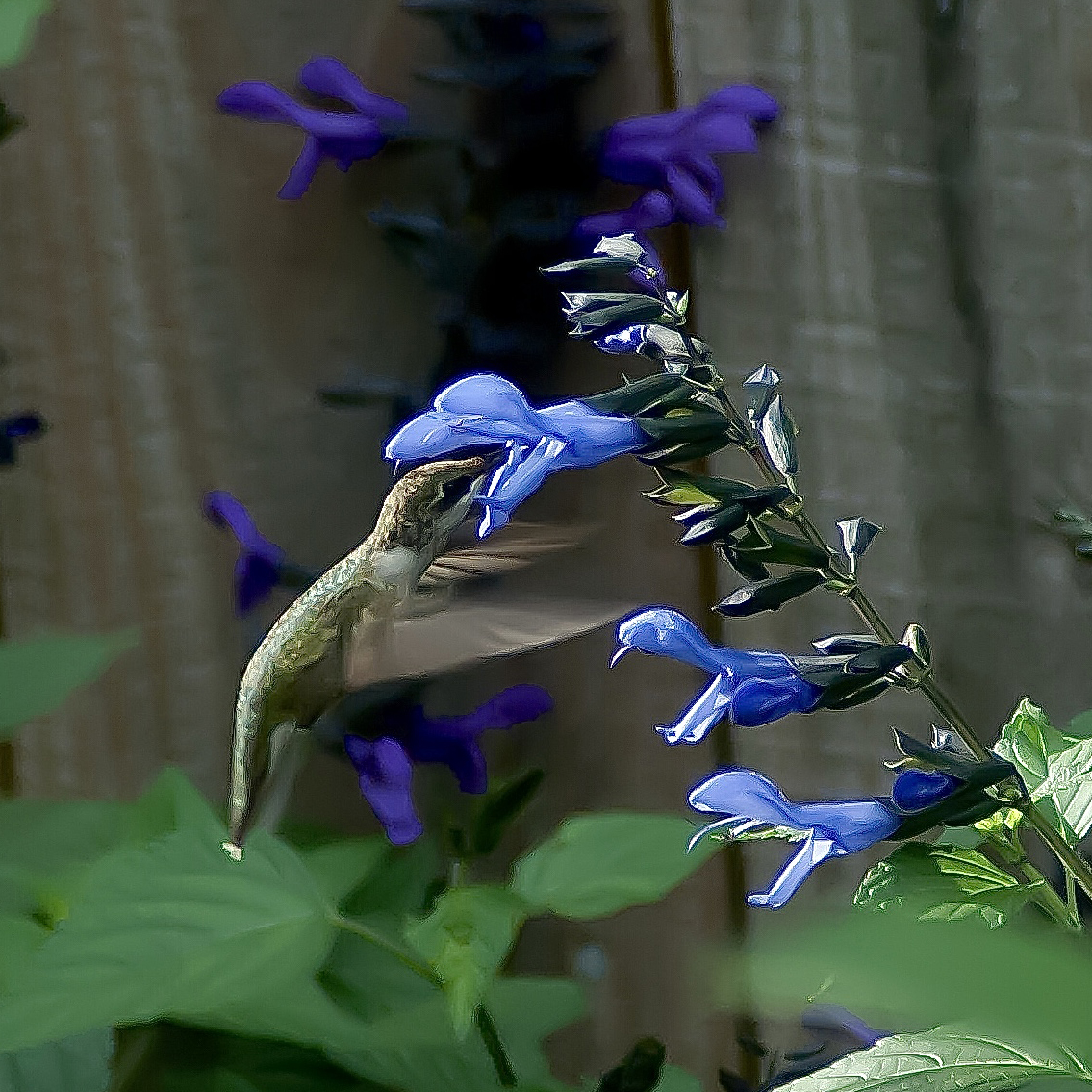 |
Truffula® Pink Gomphrena
This gomphrena has also been perennial for The Garden Guy and would top the must-have plant list for the pollinator garden. It will be visited by all butterflies and hit on by magical hummingbirds too. At The Garden Guy’s house, it was four swallowtails at a time, and three Zebra longwings at a time which are both like a Haley’s Comet moment! What a show!
 | 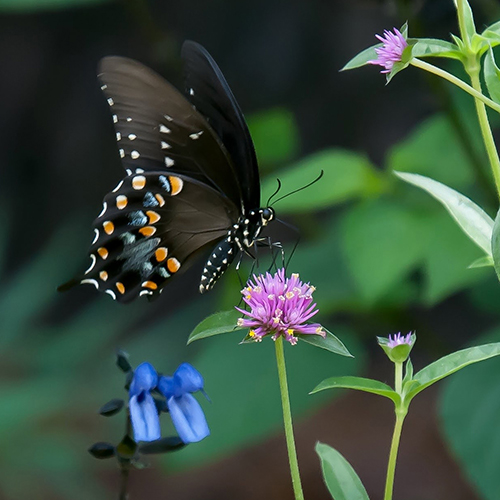 |
Luscious® Lantanas
The Luscious® series of lantanas are highly regarded and often receive awards in the green industry. I love their habit, which for the most part is around thirty inches tall and wide. The Garden Guy is growing Luscious® Royale Cosmo, Marmalade, Goldengate™, Citrus Blend, and the new Luscious® Citron™. They too have been perennial in my garden with Luscious® Marmalade being the first to return each spring. The Luscious® series is treasured by butterflies and will make dazzling partners with the salvias, Meteor Shower® Verbena and butterfly bushes.
 |  |
Butterfly Bushes
Proven Winners® is like the one stop shopping place for buddleia or butterfly bushes. The Garden Guy had never grown any butterfly bushes until planting of several of the Proven Winners® varieties. I can never imagine not growing 'Miss Molly'. This certified non-invasive variety has given me more fun this season than I could have ever imagined. I actually place a chair about 8-feet away, with camera in hand and watch the butterflies and hummingbirds. I’ve got the dwarf compact Pugster® Blue and Amethyst under planted, as companions to 'Miss Molly'. Then I have further layered it to the front with Truffula® Pink Gomphrena. Yes, I am a proud pollinator geek! I’ve been writing about all of these plants and you can seem them all by following on Facebook along @NormanWinterTheGardenGuy. Be ready to enjoy the pollinator show!
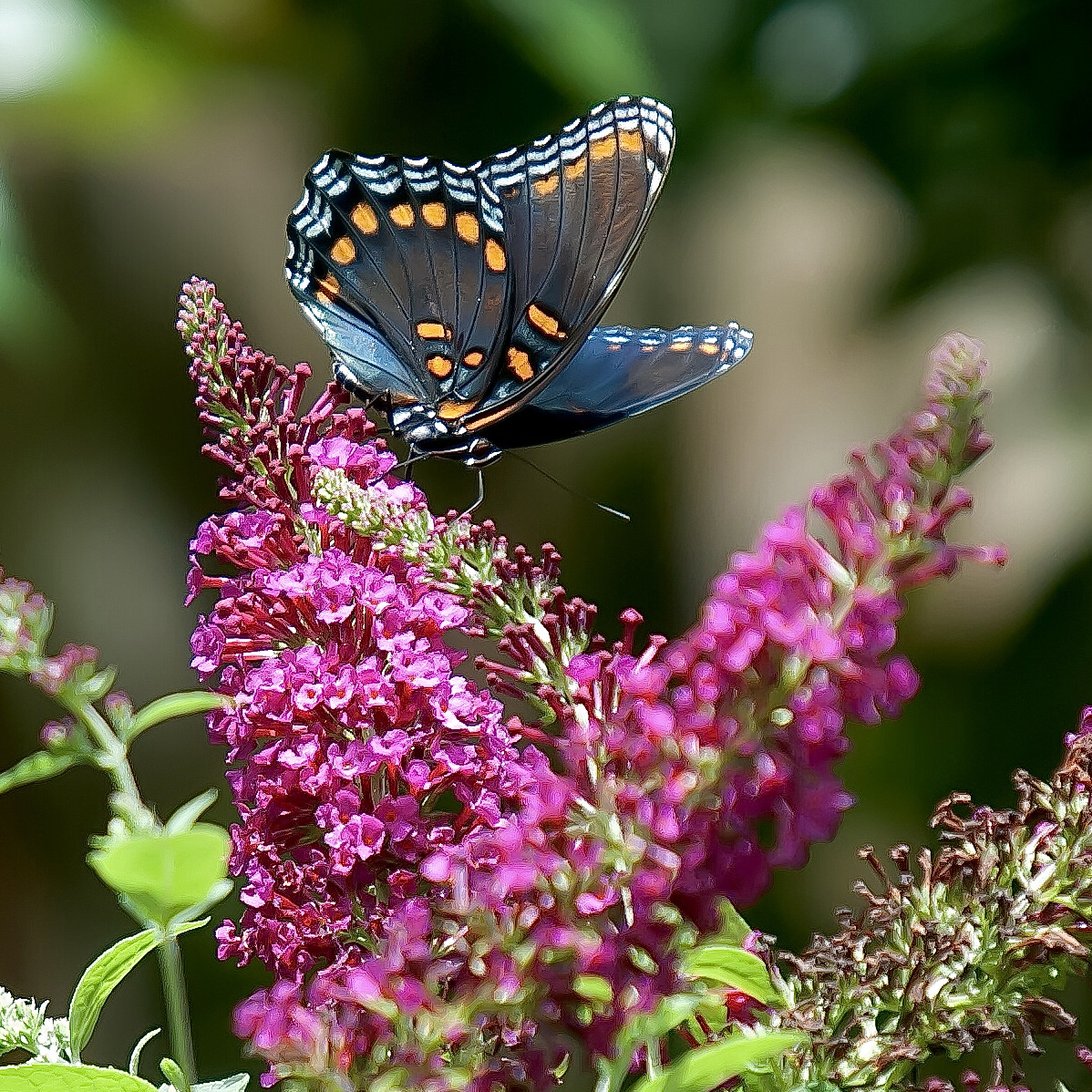 |  |
 | 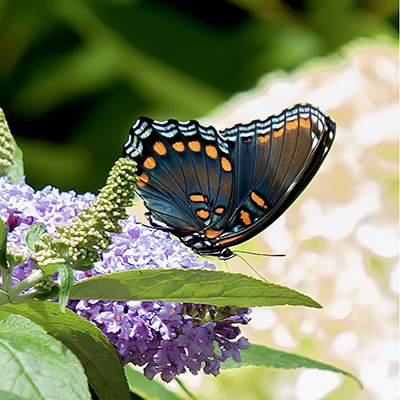 |
Recycled Treasures Create Garden Beauty
 Old White Columns Next to a Parterre |  Mirrors in the Garden Create Illusion of Looking in a Window | 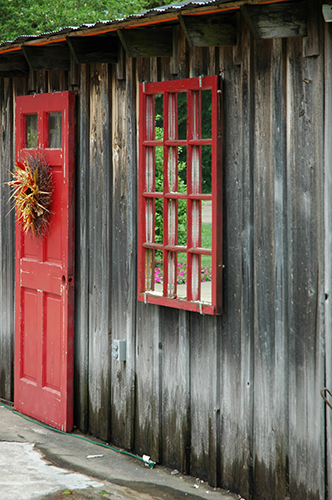 Fake Door and Fake Window |
 Hand Painted Shutter Art |  Covered Deck and old furniture that has terra cotta pot handles |
Recycling is popular in today’s society, but the idea rarely conjures up visions of beauty. Mention the word and your first thought may be the aluminum can depository or even the blue tubs you place at the curbside for pick up. It seems wherever I go savvy gardeners are making treasures out of items that most of us would never think of including in a garden.
One Mississippi Delta home had a very large garden that was flourishing thanks to soil preparation, which is where my first thoughts of recycling come from. The flowers were all planted on raised beds comprised of soil and what most people call gin trash, a byproduct of the cotton industry.
Throughout the South cotton is still king and gins leave behind this black gold. Trash it isn’t; recyclable it is -- and organic-rich, too. Once it has been composted this product is a gardener’s dream come true. If you have gins in your community, check the pH before planting, as the gin trash tends to be above 7, meaning acid-loving plants like azaleas or camellias will prefer a different mix.
That Delta gardener also took great advantage of old homes and buildings that were being torn down. She would go to great lengths to make sure she had first option on these relics. Her garden included colorful doors and windows used in several places.
A wall separating property lines in her large backyard was built from old lumber. It had a couple of colorfully framed old windows hung on the wall. The windows had mirrors instead of glass. When you look at it directly you think you are looking through a window rather than looking at the garden behind you. The wall was covered with interesting yard art and other recycled treasurers including an old bicycle that belonged to her mother-in-law.
There was a special outdoor room called Margaritaville. Here the colorful 1950’s style red furniture was artfully arranged on a floor of old recycled brick that was hand-laid by the gardener. The moss-covered brick is heirloom in appearance. Then there was the special green door that appeared as if it wanted to be opened. It too had a mirror creating an illusion.
The most unique feature in the garden was the five old white columns lining a more formal parterre garden. These columns came from an old home being torn down and added a ghostly Southern archaeological feel to the garden.
Another home I visited had made wonderful use of an old fireplace mantle in their special outdoor room. It was the perfect complement to a cozy retreat. In front of the mantle there were tropical plants like Black Magic elephant ear, giant taro and philodendron.
What I liked most, however, was a large shutter hanging on the fence close by. The green shutter was hand painted with a colorful flower, serving its purpose much like a fine oil masterpiece would indoors.
One of my all-time favorites was an old chandelier hanging from an oak tree over the deck. Outfitted with candles it created the perfect ambience for eating outside. Treasures like these may be at the old house across the street or across the tracks or even forgotten in your attic. The real point is to not let these items go to waste. If they can’t be used to assist in re-building, they can be incredibly useful in the landscape.
Summer is here and now is the time to survey your own landscape and see if there are some areas you can develop into paradisiacal retreats using not only plants but recycled treasures too.
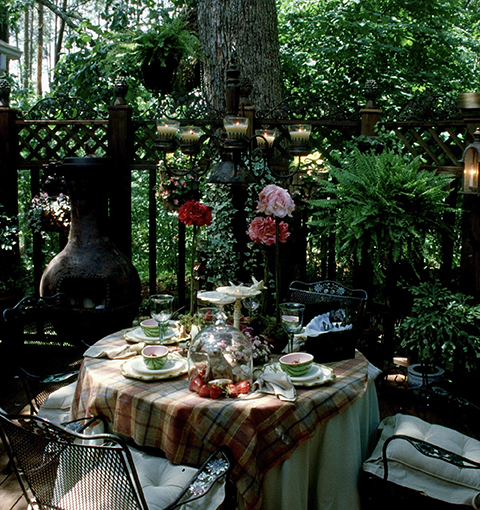 Chandelier outfitted with candles hanging from Oak | 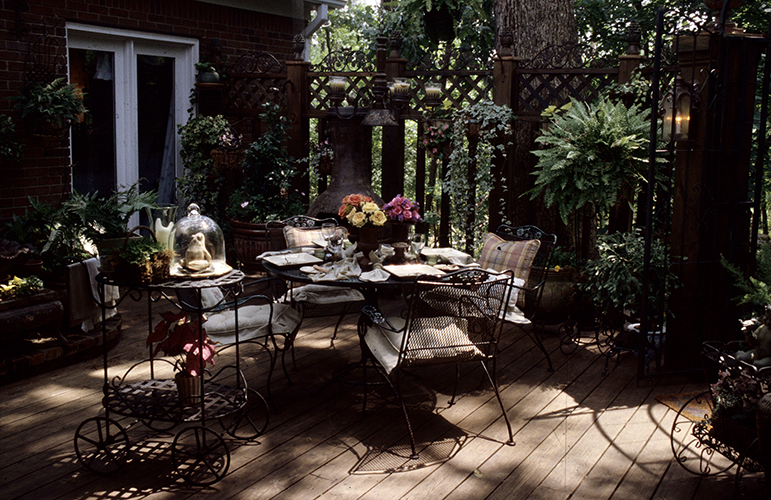 Wide shot of same chandelier |
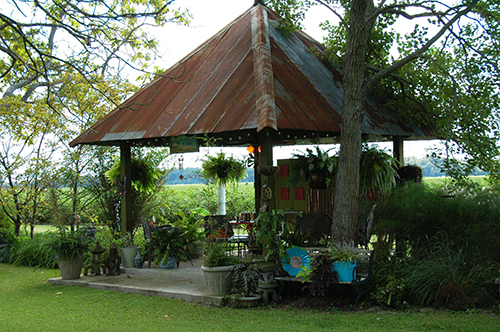 Gazebo used recycled tin for the roof |  In side gazebo art station but again recycled shutters |
Winning in the Home Landscape with the Leaders of the Pack
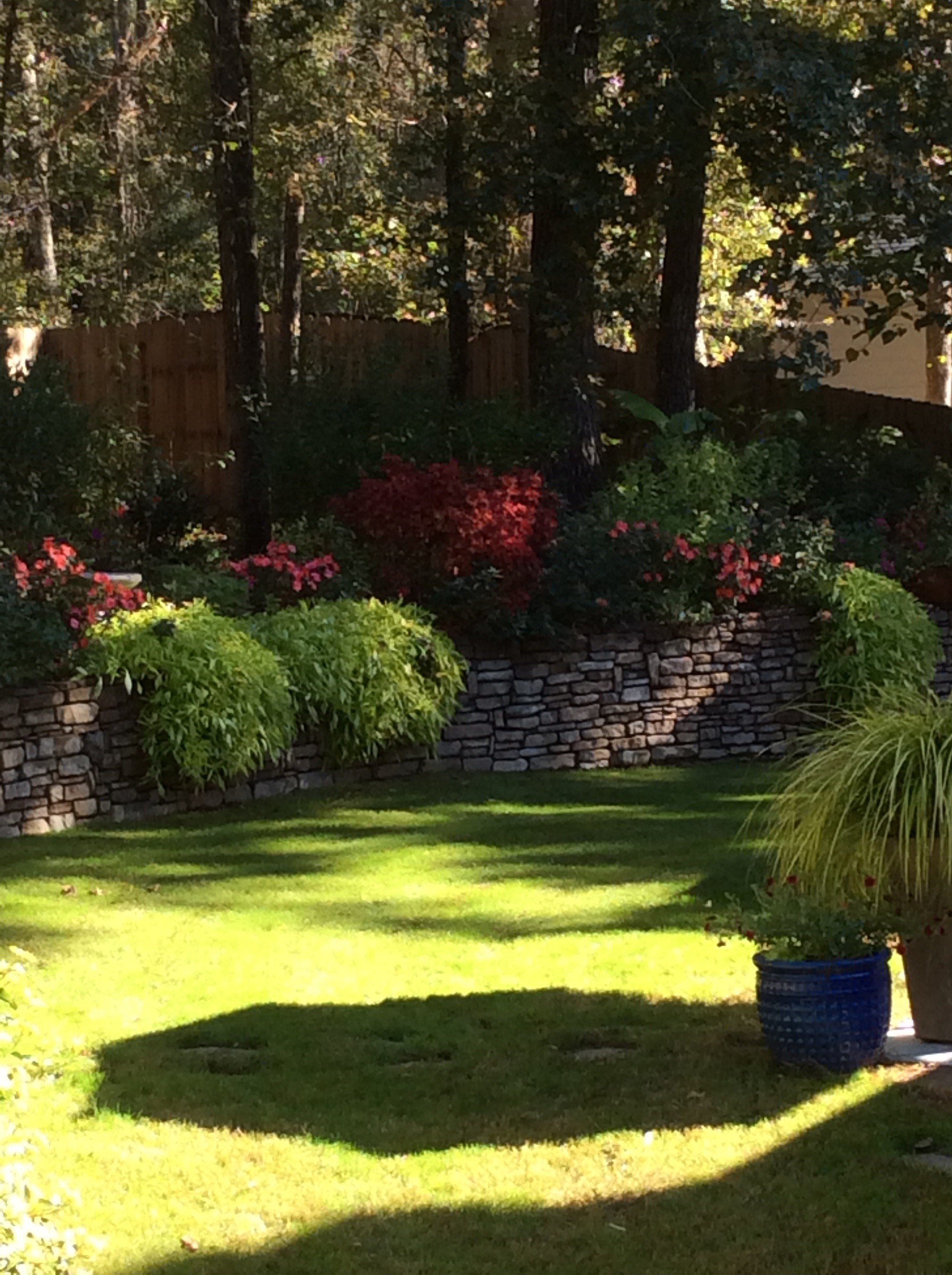
 Last year ‘The Garden Guy’ was a participant, if you will, in the Young Plant Farms Flower Trials in Auburn, Alabama. We were all given a book with planting dates and pertinent information to help us make informed decisions about plants. Many of the plants were Proven Winners varieties and new mixed container recipes.
Last year ‘The Garden Guy’ was a participant, if you will, in the Young Plant Farms Flower Trials in Auburn, Alabama. We were all given a book with planting dates and pertinent information to help us make informed decisions about plants. Many of the plants were Proven Winners varieties and new mixed container recipes.
Proven Winners® participates in rigorous trial programs conducted at universities across the country. Once the results are in, awards like Leader of the Pack, Perfect Score All-Season, Best of the Best, and Top Performer are handed out and no other company can match the performance of Proven Winners varieties. This is why it is the number one brand in the country.
You might be asking how does it work in the home garden and this is where the rubber meets the road. One of the southern Proven Winners representatives told me how seeing my pictures of the plants in real situations gave him great information--this is his look at the real world.
So, as we look at selecting plants for the long hot summer ahead 'The Garden Guy' wants to share his 240-day list with you. These are plants, flowers, and foliage varieties that performed like the winners they are from early April until the first freeze around November 30. As you will see, these are plants that were blooming on October 19 when the last hummingbird left and yet still provided nectar for butterflies until the freeze.
The Garden Guy grew all Rockin'® Salvias and UnPlugged® So Blue and they all were champions until the cold weather hit. The same can be said for Luscious® Marmalade, Royale Cosmo, Goldengate™, and Citrus Blend Lantanas and Vermillionaire® Cuphea. The butterfly champion of the long season had to be Truffula™ Pink  Gomphrena and it too thrived until the end.
Gomphrena and it too thrived until the end.
That is rugged perseverance partnered with beauty. They all have one more thing in common and that is that they all returned from a cold winter. It wasn’t a 50 year cold as in Texas Louisiana and Arkansas, but we still saw a lot of hours below freezing. The return was not only a surprise, but the vigor that they have demonstrated in the return has been amazing. In case you are wondering The Garden Guy lives in zone 8A Midland GA.
There were other champions of the long season. Sunstar® Red, Pink, and Lavender Pentas provided exceptional color and an affinity for hummingbirds and butterflies. Two groups, often overlooked for the longevity of landscape performance, were the ornamental sweet potatoes and coleus. Sweet Caroline Illusion® Emerald Lace sweet potato, ColorBlaze® Wicked Hot and ColorBlaze® Lime Time® coleuses were all photo-worthy in November. These have to be at the top of the list of value for the gardener’s dollar. Gardeners in the South may not have 240 days of performance left for 2021, but planting some of these varieties now will ensure 120-150 days of outstanding performance.
Your Tropical Style - Staycation is all about Attitude
|
|
The tropical style garden is about an attitude as much as it is about style. So many us have made those treks across the seas to far off islands where the crystal clear water, fragrant blossoms, and lush surroundings made us forget the stresses of life. Though we might have been there for days, maybe even making more than one trip a year, time was fleeting.
We find ourselves wanting to create that look that feel at home, so that when have fought the four lanes of commuting traffic, after a contentious day at the office we can slip on some cutoffs and head to our corner of paradise in the landscape. This has become our nest, our place to cook, to unwind and even feel a little like the island, “that one particular harbor”.
We can easily create that look at home. It might be as simple as adding some coarse textured foliage in what is already a nice garden. When you look at a banana, Toucan canna, Maui Gold or Illustris elephant you think tropical, it’s kind of like, what you perceive-you are. It’s really kind of magical.
There are so many tropical plants from Proven Winners at today’s garden center that are perfect for the South in that they over winter. They may freeze to the ground and return in the but that’s the nature of many of our regular perennials too. In the North gardeners are used to digging and storing bulbs like cannas and elephant ears.
Even if they are treated as annuals, flaming foliage like the Red Sister cabbage palm or Hawaiian Ti or the silver and purple from the Persian Shield will have you hearing the sound sounds of steel drums in the distance.
Another factor is summer heat. When the stifling temperatures have sent you indoors where it is much cooler guess what plants are looking good out in the garden. More than likely they are tropical plants. Our long growing season lets you get maximum value for your gardening dollar.
Take for example, a city like Baltimore that has around 238 days of frost-free weather or Louisville, Kentucky with 220 days and of course longer in the South. This means for over 7 months we can all look like Martinique, this is your ‘Staycation”.
Proven Accnets® Persian Shield |
Royale Hawaiian® 'Maui Gold' Elephant Ear |
'Red Sister' Cordyline |
Essential Plant List
 |
Rockin’® Salvias have quickly risen to the top of the must-have plants list for the Southern Gardener. There are a lot of reasons their popularity has sky rocketed--first, they are drop dead gorgeous with their blue, fuchsia, deep purple and even red tubular flowers.
 |
This dazzling beauty however is gracefully borne atop 40 to 48-inch-tall stalks giving an unbeatable vertical element to the garden. Imagine Rockin’® Blue Suede Shoes behind Luscious® Marmalade Lantanas or Truffula™ Pink Gomphrena. Rockin’® Fuchsia behind Luscious® Royal Cosmo Lantana is a dreamy partnership. The combinations are only limited by your imagination, you are the Monet of the garden.
The Rockin’® Salvias however are the key to your wild kingdom, your own backyard Serengeti. The Garden Guy lives in zone 8A and my Rockin’® Salvias have already returned for the third year. Last year will demonstrate what The Garden Guy experienced and the illusion that he was on Safari all growing season.
On April 10th, I photographed my first hummingbird of the year feeding on Rockin’® Blue Suede Shoes. Soon they were feeding on all the selections of Rockin’® Salvias. The garden was never without hummingbirds and I photographed the last one on October 19th, oddly feeding on the Rockin’® Blue Suede Shoes. Amazingly that is over 190 days of hummingbirds, on plants!
The story doesn’t end October 19th. Butterflies found the Rockin’ salvias to also be a delicacy. Swallowtails, Sulphurs, Monarchs were all photographed feeding, but the National Geographic moment occurred when the rare Zebra heliconians started feeding on Rockin’® Blue Suede Shoes and Proven Accents® 'Golden Delicious' pineapple sage. The last zebra was seen feeding on November 26. This means The Garden Guy had Rockin’ salvias blooming for approximately 240 days before a December 1st frost. You can do it too!
Sunlight and fertile well-drained soil will give you the green thumb when it comes to growing the Rockin’® Salvias. We can all celebrate that they are not on the deer menu. The growing season is young, some of you will say it hasn’t arrived, regardless you have a great opportunity to grow Rockin’® Salvias for the blooms, birds and butterfly season of your dreams. Follow me on Facebook@NormanWinterTheGardenGuy.
Want to learn more about plants for hot, dry climates?
Have a window box that gets sun scorched on a daily basis? Here are 16 annuals that can take the heat.
Save pins from this Pinterest board featuring drought tolerant plants.
Watch this video of our Top 10 Shrubs for Hot Climates






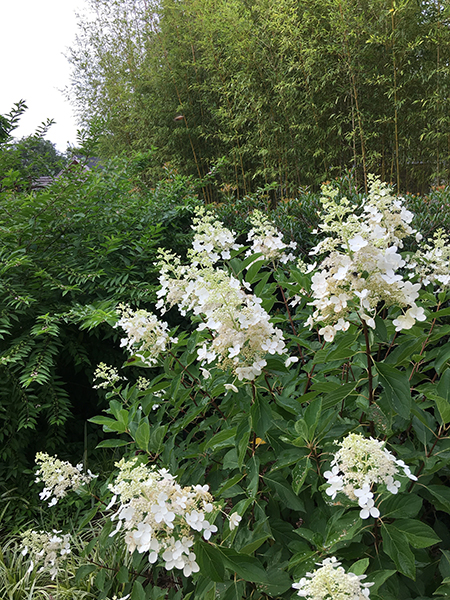

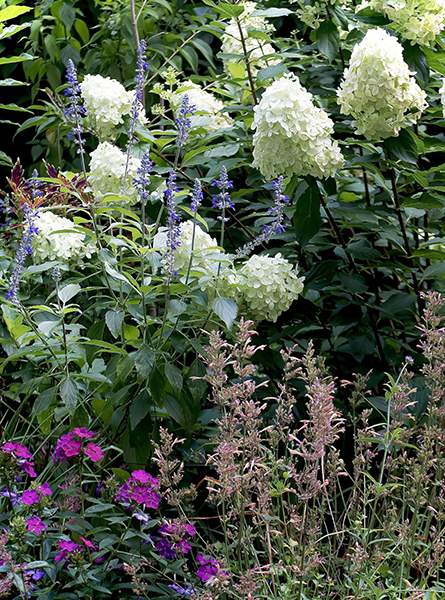
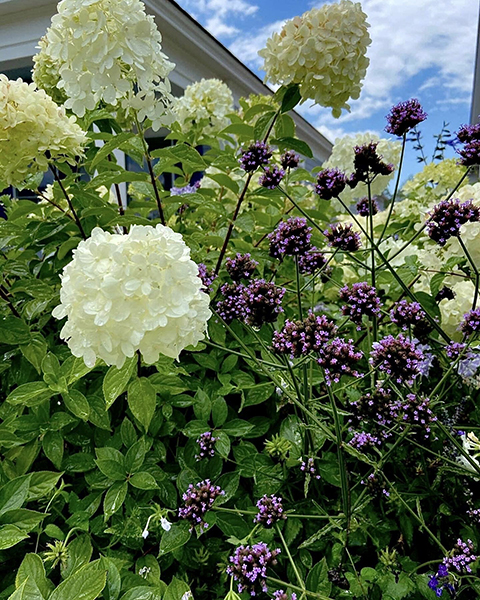

 Storm Cloud amsonia is the Landscape Perennial of the Year for 2024 and is found naturally in areas that you might say are Mother Nature’s Rain Garden.
Storm Cloud amsonia is the Landscape Perennial of the Year for 2024 and is found naturally in areas that you might say are Mother Nature’s Rain Garden. Tuscan Sun heliopsis or perennial sunflower has won 32 awards across the country and
Tuscan Sun heliopsis or perennial sunflower has won 32 awards across the country and 

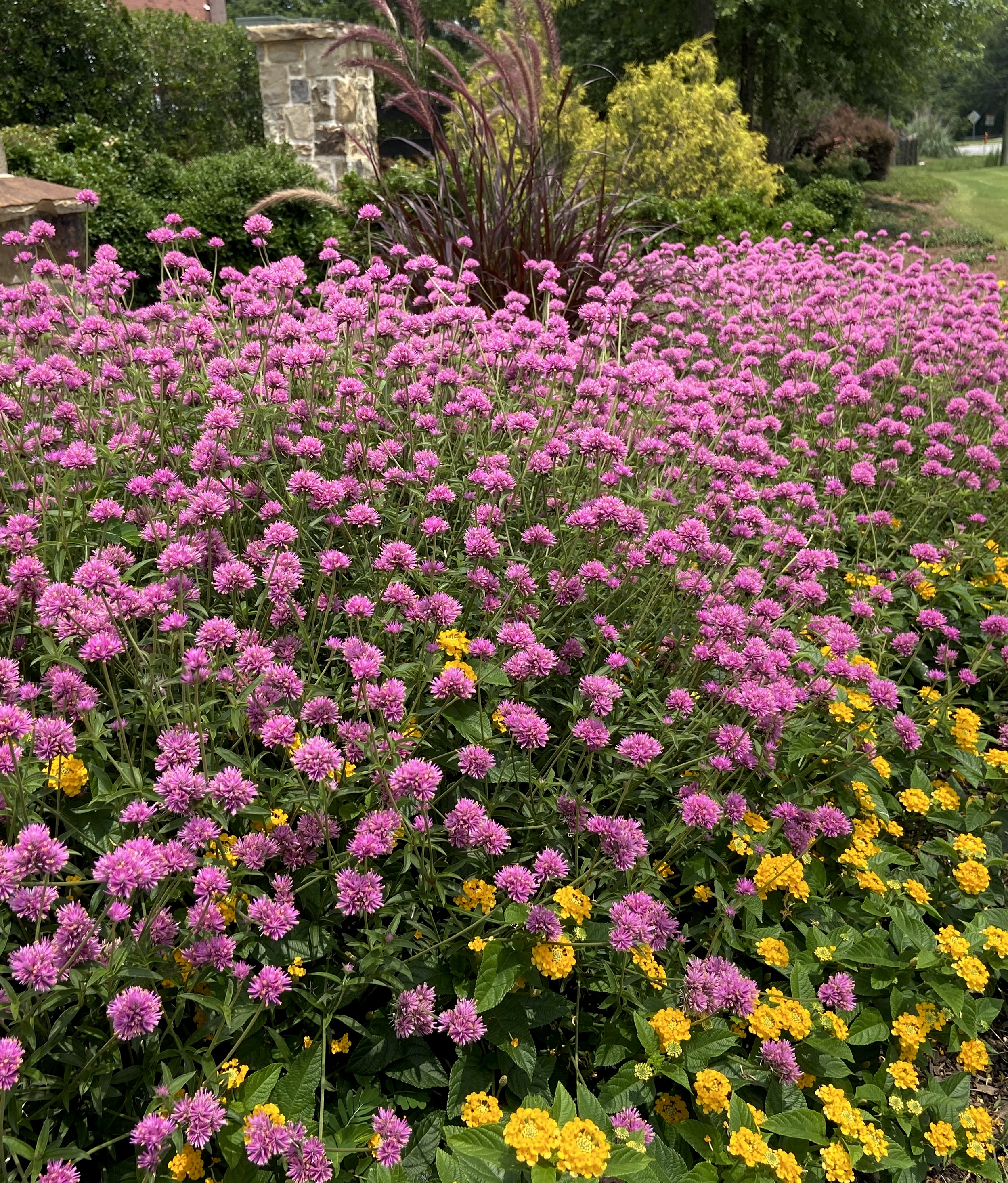 Truffula™ Pink gomphrena is recognized as one of
Truffula™ Pink gomphrena is recognized as one of  Truffula™ Pink gomphrena is recognized
Truffula™ Pink gomphrena is recognized 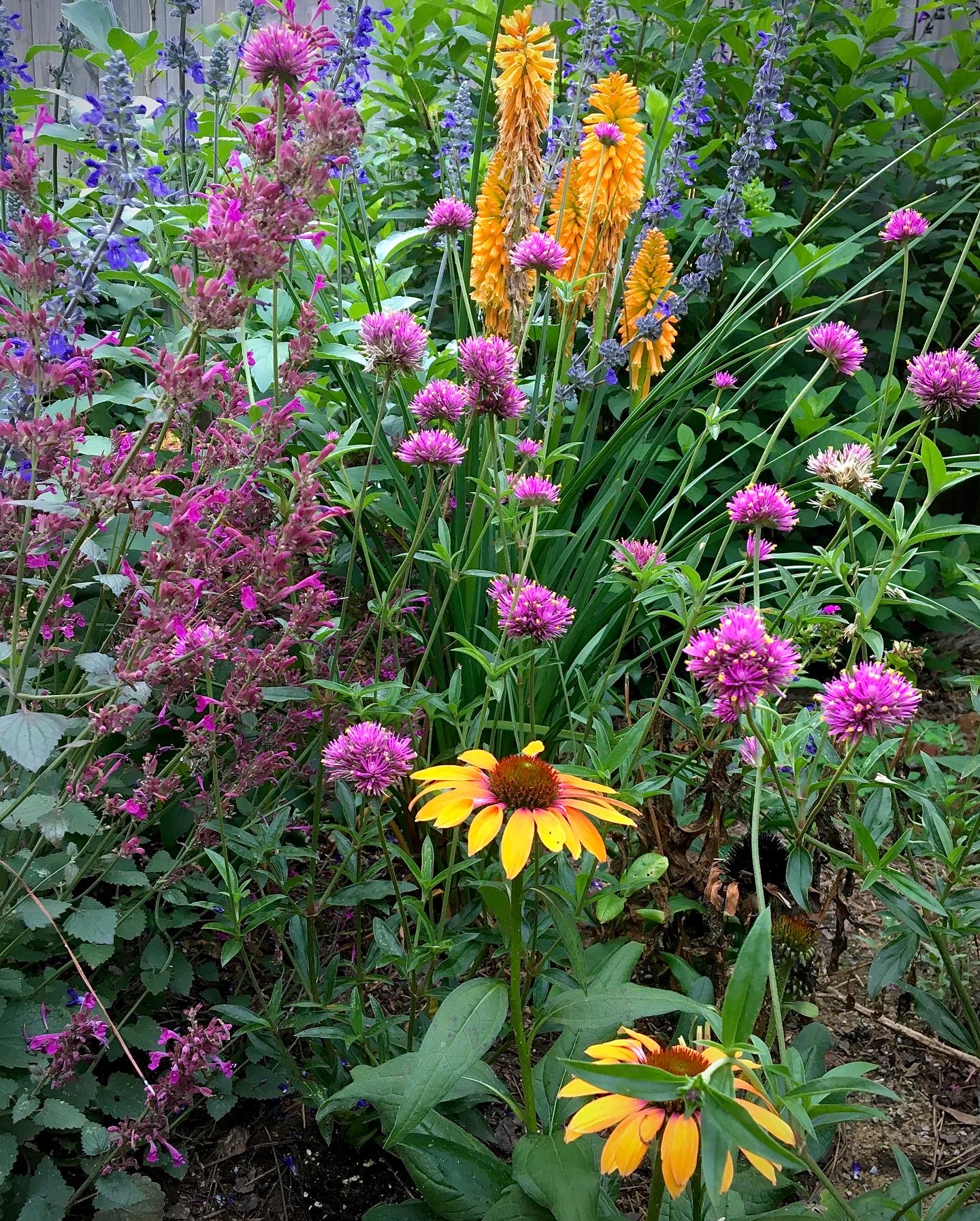 Truffula™ Pink gomphrena is the quintessential cottage or habitat flower, and is partnered here with Rockin’® Playin’ the Blues salvia, Pyromania® ‘Orange Blaze’ torch lily, Meant to Bee® ‘Royal Raspberry’ salvia and Color Coded® ‘One in a Melon’ echinacea.
Truffula™ Pink gomphrena is the quintessential cottage or habitat flower, and is partnered here with Rockin’® Playin’ the Blues salvia, Pyromania® ‘Orange Blaze’ torch lily, Meant to Bee® ‘Royal Raspberry’ salvia and Color Coded® ‘One in a Melon’ echinacea. The Temple of Bloom®, seven-son flower, yields thousands of fragrant white flowers in late summer attracting bees, butterflies and hummingbirds. Here a Red-banded Hairstreak has placed it on the menu.
The Temple of Bloom®, seven-son flower, yields thousands of fragrant white flowers in late summer attracting bees, butterflies and hummingbirds. Here a Red-banded Hairstreak has placed it on the menu. The Temple of Bloom® produces an uncountable number of fragrant flowers. It seems everywhere you look is a butterfly, wasp or bee. This cluster of blooms has an Eastern Tiger Swallowtail and two Red-banded Hairstreaks below.
The Temple of Bloom® produces an uncountable number of fragrant flowers. It seems everywhere you look is a butterfly, wasp or bee. This cluster of blooms has an Eastern Tiger Swallowtail and two Red-banded Hairstreaks below. The Temple of Bloom® is like the proverbial tree of life with bees, butterflies, hummingbirds, wasps and of course the hunter too! Here a Green Anole lizard has a Red-banded Hairstreak in his focus.
The Temple of Bloom® is like the proverbial tree of life with bees, butterflies, hummingbirds, wasps and of course the hunter too! Here a Green Anole lizard has a Red-banded Hairstreak in his focus. When the white petals fall, The Temple of Bloom® starts a new phase where a small purple/red fruit is formed and the remaining calyces elongate and turn vivid red.
When the white petals fall, The Temple of Bloom® starts a new phase where a small purple/red fruit is formed and the remaining calyces elongate and turn vivid red. The Garden Guy coming up the driveway at night saw that the headlights illuminated an Eastern Tiger Swallowtail feeding. This photo was taken with an automatic flash.
The Garden Guy coming up the driveway at night saw that the headlights illuminated an Eastern Tiger Swallowtail feeding. This photo was taken with an automatic flash. Hairstreak butterflies are among our smallest. Here a Red-banded Hairstreak is seen in comparison to an Eastern Carpenter Bee visiting the Temple of Bloom flowers.
Hairstreak butterflies are among our smallest. Here a Red-banded Hairstreak is seen in comparison to an Eastern Carpenter Bee visiting the Temple of Bloom flowers.



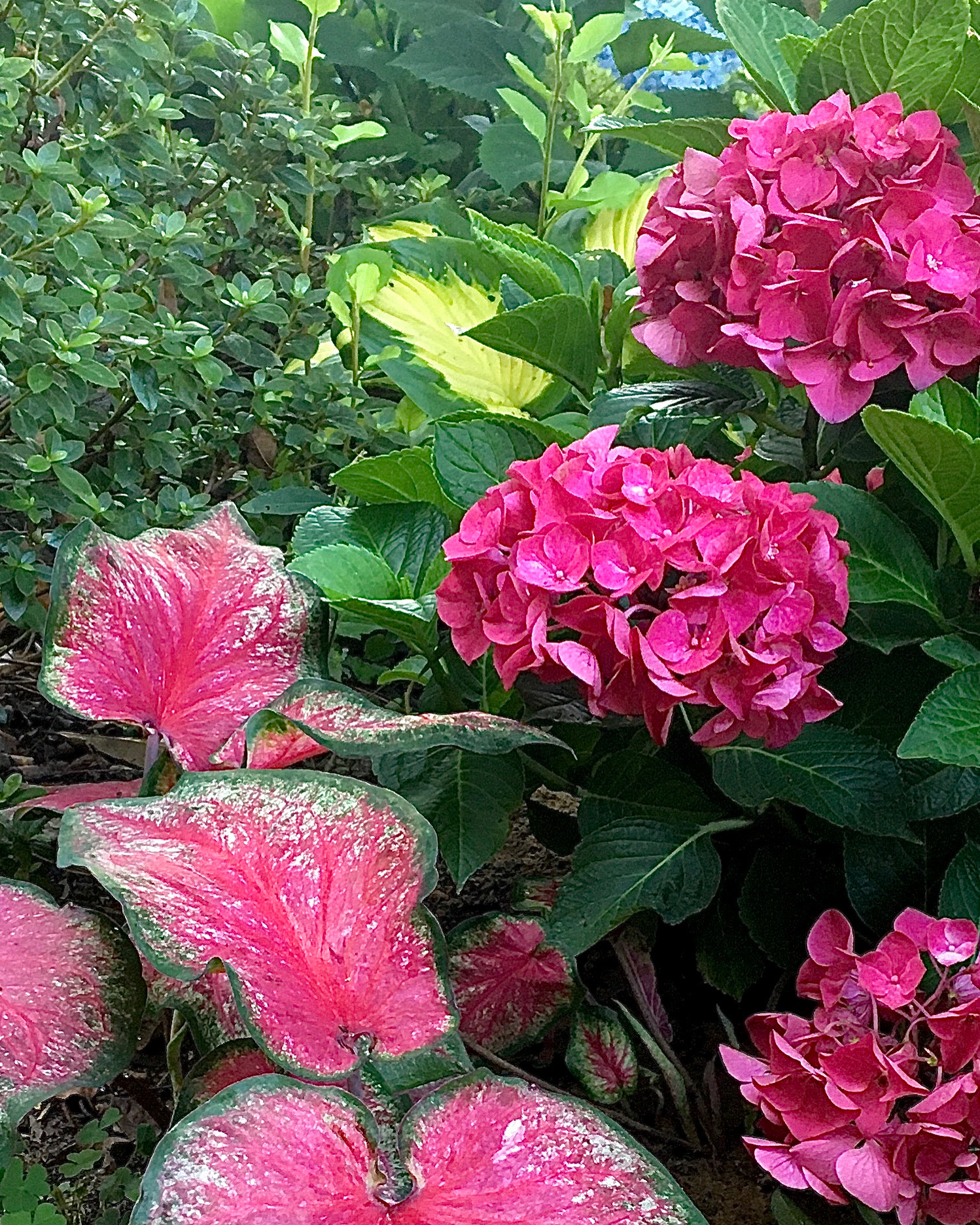



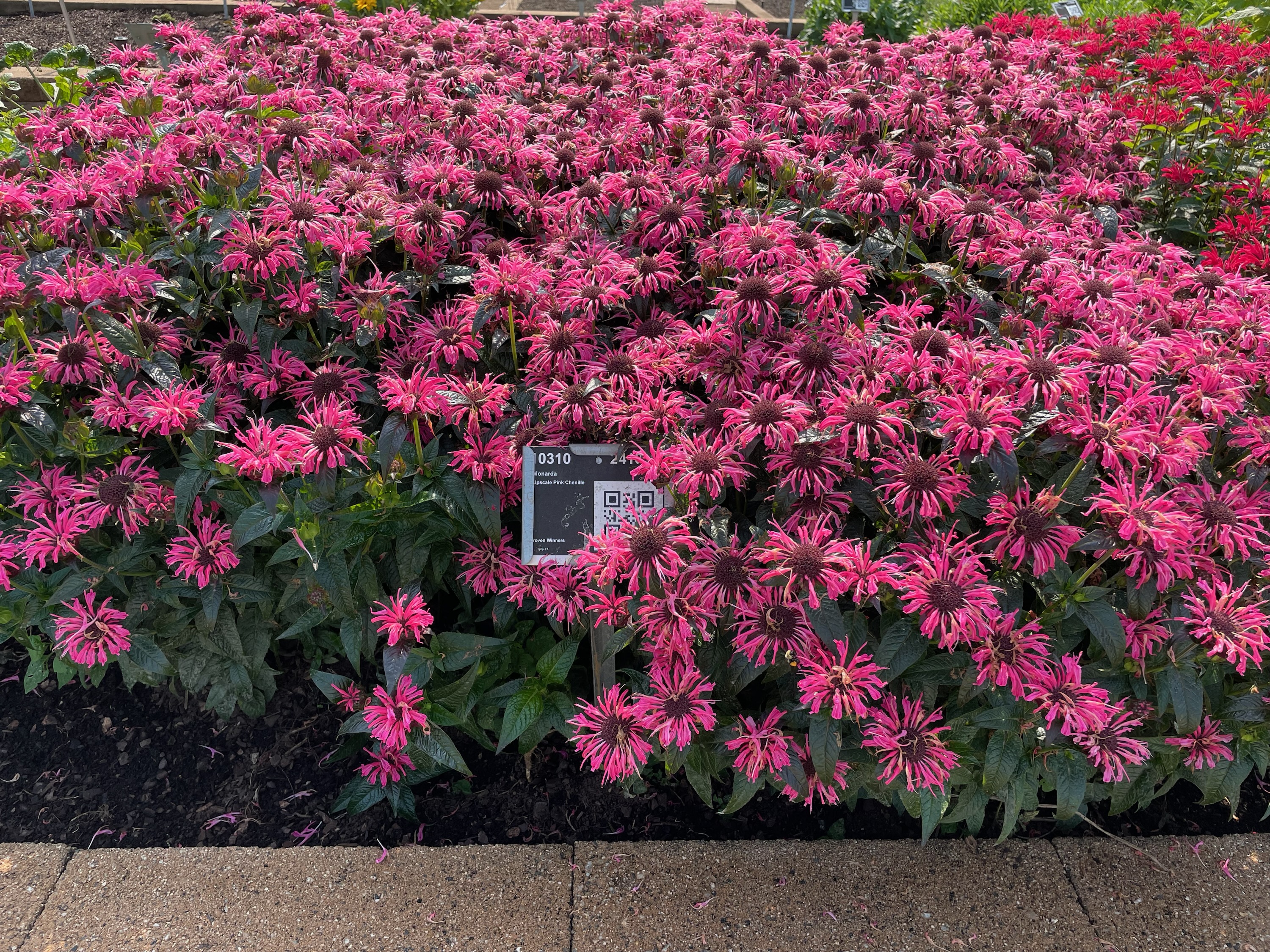
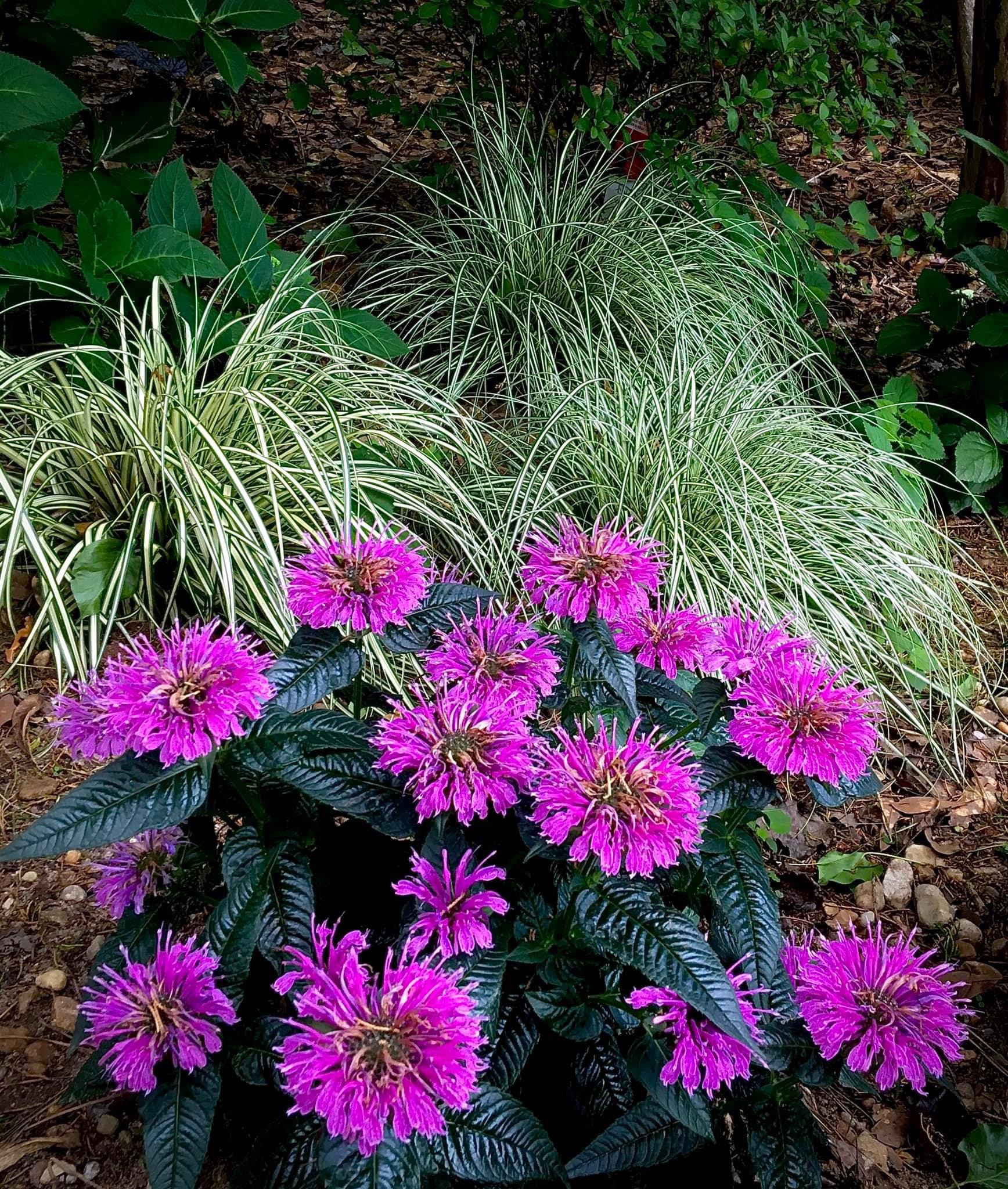
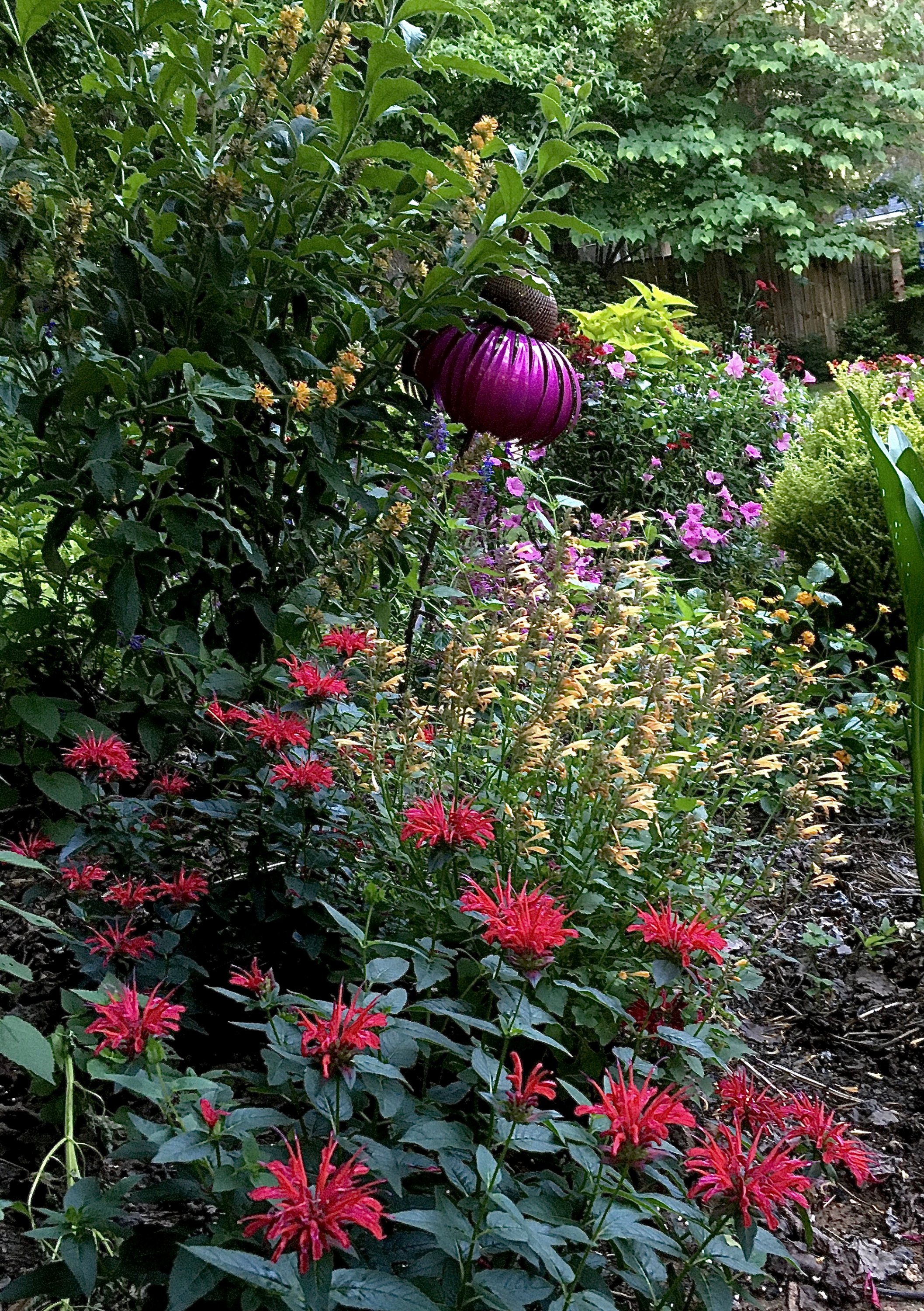





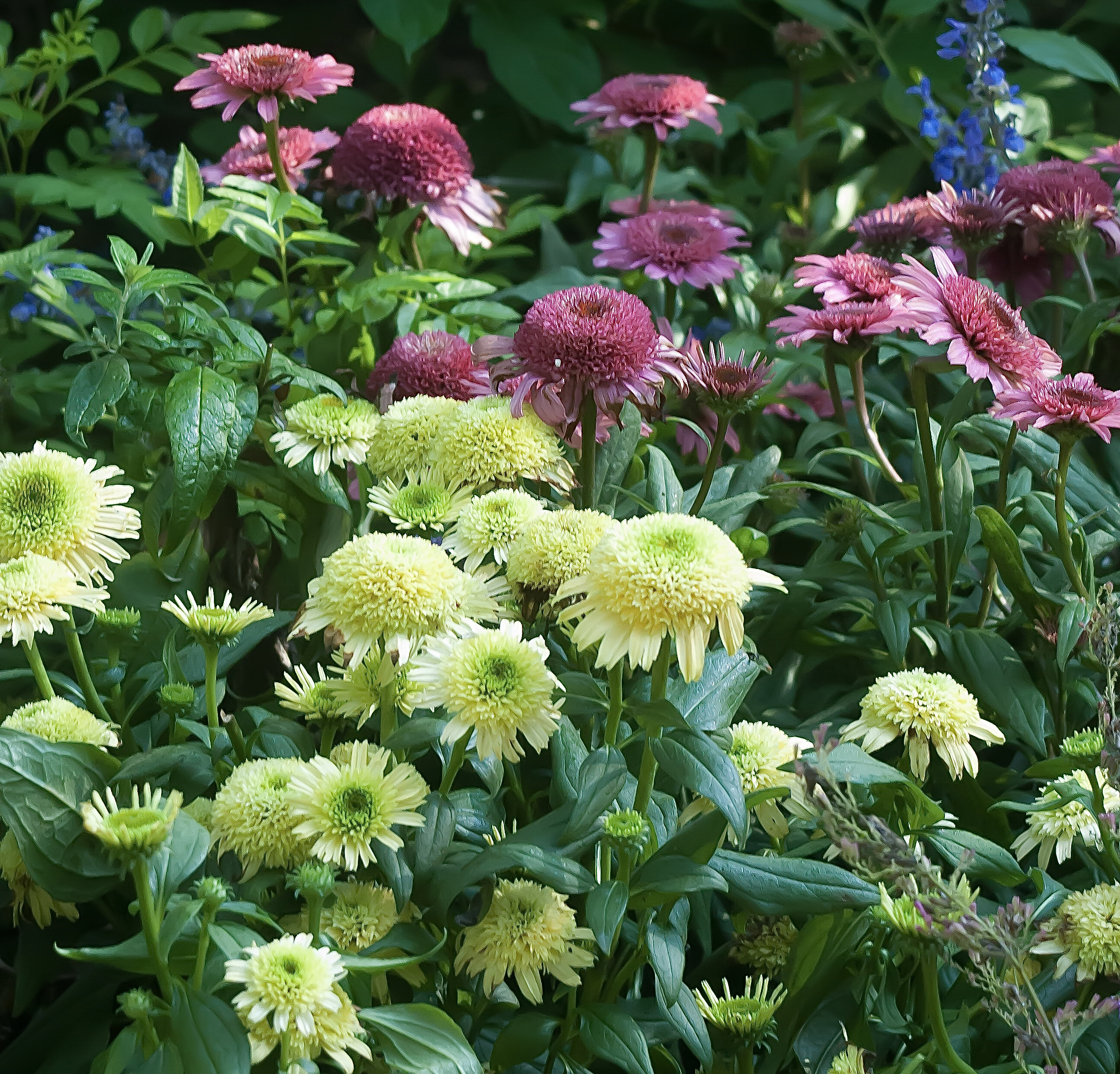
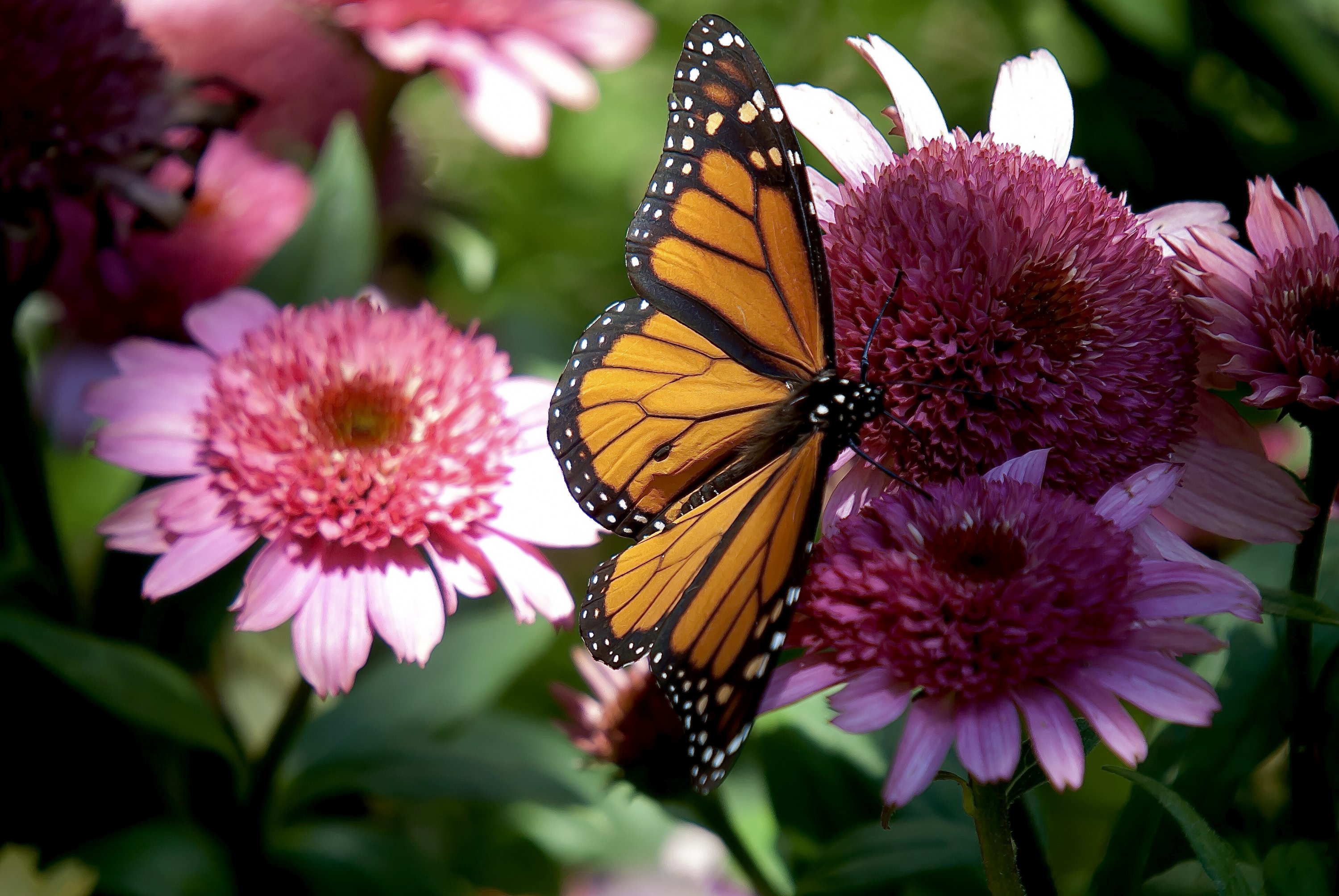

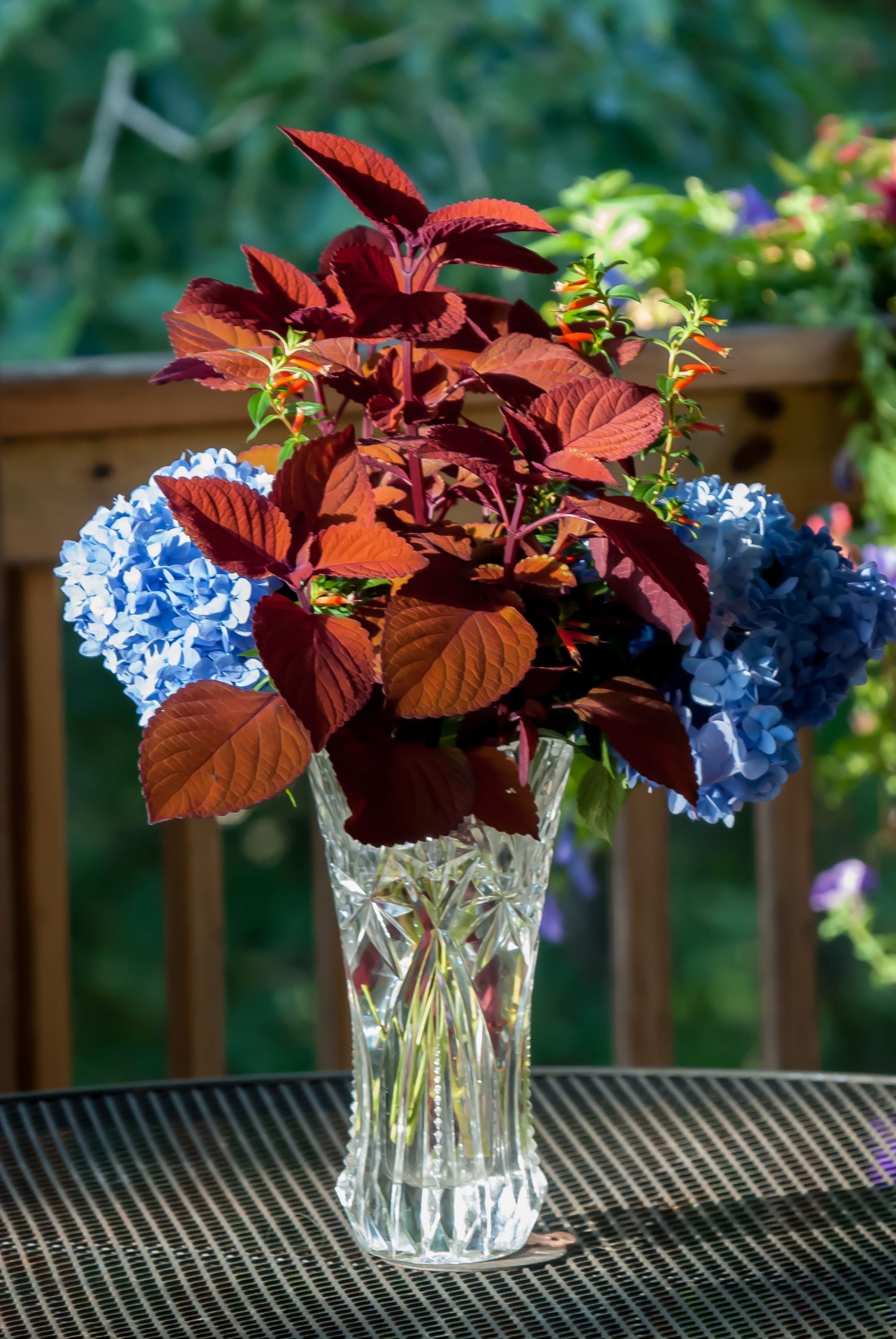



 Primo® 'Wild Rose' heuchera shouts look at me in this mixed
Primo® 'Wild Rose' heuchera shouts look at me in this mixed 


 Supertunia Vista Bubblegum petunia and Superbells Grape Punch calibrachoa come together to create a container that features many gardeners favorite colors.
Supertunia Vista Bubblegum petunia and Superbells Grape Punch calibrachoa come together to create a container that features many gardeners favorite colors. Reminiscent™ Coral
Reminiscent™ Coral  Reminiscent™ Pink
Reminiscent™ Pink
